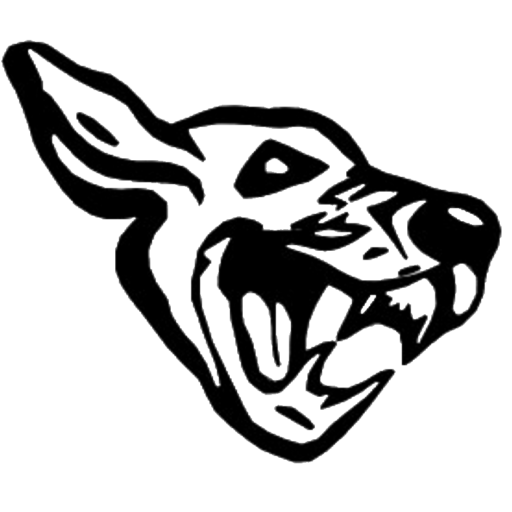Benjamin Abramson
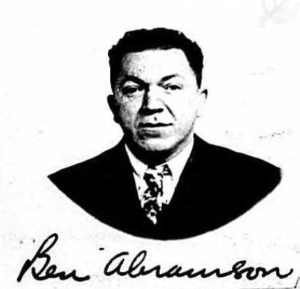 Ben Abramson was born August 24, 1898 in Kadenei, Lithuania. The American Book Collector noted that he “came from a large, old-world, orthodox Lithuanian family that emigrated to this country when he was but a few years old [1901]…[to] the teeming, crowded westside of Chicago at the turn of the century; from a childhood of desperation and need, through a youth of formal education that ended when he was 11.” He was an avid reader, however, learning bookselling at Economy Books and McClurg’s Bookstore, and opening his own Argus Book Shop in 1923, selling new and used books in what Vincent Starrett called “a sort of tavern for his friends.” He and The Argus attracted booklovers and writers such as Starrett, Somerset Maugham, Christopher Morley, John Steinbeck, and Ben Hecht, to name some of the better known. He published his own periodical Reading and Collecting beginning in 1936, and also Christopher Morley’s Old Loopy: A Love Letter for Chicago, Vincent Starrett’s Books and Bipeds, and Jay Finley Christ’s Irregular Guide to Sherlock Holmes of Baker Street. Abramson attended the first Hounds dinner in 1944. He moved to New York later that year and in 1946 began publishing The Baker Street Journal, edited by Edgar W. Smith. After the 13 issues now known as the “Original Series,” he was forced to discontinue the financially ruinous project. That year, 1949, he moved to Mohegan Lake NY, and was invested as “The Beryl Coronet” in The Baker Street Irregulars. He returned to Chicago in 1953 and reopened his Argus Book Shop there. In 1955 he and Starrett published William Gillette’s playlet The Painful Predicament of Sherlock Holmes. Abramson died July 16th, 1955 in Chicago, and his ashes were scattered on the steps of The Newberry Library.
Ben Abramson was born August 24, 1898 in Kadenei, Lithuania. The American Book Collector noted that he “came from a large, old-world, orthodox Lithuanian family that emigrated to this country when he was but a few years old [1901]…[to] the teeming, crowded westside of Chicago at the turn of the century; from a childhood of desperation and need, through a youth of formal education that ended when he was 11.” He was an avid reader, however, learning bookselling at Economy Books and McClurg’s Bookstore, and opening his own Argus Book Shop in 1923, selling new and used books in what Vincent Starrett called “a sort of tavern for his friends.” He and The Argus attracted booklovers and writers such as Starrett, Somerset Maugham, Christopher Morley, John Steinbeck, and Ben Hecht, to name some of the better known. He published his own periodical Reading and Collecting beginning in 1936, and also Christopher Morley’s Old Loopy: A Love Letter for Chicago, Vincent Starrett’s Books and Bipeds, and Jay Finley Christ’s Irregular Guide to Sherlock Holmes of Baker Street. Abramson attended the first Hounds dinner in 1944. He moved to New York later that year and in 1946 began publishing The Baker Street Journal, edited by Edgar W. Smith. After the 13 issues now known as the “Original Series,” he was forced to discontinue the financially ruinous project. That year, 1949, he moved to Mohegan Lake NY, and was invested as “The Beryl Coronet” in The Baker Street Irregulars. He returned to Chicago in 1953 and reopened his Argus Book Shop there. In 1955 he and Starrett published William Gillette’s playlet The Painful Predicament of Sherlock Holmes. Abramson died July 16th, 1955 in Chicago, and his ashes were scattered on the steps of The Newberry Library.
Biographical information provided courtesy of Julie McKuras and Jon Lellenberg.
♦
Rudolph Alan ‘Rudy’ Altergott, Jr
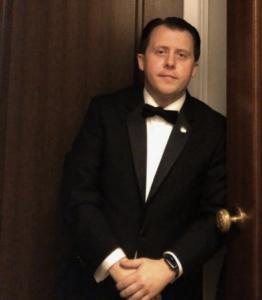 Rudolph Alan ‘Rudy’ Altergott, Jr. is a lifelong Chicagoland area resident who discovered the Sherlockian community through a fellow Freemason, a certain Young Stamford (Terry McCammon, BSI), in late 2017. A year later, on Guy Fawkes Night 2018, he somehow survived the dreaded oral tripos exam of Hugo’s Companions and joined his first scion. Rudy was invested as a Hound in October 2022. His earlier exposure to Holmes was limited to watching Disney’s The Great Mouse Detective (1986), Cushing and Lee in The Hound of the Baskervilles (1959), and the two Guy Ritchie films. Ritchie’s A Game of Shadows (2011) sparked his first serious inkling of canonical interest.
Rudolph Alan ‘Rudy’ Altergott, Jr. is a lifelong Chicagoland area resident who discovered the Sherlockian community through a fellow Freemason, a certain Young Stamford (Terry McCammon, BSI), in late 2017. A year later, on Guy Fawkes Night 2018, he somehow survived the dreaded oral tripos exam of Hugo’s Companions and joined his first scion. Rudy was invested as a Hound in October 2022. His earlier exposure to Holmes was limited to watching Disney’s The Great Mouse Detective (1986), Cushing and Lee in The Hound of the Baskervilles (1959), and the two Guy Ritchie films. Ritchie’s A Game of Shadows (2011) sparked his first serious inkling of canonical interest.
Born on 1 April 1990 at Loyola University Medical Center, where his parents had met in medical school, Rudy grew up in suburban Hinsdale, attending parochial school and Hinsdale Central High School. In 2013, he completed his undergraduate work in Political Science at Wabash College where he had been active in campus leadership and remains heavily involved in its alumni affairs. Initially working after college in political campaigns for a suburban Republican and urban Democrats, Rudy then gained employment as an office services clerk at a Chicago law firm in late 2016. Leaving in 2019, just before the COVID-19 pandemic, he began a wilderness period that proved to be beneficial for his intellectual and creative growth and the beginning of his serious book collecting, encouraged by Sherlockian friends.
Rudy belongs to many other scions around the world, most intimately the Torists
International (in Chicago) and the Illustrious Clients of Indianapolis. A lover of history and a concerned internationalist, he is also a proud member of local institutions like the Pritzker Military Museum & Library and the Chicago Council on Global Affairs. He is an equally proud member of local Masonic groups (like Oriental Lodge No. 33 and LaFayette Chapter No. 2, the two oldest Masonic bodies in Chicago) and the Caxton Club, a Chicago bibliophilic society once led by Dr. C. Frederick Kittle, M.D., BSI (‘Jack Stapleton’) which had counted Hounds co-founder Vincent Starrett and BSI founder Christopher Morley as honorary members. Dr. Kittle, a Hound and eminent Sherlockian and Doylean, was also a prominent cardiothoracic surgeon like Rudy’s hero and ‘co-pilot’, Dr. Rudy Altergott, Sr., demonstrating the Altergott trait for proving the world’s
smallness, not unlike Sherlock Holmes.
Rudy’s canonical research interests vary, most notably including espionage and secret societies.
♦
Clifton A. Andrew
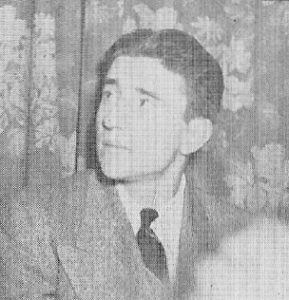 Clifton A. Andrew was born April 9, 1920 in Akron OH. He worked at People’s Drug in Akron before taking a job in 1941 at Columbia Chemical. He opened the Arlington Bake Shop in 1946. He was a member of The Scandalous Bohemians of Akron and attended a number of The Baker Street Irregulars dinners with his father, Clifton R. Andrew. He died Nov. 14, 1994 in Runnemede, New Jersey.
Clifton A. Andrew was born April 9, 1920 in Akron OH. He worked at People’s Drug in Akron before taking a job in 1941 at Columbia Chemical. He opened the Arlington Bake Shop in 1946. He was a member of The Scandalous Bohemians of Akron and attended a number of The Baker Street Irregulars dinners with his father, Clifton R. Andrew. He died Nov. 14, 1994 in Runnemede, New Jersey.
Biographical information provided courtesy of Julie McKuras.
♦
♦
Clifton R. Andrew
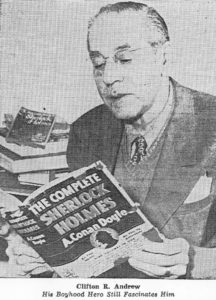
Clifton Robert Andrew was born April 10, 1892 in Akron OH. As a young man, Andrew worked as a correspondent for the Goodyear Tire and Rubber Company. In the 1930 federal census he’s listed as a salesman for a telephone company, later identified as Ohio Bell, and by 1940 was a real estate man. His World War II draft card shows him as employed by the Akron W.P.A.; during the war he worked at an airplane factory. A 1948 article in the Akron Beacon-Journal recorded him as an “evening clerk at the Congress Hotel” and later a “clerk at Congress Lake Country Club.” (Lellenberg, p. 230) Interested in politics, he served as a Democrat precinct committee his ward. Andrew wrote several columns for the Summit County Democrat for a few years and had a regular program on a local radio station in which he commented upon the mystery book scene. Andrew moved to Chicago in 1960 and became a member of The Hounds that same year. He was the founder and Gasogene of The Scandalous Bohemians of Akron in 1943, and was also a member of The Six Napoleons, The Musgrave Ritualists, The Trained Cormorants of Los Angeles, and Hugo’s Companions. He founded the Scion Societies Luncheon (later renamed The William Gillette Memorial Luncheon) in 1945 and is toasted each year. In 1950 he received the investiture of “Shoscombe Old Place” from the Baker Street Irregulars. Jon Lellenberg referred to him as “the archetypal Scionist.” (p. 2) He contributed Sherlockian articles including his “Sherlock Holmes on the Turf” to A Baker Street Four-Wheeler and to The Baker Street Journal. Andrew died on December 19, 1963 and is buried in Mount Peace Cemetery in Hartville, OH.
Biographical information provided courtesy of Julie McKuras.
♦
Constantine “Dino” Argyropoulos
 Dino Argyropoulos bought his first book, with his allowance, from his School Book Fair, in 1955. It was a copy of the Whitman Adventures of Sherlock Holmes, illustrated by Cheslie D’Andrea. It was the beginning of a beautiful friendship. Though he didn’t get involved with Sherlockian folk until late in life, he’d been hooked since he was ten years old.
Dino Argyropoulos bought his first book, with his allowance, from his School Book Fair, in 1955. It was a copy of the Whitman Adventures of Sherlock Holmes, illustrated by Cheslie D’Andrea. It was the beginning of a beautiful friendship. Though he didn’t get involved with Sherlockian folk until late in life, he’d been hooked since he was ten years old.
Dino is a retired Chicago Public Schools Teacher-Librarian. His love of books, music and pipes, consumes his time and wallet. His membership in the Chicagoland Pipe Collectors Club sparked a conversation with fellow member Al Shaw. Al immediately recognized Dino’s deep interest in things Sherlockian, and invited him to join Hugo’s Companions. That was the beginning of another beautiful friendship.
Dino now serves as the Most Drunken Companion (Secretary) of Hugo’s, and has been awarded the “Horace Harker Award” for his work on The Grimpen Mire Gazette, the scion’s publication. His wife, Linda, has been honored as the Companions’ 2017 “Yeoman’s Daughter.” Included in the Hounds “Pack” in 2017, Dino is also a member of The Torists, The Criterion Bar, and the Sherlockian Brunch Club. By the way, only the “authorities” call him Constantine. He’s Dino to all his friends.
♦
George Armstrong

George Douglas Armstrong, Jr. was born May 26, 1927 in Evanston IL. Armstrong was an Anglophile from an early age, having been introduced “to the glamour of ‘the empire’ under Queen Victoria – including our friends at 221B Baker Street” by his English father. He painted “intricate drawings of the soldiers – especially the Scottish Highland regiments. At age 12 he begged to be allowed to play the bagpipes and this changed his life – leading him on to one of his most productive arenas in adulthood as a performer and musicologist.” (Rebecca Armstrong)
He served in the U.S. Army 1945-47. Armstrong was a freelance artist and illustrator, specializing in maps and historically accurate illustrations of Native American Indians for educational publishers and Encyclopedia Britannica. He was also a folk singer and hosted “The Wandering Folksong” show on WFMT in the late 70s.” The U of Chicago Regenstein Library holds a set of approximately 250 taped programs from the program. “He traditionally opened the annual University of Chicago Folk Festival with a bagpipe solo.” (Chicago Tribune) With his wife Gerry they recorded four albums on the Folkway and Folk Legacy labels. Studs Terkel, his longtime friend, called him “one of the unsung musicologists of our time.” He belonged to Hugo’s Companions and served as their Drunken Piper and Most Bold Companion, and often entertained the Companions and the Hounds by playing the bagpipes and singing, sometimes accompanied by his wife. His BSJ obituary stated “He drew the Hounds and Companion letterhead, showing a fearsome hound and Sir Hugo and his wicked companions.” He shared his love of Sherlock Holmes with his two daughters, often reading the Canon to them. His daughter Rebecca remembers him reading The Hound of the Baskervilles aloud and ending one session with the immortal line “Mr. Holmes, they were the footprints of a gigantic hound!” garnering shrieks from his appreciative daughters, and wearing his Inverness cape and deerstalker cap to meetings of the Hounds. He received the investiture of Wiggins from the Baker Street Irregulars in 1984 and later agreed to a new investiture of John O’Groats. Armstrong died July 5, 1993 in Wilmette, IL.
Biographical information provided courtesy of Julie McKuras.
♦
Frank M. Balas
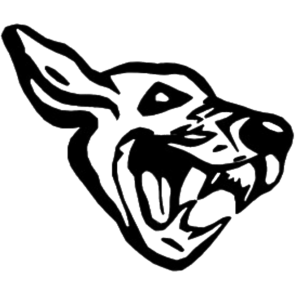 Frank M. Balas was born November 16, 1949 in Chicago IL. His death certificate indicates he was a self-employed book researcher. He was also a member of Hugo’s Companions, serving as their treasurer, the Most Drunken Companion in 1983. Balas died on August 26, 2010 in Evansville, IN.
Frank M. Balas was born November 16, 1949 in Chicago IL. His death certificate indicates he was a self-employed book researcher. He was also a member of Hugo’s Companions, serving as their treasurer, the Most Drunken Companion in 1983. Balas died on August 26, 2010 in Evansville, IN.
Biographical information provided courtesy of Julie McKuras.
♦
♦
Robert J. Bayer
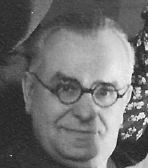
Robert John Bayer was born July 27, 1896 in St. Paul, MN. He started his career in journalism “as a copy boy in St. Paul Minn. He once worked for the city news bureau here and for the old Chicago Evening Post. He worked for Traffic World (a magazine focused on government relations, for truck, rail, air and ocean shipping) for many years as a reporter, circulation manager and assistant to the editor, and also worked for other trade magazines. He was the winner of the American Trucking Association’s award for promoting progress in transportation and in 1953 was named the Traffic Man of the Year by Delta Nu Alpha transportation fraternity.” (Chicago Tribune) Bayer is noted as the “first to discover that Holmes appears in Chesterton’s Father Brown tale ‘The Man with Two Beards.’” (Baker Street Journal, December 1990) He wrote of the two detectives “that they not only met but actually collaborated on a case” (Gardner) and presented his paper “at a 1947 meeting in Chicago of The Hounds of the Baskerville [sic].” (ibid) He was a “key” member of The Hounds, and as Don Terras wrote in The Hounds online history, “Bayer had handled all of the Hounds business matters and was in all respects performing as Master of the Hounds.” Bayer died on June 5, 1956 in LaGrange IL. The Robert John Bayer Memorial Chesterton Collection is held at the G. K. Chesterton Room at John Carroll University.
Biographical information provided courtesy of Julie McKuras.
♦
Ron Becker

Ronald H. Becker was born Dec. 16, 1934 in Cook County, Illinois. He was a real estate appraiser and a member of Chicago’s Ely Chapter of the Lambda Alpha Society, a group focused on land economics. He was named the Most Drunken Companion of Hugo’s Companions in the 1990’s and worked on their Grimpen Mire Gazette. He died in June 2019 in Cook County, Illinois.
Biographical information provided courtesy of Julie McKuras.
♦
♦
Phil Bergem
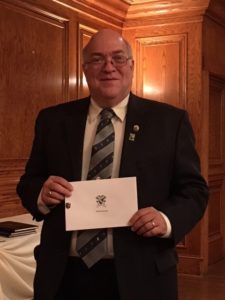 Phillip Bergem has been an avid reader from an early age, although attempts in his youth to introduce him to the Sherlock Holmes tales were unsuccessful as his literary tastes at the time went in a different direction. During his High School years his family lived in northeast England. Although this was before his interest in Sherlock Holmes, he did develop a collecting mania for several science fiction authors, and became familiar with English customs, geography (especially that of London) and British English, all of which have helped in later years with Sherlockain studies. His fascination with the Canon and the writings of Arthur Conan Doyle began in the late 1980s with the Granada series. He joined the Norwegian Explorers of Minnesota in 1989 and his activity gradually changed from an interest, to a passion and eventually to an obsession. His particular interests are The Strand Magazine, Beeton’s Christmas Annuals, and the writings and life of Arthur Conan Doyle. He has worked on several books for the Norwegian Explorers, has lately contributed to several volumes of the Baker Street Irregulars Manuscript Series and is currently editor of the Norwegian Explorers’ newsletter, Explorations. He was invested in The Baker Street Irregulars as Birdy Edwards in 2012 and was made a Hound in 2017.
Phillip Bergem has been an avid reader from an early age, although attempts in his youth to introduce him to the Sherlock Holmes tales were unsuccessful as his literary tastes at the time went in a different direction. During his High School years his family lived in northeast England. Although this was before his interest in Sherlock Holmes, he did develop a collecting mania for several science fiction authors, and became familiar with English customs, geography (especially that of London) and British English, all of which have helped in later years with Sherlockain studies. His fascination with the Canon and the writings of Arthur Conan Doyle began in the late 1980s with the Granada series. He joined the Norwegian Explorers of Minnesota in 1989 and his activity gradually changed from an interest, to a passion and eventually to an obsession. His particular interests are The Strand Magazine, Beeton’s Christmas Annuals, and the writings and life of Arthur Conan Doyle. He has worked on several books for the Norwegian Explorers, has lately contributed to several volumes of the Baker Street Irregulars Manuscript Series and is currently editor of the Norwegian Explorers’ newsletter, Explorations. He was invested in The Baker Street Irregulars as Birdy Edwards in 2012 and was made a Hound in 2017.
♦
John Stevens Berry
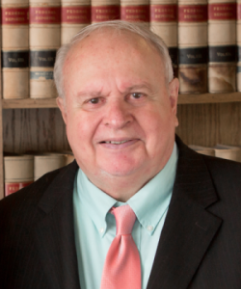 John Stevens Berry Sr. is a native of Onawa, Iowa. He received his BA in English from Stanford University, his JD from Northwestern University and was admitted to the Nebraska State Bar in 1965. A graduate of the Infantry Officer School in Fort Benning, GA and Judge Advocates General’s Legal Center and School, Berry served as a Captain in Vietnam where he was defense counsel with a number of regiments and divisions. He was awarded the Bronze Star, the Vietnamese Medal of Honor and the Vietnamese Cross of Gallantry. Notably, he was chief defense counsel Chief Defense Counsel in a General Court Martial jurisdiction including over 80,000 soldiers and wrote the book Those Gallant Men: On Trial in Vietnam recounting one of his best known cases which was published in 1984 and was a Military Book Club Award Winner. After his military career he practiced law in New York before returning to Lincoln NE. He is the founder of the Berry Law Firm in Lincoln where he specializes in criminal defense and veteran appeals as well as other areas. Berry has appeared in court in 24 states and 2 foreign countries, and lectured at the Judge Advocate General’s School at the U of Virginia on issues regarding criminal defense in the military. His affiliation with numerous professional associations are too numerous to mention. In addition to his book Those Gallant Men, he co-authored The Twelfth Victim: The Innocence of Caril Fugate in the Starkweather Murder Rampage. He is the recipient of The FBI Award for Service in the Public Interest. In addition to his legal career, he hosted The John Stevens Berry Show on the radio for a number of years.
John Stevens Berry Sr. is a native of Onawa, Iowa. He received his BA in English from Stanford University, his JD from Northwestern University and was admitted to the Nebraska State Bar in 1965. A graduate of the Infantry Officer School in Fort Benning, GA and Judge Advocates General’s Legal Center and School, Berry served as a Captain in Vietnam where he was defense counsel with a number of regiments and divisions. He was awarded the Bronze Star, the Vietnamese Medal of Honor and the Vietnamese Cross of Gallantry. Notably, he was chief defense counsel Chief Defense Counsel in a General Court Martial jurisdiction including over 80,000 soldiers and wrote the book Those Gallant Men: On Trial in Vietnam recounting one of his best known cases which was published in 1984 and was a Military Book Club Award Winner. After his military career he practiced law in New York before returning to Lincoln NE. He is the founder of the Berry Law Firm in Lincoln where he specializes in criminal defense and veteran appeals as well as other areas. Berry has appeared in court in 24 states and 2 foreign countries, and lectured at the Judge Advocate General’s School at the U of Virginia on issues regarding criminal defense in the military. His affiliation with numerous professional associations are too numerous to mention. In addition to his book Those Gallant Men, he co-authored The Twelfth Victim: The Innocence of Caril Fugate in the Starkweather Murder Rampage. He is the recipient of The FBI Award for Service in the Public Interest. In addition to his legal career, he hosted The John Stevens Berry Show on the radio for a number of years.
Berry has been a fan of Sherlock Holmes since he was in grade school. He received the investiture of “The Hammerford Will Case” from The Baker Street Irregulars in 1980. He is a long time member of the Maiwand Jezails, as are his three sons, and has enjoyed meeting with fellow Sherlockians throughout the United States, including Moriarty NM with John Bennett Shaw, Chicago, New York and Hollywood as well as in Tokyo and London. Berry is very proud of the monument temporarily erected by Jezails, with his son Rory as part of the effort, in Afghanistan at the precise location of Dr. Watson’s heroic service at the time he was wounded.
♦
Raymond Betzner
R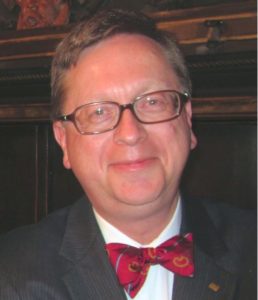 ay Betzner is the Associate Vice President for Executive Communications at Temple University in Philadelphia. A native of the Pittsburgh area, he has been a member of The Scion of the Four in Morgantown, W.Va., and was co-founder of The Cremona Fiddlers of Williamsburg. He is currently Comptroller of the Kennel for The Sons of the Copper Beeches in Philadelphia. In 1987, he was invested as “The Agony Column” in The Baker Street Irregulars and is a Morley-Montgomery Award winner. To celebrate the 75th anniversary of Vincent Starrett’s seminal The Private Life of Sherlock Holmes, Ray edited a new edition for Wessex Press. He has spoken at numerous events about Starrett, and blogs about him at www.vincentstarrett.com.
ay Betzner is the Associate Vice President for Executive Communications at Temple University in Philadelphia. A native of the Pittsburgh area, he has been a member of The Scion of the Four in Morgantown, W.Va., and was co-founder of The Cremona Fiddlers of Williamsburg. He is currently Comptroller of the Kennel for The Sons of the Copper Beeches in Philadelphia. In 1987, he was invested as “The Agony Column” in The Baker Street Irregulars and is a Morley-Montgomery Award winner. To celebrate the 75th anniversary of Vincent Starrett’s seminal The Private Life of Sherlock Holmes, Ray edited a new edition for Wessex Press. He has spoken at numerous events about Starrett, and blogs about him at www.vincentstarrett.com.
♦
♦
Elliott Black
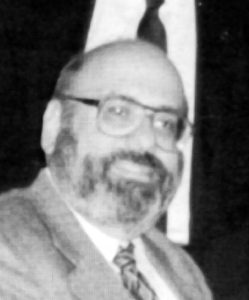 Elliott Michael Black was born 1938 in Baltimore MD. He graduated from Drexel University in 1961 with a degree in electrical engineering, and relocated to the Chicago area. He would go on to earn an MBA and a law degree, and was a life-long member of Tau Epsilon Phi Fraternity. He worked in engineering and marketing for companies such as Costco, Ekco, Black and Decker, and his own firm, EMBA. He belonged to a number of civic and business organizations. One of his great interests was working as a magician and mentalist. He spent “about 25 days each year…[using] his stage name (Michael Elliott – The Sherlock Holmes of Thought) and Victorian garb and hits the cruise ships, conventions and business meetings.” (Chicago Tribune, Dec. 28, 2002) Black was a member of Colonel Moran’s Secret Gun Club, The Torists International, The Criterion Bar Association, and The Hounds. He contributed an article to the Spring 2003 Baker Street Journal. Black died in 2013 in Chicago IL.
Elliott Michael Black was born 1938 in Baltimore MD. He graduated from Drexel University in 1961 with a degree in electrical engineering, and relocated to the Chicago area. He would go on to earn an MBA and a law degree, and was a life-long member of Tau Epsilon Phi Fraternity. He worked in engineering and marketing for companies such as Costco, Ekco, Black and Decker, and his own firm, EMBA. He belonged to a number of civic and business organizations. One of his great interests was working as a magician and mentalist. He spent “about 25 days each year…[using] his stage name (Michael Elliott – The Sherlock Holmes of Thought) and Victorian garb and hits the cruise ships, conventions and business meetings.” (Chicago Tribune, Dec. 28, 2002) Black was a member of Colonel Moran’s Secret Gun Club, The Torists International, The Criterion Bar Association, and The Hounds. He contributed an article to the Spring 2003 Baker Street Journal. Black died in 2013 in Chicago IL.
Biographical information provided courtesy of Julie McKuras.
♦
Marshall L. Blankenship
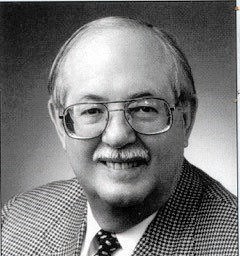
Marshall Lee Blankenship M.D. was born December 10, 1933 in Ramsey, IL. He received his undergraduate and medical degrees from the University of Illinois. In 1959 he joined the U.S. Army and served in Fort Sheridan’s medical dermatology unit. Blankenship completed his dermatology residence at Northwestern University Medical School. He went into private practice and was on the consulting staff of St. Francis Hospital in Blue Island and a faculty member at Northwestern University before joining the faculty of the Department of Dermatology at Rush-Presbyterian St. Luke’s Medical Center. He retired as Professor Emeritus after 30 years service. Blankenship was active in numerous dermatology societies. He was president of the Chicago Dermatological Society in 1976, and won their Founders Award as well as the 2001 Gold Medal, given for lifetime academic excellence and outstanding service. Blankenship also served on the Illinois Dermatological Society, the American Academy of Dermatology and the American Dermatological Association, as well as a number of international societies. In 1997, at the annual American Academy of Dermatology presented him with the National Practitioner of the Year Award, citing his contributions “to all facets of dermatology.” Marshall’s other interests were travel, books, stamp collecting, music and cooking, but his specialty was Sherlock Holmes. In addition to The Hounds, he became a member of Hugo’s Companions in 1991 and served as Sir Hugo in 1995. He belonged to The Blanched Soldiers of NOAH and edited their newsletter The Spectator, and The Sir James Saunders Society. Marshall contributed an essay to Sir Arthur Conan Doyle and Sherlock Holmes, a book edited by Donald Terras to celebrate the 2003 dedication of the C. Frederick Kittle Collection of Doyleana at Chicago’s Newberry Library. Blankenship died on Jan. 18, 2015 in Chicago.
Biographical information provided courtesy of Julie McKuras.
♦
Carl R. Brick
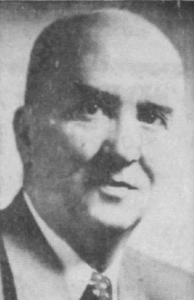 Carl Richard Brick was born November 22, 1896 in Painesville OH. He graduated from Kenyon College in 1918, and then served in the U.S Navy during World War I as a Lieutenant. After the war he was employed by shipbuilding corporations in Loraine, OH and Chicago, IL. He moved to Kansas City, MO in the early 1920s and worked at the Co-Operative Club International headquarters there, and also served as the Commander of the local American Legion. It was there that he met a man described as as his “old friend” in a May 30, 1950 Chicago Tribune article, Harry Truman. In the mid 1930s he relocated to Chicago where he worked for Dealer’s Transport Company. He returned to active duty in the Navy in May 1942, at the Midshipmen’s School the Navy established at Northwestern University’s downtown-Chicago professional schools campus. Two years later he was appointed head of the Navy’s Civil Readjustment Office for the 9th Naval District, and was released from service in March of 1946. Returning to civilian life, he was employed by Borg-Warner in Chicago and served in a variety of positions eventually as director for management training for it in Middleburg Heights, OH. He retired to the Pensacola, FL area in 1974, and died on August 22, 1986 in Gulf Breeze, FL. Brick attended the first Hounds dinner in January 1944, but was not, as noted in Charles Collins’ Chicago Tribune column’s report of the 1944 dinner, a member of The Five Orange Pips. (Nieminski, page 11.) The sole Pip at that Hounds dinner was Richard W. Clarke, who served at the Midshipmen’s School with Brick during World War II.
Carl Richard Brick was born November 22, 1896 in Painesville OH. He graduated from Kenyon College in 1918, and then served in the U.S Navy during World War I as a Lieutenant. After the war he was employed by shipbuilding corporations in Loraine, OH and Chicago, IL. He moved to Kansas City, MO in the early 1920s and worked at the Co-Operative Club International headquarters there, and also served as the Commander of the local American Legion. It was there that he met a man described as as his “old friend” in a May 30, 1950 Chicago Tribune article, Harry Truman. In the mid 1930s he relocated to Chicago where he worked for Dealer’s Transport Company. He returned to active duty in the Navy in May 1942, at the Midshipmen’s School the Navy established at Northwestern University’s downtown-Chicago professional schools campus. Two years later he was appointed head of the Navy’s Civil Readjustment Office for the 9th Naval District, and was released from service in March of 1946. Returning to civilian life, he was employed by Borg-Warner in Chicago and served in a variety of positions eventually as director for management training for it in Middleburg Heights, OH. He retired to the Pensacola, FL area in 1974, and died on August 22, 1986 in Gulf Breeze, FL. Brick attended the first Hounds dinner in January 1944, but was not, as noted in Charles Collins’ Chicago Tribune column’s report of the 1944 dinner, a member of The Five Orange Pips. (Nieminski, page 11.) The sole Pip at that Hounds dinner was Richard W. Clarke, who served at the Midshipmen’s School with Brick during World War II.
Biographical information provided courtesy of Jon Lellenberg.
♦
Horace J. Bridges
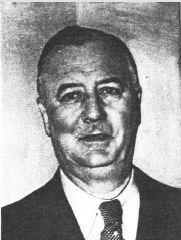
Horace James Bridges was born in London, England on August 31, 1880. He came to the U.S. in August of 1912 and moved to Chicago where he became the leader of the Chicago Ethical Society in 1913. In February 1918 he became a naturalized U. S. citizen. The 1930 Federal Census lists him as a “Dr. of Philosophy, Lecturer and Writer.” Along with Clarence Darrow and Jane Addams, Bridges was a signer of a 1921 document “Christian Protest Against Anti-Semitism.” In 1923 he was ordained as a Unitarian minister. By 1933, Bridges was involved in protesting German treatment of Jews, asking clergy to discuss the situation with their members. He toured the Midwest delivering speeches connected with an anti-Nazi campaign and boycott of German goods. During that same period, Clarence Darrow debated Bridges over “the issue of human freedom and responsibility in crime and punishment.” (Darrow would go on to join the Chicago Ethical Society). He was the author of a number of books such as The Ethical Movement, Its Principles and Aims (London, Union of Ethical Societies, 1911); Criticisms of Life; Studies in Faith, Hope and Despair (1915); Some Outlines of the Religion of Experience; a Book for Laymen and the Unchurched, (1916); Our Fellow Shakespeare, How Everyman May Enjoy His Works (1916); On Becoming an American: Some Meditations of a Newly Naturalized Immigrant (1919); and Aspects of Ethical Religion; Essays in Honor of Felix Adler on the Fiftieth Anniversary of His Founding of the Ethical Movement, 1876 (1926). Under Bridges’ leadership, the Chicago Ethical Society assisted groups such as the Urban League, the Visiting Nurses Association, and the Legal Aid Bureau. Bridges retired from the Chicago Ethical Society in 1945 and he was named Leader Emeritus of the American Ethical Society. The following year he moved to Greenport, Long Island NY. He died there on October 7, 1955 and was buried in Greenport’s Sterling Cemetery.
Biographical information provided courtesy of Julie McKuras.
♦
John Brousch
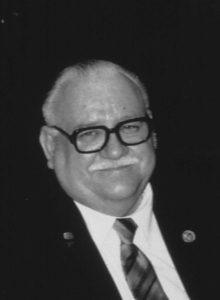
John James Brousch Jr. was born August 20, 1935 in Chicago IL. He was a United States Air Force veteran of the Korean and Viet Nam Wars. According to The Grimpen Mire Gazette, he was “security at the Balmoral Racetrack” and played the trumpet and drums. He wrote and self-published Sherlock Holmes and the Voyaging Vampire in 1960. Brousch joined Hugo’s Companions in 1981 and was known as their Artist in Residence. He was honored by the group in January 2003 with a dinner where he was celebrated by fellow members. They also awarded him their Paget-Steele Award for Achievement in Sherlockian Visual Arts and named him The Most Notable Companion in 1995. Among his other Sherlockian memberships were The Mini-Tonga Society, The Double-Barreled Tiger Cubs of Champaign-Urbana, and The Dedicated Associates of Lomax. He was a co-founder of The South Downers, where he edited the South Downs Journal. His Sherlockian Heraldry illustrated the 221 coats of arms relating to Holmes. As Randall Stock wrote in a review of this CD-ROM and accompanying booklet, “ Inspired by Julian Wolff’s Practical Handbook of Sherlockian Heraldry (1955), John Brousch researched and devised these arms over many years.” Brousch died on August 27, 2003.
Biographical information provided courtesy of Julie McKuras.
♦
Jeremiah J. Buckley
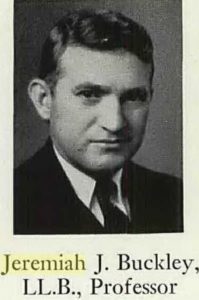 Jeremiah Joseph Buckley was born in Blarney Ireland on Dec. 7, 1895 and arrived in the United States in 1907. According to his World War I draft card, he worked at an electrical substation at the time. He attended DePaul University as a law student, graduating in 1923. The following year he began a full-time position teaching in the English Department and a part-time position teaching in the Law School while working as an attorney. His specialty was evidence and criminal law. He was often noted in local newspapers as a sponsor of those newly admitted to the Bar. In 1953-54 he served on the Illinois State Bar Association. Daniel Ursini of DePaul’s Rinn Law Library, noted that Buckley was often referred to as “the Sage of DePaul” and “could not do enough for the law school” including writing “book reviews for the law review.” Ursini wrote “There is only one person shown in the photographic portraits lining the hallway to the Rare Book Room who was not a dean. That same person was never a full-time professor in the College of Law. Rather, he was a part-timer from 1924 to 1965. Yet throughout his forty-one years at DePaul his gifts as a lecturer, his capacity for human connection, and his exceptional agility as a thinker made Jeremiah Buckley synonymous with the high quality of legal education offered at DePaul.” Vincent Starrett must have agreed with that assessment of Buckley’s “agility as a thinker” and mentioned him in his “Books Alive” column on a number of subjects. He wrote on Feb. 3, 1957 that Buckley was “an old friend” and his April 19, 1953 column referred to him as a “well-known lecturer on law and criminology” as well as someone who “occasionally lectures on Shakespeare.” Starrett wrote that Buckley’s “most provocative address” was titled “Shakespeare: Was He an Irishman?” Buckley later asserted that the true author of the works attributed to Shakespeare was “an Irishman, Capt. MacMorris.” He also addressed a number of audiences on places to visit in Ireland. He was a frequent contributor to the editorial page of the Chicago Tribune including his statement in 1960 that he had “14 reasons why [Nixon] should not be elected president.” Other letters indicate his interest in the national political scene. He retired from DePaul in 1965 and “over 300 judges and lawyers and local power figures attended his farewell reception.”(Ursini) Buckley died on August 1975 in Chicago IL.
Jeremiah Joseph Buckley was born in Blarney Ireland on Dec. 7, 1895 and arrived in the United States in 1907. According to his World War I draft card, he worked at an electrical substation at the time. He attended DePaul University as a law student, graduating in 1923. The following year he began a full-time position teaching in the English Department and a part-time position teaching in the Law School while working as an attorney. His specialty was evidence and criminal law. He was often noted in local newspapers as a sponsor of those newly admitted to the Bar. In 1953-54 he served on the Illinois State Bar Association. Daniel Ursini of DePaul’s Rinn Law Library, noted that Buckley was often referred to as “the Sage of DePaul” and “could not do enough for the law school” including writing “book reviews for the law review.” Ursini wrote “There is only one person shown in the photographic portraits lining the hallway to the Rare Book Room who was not a dean. That same person was never a full-time professor in the College of Law. Rather, he was a part-timer from 1924 to 1965. Yet throughout his forty-one years at DePaul his gifts as a lecturer, his capacity for human connection, and his exceptional agility as a thinker made Jeremiah Buckley synonymous with the high quality of legal education offered at DePaul.” Vincent Starrett must have agreed with that assessment of Buckley’s “agility as a thinker” and mentioned him in his “Books Alive” column on a number of subjects. He wrote on Feb. 3, 1957 that Buckley was “an old friend” and his April 19, 1953 column referred to him as a “well-known lecturer on law and criminology” as well as someone who “occasionally lectures on Shakespeare.” Starrett wrote that Buckley’s “most provocative address” was titled “Shakespeare: Was He an Irishman?” Buckley later asserted that the true author of the works attributed to Shakespeare was “an Irishman, Capt. MacMorris.” He also addressed a number of audiences on places to visit in Ireland. He was a frequent contributor to the editorial page of the Chicago Tribune including his statement in 1960 that he had “14 reasons why [Nixon] should not be elected president.” Other letters indicate his interest in the national political scene. He retired from DePaul in 1965 and “over 300 judges and lawyers and local power figures attended his farewell reception.”(Ursini) Buckley died on August 1975 in Chicago IL.
Biographical information provided courtesy of Julie McKuras.
♦
Gary R. Bunce
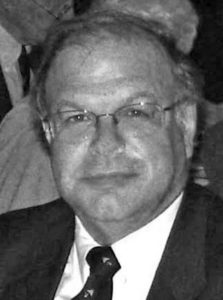 Gary Roger Bunce was born January 10, 1953 in Queens, NY. He received his MBA from Northern Illinois University in 1987. He was an accountant and CPA and worked at a variety of banking institutions and the Chicago Symphony Orchestra. Bunce taught Accounting, Finance and Economics for Joliet Junior College. He was a member of The South Downers and Hugo’s Companions, serving as their Most Wicked Companion (treasurer and vice-president). Bunce died on December 19, 2008 in New Lenox, IL.
Gary Roger Bunce was born January 10, 1953 in Queens, NY. He received his MBA from Northern Illinois University in 1987. He was an accountant and CPA and worked at a variety of banking institutions and the Chicago Symphony Orchestra. Bunce taught Accounting, Finance and Economics for Joliet Junior College. He was a member of The South Downers and Hugo’s Companions, serving as their Most Wicked Companion (treasurer and vice-president). Bunce died on December 19, 2008 in New Lenox, IL.
Biographical information provided courtesy of Julie McKuras.
♦
♦
♦
W.R. Button
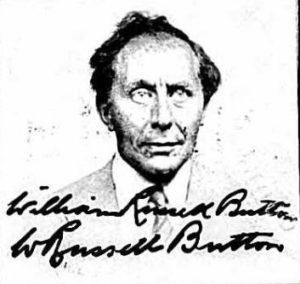
W(illiam) R(ussell) Button was born on September 5, 1889 in London, England. He attended the Birkbeck School of Art in London and joined the fine arts firm of Arthur Ackermann, Ltd. in the city. He was transferred to New York City with Ackermann’s in July 1910 and was living in Chicago as early as 1935. In 1946 he purchased Ackermann’s gallery in Chicago and changed the name of the store to his own. He had several locations throughout the city and moved to Douglas MI in 1966. Button died August 2, 1968 in Chicago, IL.
Biographical information provided courtesy of Julie McKuras.
♦
Eugene F. Carey
 Eugene Field Carey, MD, was born June 25, 1888 in Cook County, IL, the son of an Irish immigrant father. The 1910 Federal Census lists him as an artist, attending an Art Institute. His World War I draft card, filled out when he was 29, indicates that he was then a medical student, attending the Chicago Hospital College of Medicine. He served as the Police Surgeon with the Medical Division of the Chicago Police Department. He was a member of the Chicago Medical Society, the Illinois State Medical Society, and a Mason. Carey was Vincent Starrett’s “friend and physician” (Baker Street Journal, March 1974). The January 1948 Journal carries Vincent Starrett’s report on The Hounds, and in it he states that Carey is “Cook County’s foremost expert on narcotics.” Carey received the investiture of “Dr. James Mortimer” from The Baker Street Irregulars in January 1961. Carey’s essay “Holmes, Watson and Cocaine” which appeared in the September 1963 Journal, was noted in the March 1964 Journal as receiving favorable notice with an eye toward the Morley-Montgomery Award. Carey died on November 25, 1968 in Richton Park, IL.
Eugene Field Carey, MD, was born June 25, 1888 in Cook County, IL, the son of an Irish immigrant father. The 1910 Federal Census lists him as an artist, attending an Art Institute. His World War I draft card, filled out when he was 29, indicates that he was then a medical student, attending the Chicago Hospital College of Medicine. He served as the Police Surgeon with the Medical Division of the Chicago Police Department. He was a member of the Chicago Medical Society, the Illinois State Medical Society, and a Mason. Carey was Vincent Starrett’s “friend and physician” (Baker Street Journal, March 1974). The January 1948 Journal carries Vincent Starrett’s report on The Hounds, and in it he states that Carey is “Cook County’s foremost expert on narcotics.” Carey received the investiture of “Dr. James Mortimer” from The Baker Street Irregulars in January 1961. Carey’s essay “Holmes, Watson and Cocaine” which appeared in the September 1963 Journal, was noted in the March 1964 Journal as receiving favorable notice with an eye toward the Morley-Montgomery Award. Carey died on November 25, 1968 in Richton Park, IL.
Biographical information provided courtesy of Julie McKuras.
♦
Jay Finley Christ

Jay Finley Christ, a very early Hound, was born in Peabody, Ks. on December 15, 1884. He was a telegrapher with the Illinois Central Railroad for sixteen years before graduating from Morningside College (Sioux City, Ia.) in 1918. He received a J.D. from the University of Chicago in 1920, and became a business law professor in its School of Commerce & Administration. During World War II, on leave from his teaching position, Christ acted as Chief Code Instructor at the Navy’s recording laboratory located not far from the campus. In the spring of 1944 he read Edgar W. Smith’s Profile by Gaslight, and wrote an essay reacting to Anthony Boucher’s “Was the Later Holmes an Impostor?” that he sent to an impressed Smith. In July, when Vincent Starrett mentioned The Hounds’ founding in his Chicago Tribune “Books Alive” column, Christ wrote to him enclosing the essay, and was declared a Hound himself. He then designed our first membership certificate. Beginning in 1945 he began contributing Sherlockian items to Hounds co-founder Charles Collins’ “Line o’Type or Two” column in the Trib (sometimes as “J. A. Finch” or “Langdale Pike”), and by 1948 issued three collections of them from his own Fanlight House press, Gleanings by Gaslight, Flashes by Fanlight, and Soundings in the Saga. In 1947 Christ cemented his reputation nationally as an outstanding Sherlockian scholar with his Irregular Guide to Sherlock Holmes of Baker Street, his Irregular Chronology of Sherlock Holmes of Baker Street, and his four-letter code for the Sherlock Holmes stories now long standard among students of the Canon. That year he also taught the first college course anywhere on Sherlock Holmes. In 1949 he became “The Final Problem” in The Baker Street Irregulars, and in 1950 retired from teaching to Michigan City, Ind., on the lakeshore close to Chicago. There he built a writing cabin at his home, and spent the next thirteen years contributing more Writings About the Writings until his death at age 78 on December 10, 1963. At the BSI annual dinner the following month he was given a posthumous Two-Shilling Award.
Biographical information provided courtesy of Jon Lellenberg.
♦
Ed Christenson
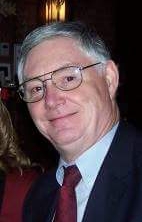 Ed Christenson was born on June 4, 1943 in Kenosha, Wisconsin, oddly enough in the same year Vincent Starrett started The Hounds of the Baskervilles (sic). I was raised in Door County and graduated from Sturgeon Bay High School in 1961, then attended UW-Oshkosh earning a degree in Marketing. I worked mainly in the wholesale liquor business in Wisconsin and North Dakota, the last 30 years as Operations Manager for General Beverage in Oshkosh. I started attending Bob Hahn’s group in Sheboygan (The Merripit House Guests) in 1984. Bob was my main mentor in all things Sherlockian. He introduced me to the Sherlockian scene in Chicago and later in New York. I started to attend several groups in Chicago including The Hounds of the Baskervilles (sic), Hugo’s Companions, The Criterion Bar Association, Torists Intl., and The STUD Society the to name a few and was active in all these groups starting in the early 1990’s. Bob Hahn was very generous with his introductions to so many important Sherlockians around the country. On his passing in 1999, I succeeded him as head of The Merripit House Guests. I continued attending meetings in Chicago with Paul Smedegaard and stayed with Paul and his wife Margaret many times at their house in Racine which made the Oshkosh to Chicago trip more manageable. Paul continued my mentoring process in Chicago, New York and other places. We were able to attend Sherlockian meetings, weekends, and conferences all around the United States and Canada. It has been great making so many friendships with Sherlockians from so many countries. I was able to work with four Sherlockians on a project to revise and greatly expand Svend Petersen’s ‘A Sherlock Holmes Almanac’ which we published in 2003. The Baker Street Irregulars awarded me a shilling and investiture of “Antonio” in 2003. Since retiring, I have been allowed time to give several ‘talks’ on Sherlock Holmes to school classes, library groups and book clubs. What a long strange trip it has been.
Ed Christenson was born on June 4, 1943 in Kenosha, Wisconsin, oddly enough in the same year Vincent Starrett started The Hounds of the Baskervilles (sic). I was raised in Door County and graduated from Sturgeon Bay High School in 1961, then attended UW-Oshkosh earning a degree in Marketing. I worked mainly in the wholesale liquor business in Wisconsin and North Dakota, the last 30 years as Operations Manager for General Beverage in Oshkosh. I started attending Bob Hahn’s group in Sheboygan (The Merripit House Guests) in 1984. Bob was my main mentor in all things Sherlockian. He introduced me to the Sherlockian scene in Chicago and later in New York. I started to attend several groups in Chicago including The Hounds of the Baskervilles (sic), Hugo’s Companions, The Criterion Bar Association, Torists Intl., and The STUD Society the to name a few and was active in all these groups starting in the early 1990’s. Bob Hahn was very generous with his introductions to so many important Sherlockians around the country. On his passing in 1999, I succeeded him as head of The Merripit House Guests. I continued attending meetings in Chicago with Paul Smedegaard and stayed with Paul and his wife Margaret many times at their house in Racine which made the Oshkosh to Chicago trip more manageable. Paul continued my mentoring process in Chicago, New York and other places. We were able to attend Sherlockian meetings, weekends, and conferences all around the United States and Canada. It has been great making so many friendships with Sherlockians from so many countries. I was able to work with four Sherlockians on a project to revise and greatly expand Svend Petersen’s ‘A Sherlock Holmes Almanac’ which we published in 2003. The Baker Street Irregulars awarded me a shilling and investiture of “Antonio” in 2003. Since retiring, I have been allowed time to give several ‘talks’ on Sherlock Holmes to school classes, library groups and book clubs. What a long strange trip it has been.
♦
Anthony Citera
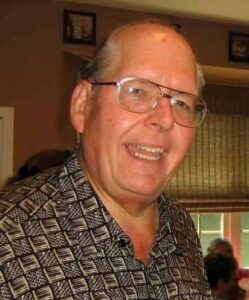 Anthony J. Citera was an officer at Commerce Clearing House (CCH), a Fortune 500 company, for over thirty years where he was in charge of law book sales. His other success at CCH was meeting and marrying Marcia, a fellow employee of CCH. He was a native and life-long resident of Chicago and in his later years wintered in Palm Desert CA where he and Marcia had a home on a golf course.
Anthony J. Citera was an officer at Commerce Clearing House (CCH), a Fortune 500 company, for over thirty years where he was in charge of law book sales. His other success at CCH was meeting and marrying Marcia, a fellow employee of CCH. He was a native and life-long resident of Chicago and in his later years wintered in Palm Desert CA where he and Marcia had a home on a golf course.
Tony, along with Don Izban and Fred Levin, founded the Torists International, S.S.in 1987 and beginning in March of that year served as editor for a number of years for their newsletter The Torist Times. In 1984 he became a member of Hugo’s Companions and was made a member of the Hounds in 1987. He was a frequent speaker at various scion meetings and often spoke about food in the Canon. Two of his memorable presentations were “Just Desserts” and “English Puddings.” He attended many meetings and special events and was an active participant. He died May 27, 2020 at his home in Lincolnwood IL.
Biographical information provided courtesy of Julie McKuras.
♦
William D. Clark
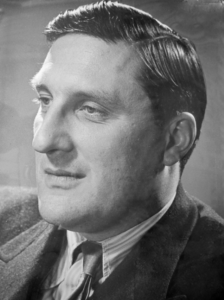 William Donaldson Clark was born July 28, 1916 in Haltwhistle England. After receiving an honors degree in modern history from Oriel College, Oxford, he attended the University of Chicago in 1938 as a Commonwealth fellow. He went on to lecture in humanities at the school until 1940 when he was attached to the British Information Services in Chicago, a post he held until 1945. Clark took the post of press attaché for the British Embassy in Washington until he returned to England in 1946 for a 3 year position as London editor of the Encyclopedia Britannica. He joined The Observer as a diplomatic correspondent until 1955 when he became the public relations adviser to Prime Minister Sir Anthony Eden. After leaving that service in the aftermath of the Suez Canal crisis, he was the New Delhi correspondent for The Observer and The Economist and from 1958-1960 also hosted a program on Britain’s Independent Television Network while still writing for The Observer. In 1960 he became a founding director of London’s Overseas Development Institute, a group which studied the needs of developing countries. Clark became the Director of Information for the World Bank in Washington DC in 1968, working with the Bank’s President, Robert S. McNamara, former U.S. Secretary of Defense. He would hold additional posts for the World Bank; Director and later Vice-President of External Relations. He resigned in 1980 and took the post of President of the non-profit International Institute for Environment and Development in London. He also wrote a number of books including Number Ten. Clark died June 27, 1985 at his home in Cuxham, Oxfordshire, England. His papers relating to his tenure at the World Bank are held in their archives; other diaries, papers and photographs are held at Special Collections, Bodleian Library, Oxford University.
William Donaldson Clark was born July 28, 1916 in Haltwhistle England. After receiving an honors degree in modern history from Oriel College, Oxford, he attended the University of Chicago in 1938 as a Commonwealth fellow. He went on to lecture in humanities at the school until 1940 when he was attached to the British Information Services in Chicago, a post he held until 1945. Clark took the post of press attaché for the British Embassy in Washington until he returned to England in 1946 for a 3 year position as London editor of the Encyclopedia Britannica. He joined The Observer as a diplomatic correspondent until 1955 when he became the public relations adviser to Prime Minister Sir Anthony Eden. After leaving that service in the aftermath of the Suez Canal crisis, he was the New Delhi correspondent for The Observer and The Economist and from 1958-1960 also hosted a program on Britain’s Independent Television Network while still writing for The Observer. In 1960 he became a founding director of London’s Overseas Development Institute, a group which studied the needs of developing countries. Clark became the Director of Information for the World Bank in Washington DC in 1968, working with the Bank’s President, Robert S. McNamara, former U.S. Secretary of Defense. He would hold additional posts for the World Bank; Director and later Vice-President of External Relations. He resigned in 1980 and took the post of President of the non-profit International Institute for Environment and Development in London. He also wrote a number of books including Number Ten. Clark died June 27, 1985 at his home in Cuxham, Oxfordshire, England. His papers relating to his tenure at the World Bank are held in their archives; other diaries, papers and photographs are held at Special Collections, Bodleian Library, Oxford University.
Biographical information provided courtesy of Julie McKuras.
♦
Richard W. Clarke
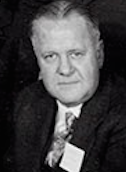 Richard Warner Clarke was born Christmas Day, 1896, in Utica, N.Y., and made his career in New York City as an investment banker and stockbroker. In 1935 he was chief founder of The Five Orange Pips, a Holmes club unrelated to the BSI for the first ten years of its life, and later called by Christopher Morley “Sherlockiana’s Institute of Higher Studies.” He attended Amherst College and in World War I he served as a junior Naval officer; in 1942 he was recalled to active duty and assigned to the Naval Midshipmen’s School at Northwestern University’s downtown-Chicago campus. Edgar W. Smith, a Pip since 1938 before he became the BSI’s Buttons in 1940, gave him a letter of introduction to Vincent Starrett in late 1943, asking for what “might be forthcoming as to the constructive and illuminating results that will, I know, follow your discussions.” Clarke attended the Hounds’ January 7, 1944 annual dinner at Schlogl’s Restaurant (eleven present), and Starrett reported to Smith on January 16th that: “Your good Clarke made us a charming little address concerned with the various ships mentioned in the Sacred Writings, and reached some interesting conclusions, which I regret to say I was in no condition to remember with any exactness; I hope you will get him to write them out for the Archives.” (Which Clarke did, in the April 1946 Baker Street Journal as “On the Nomenclature of Watson’s Ships.”) “On behalf of the Five Orange Pips,” continued Starrett, “he also underwrote a number of rounds of drinks.” On the strength of these signal contributions Richard Clarke was made a Hound. He returned to New York at the end of the war, became “The Copper Beeches,” BSI in 1949, received the BSI’s 2 Shilling Award in 1978 and continued to direct The Five Orange Pips’ affairs until his death on January 14, 1980 in Westchester, NY.
Richard Warner Clarke was born Christmas Day, 1896, in Utica, N.Y., and made his career in New York City as an investment banker and stockbroker. In 1935 he was chief founder of The Five Orange Pips, a Holmes club unrelated to the BSI for the first ten years of its life, and later called by Christopher Morley “Sherlockiana’s Institute of Higher Studies.” He attended Amherst College and in World War I he served as a junior Naval officer; in 1942 he was recalled to active duty and assigned to the Naval Midshipmen’s School at Northwestern University’s downtown-Chicago campus. Edgar W. Smith, a Pip since 1938 before he became the BSI’s Buttons in 1940, gave him a letter of introduction to Vincent Starrett in late 1943, asking for what “might be forthcoming as to the constructive and illuminating results that will, I know, follow your discussions.” Clarke attended the Hounds’ January 7, 1944 annual dinner at Schlogl’s Restaurant (eleven present), and Starrett reported to Smith on January 16th that: “Your good Clarke made us a charming little address concerned with the various ships mentioned in the Sacred Writings, and reached some interesting conclusions, which I regret to say I was in no condition to remember with any exactness; I hope you will get him to write them out for the Archives.” (Which Clarke did, in the April 1946 Baker Street Journal as “On the Nomenclature of Watson’s Ships.”) “On behalf of the Five Orange Pips,” continued Starrett, “he also underwrote a number of rounds of drinks.” On the strength of these signal contributions Richard Clarke was made a Hound. He returned to New York at the end of the war, became “The Copper Beeches,” BSI in 1949, received the BSI’s 2 Shilling Award in 1978 and continued to direct The Five Orange Pips’ affairs until his death on January 14, 1980 in Westchester, NY.
Biographical information provided courtesy of Jon Lellenberg.
♦
Leonard Cochran
Leonard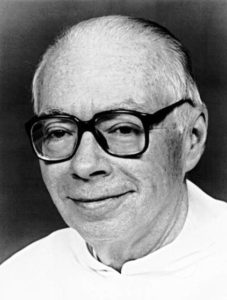 Cochran was born George Hunter Cochran August 19, 1928 in Tampa FL. He enrolled in Providence College and studied in the pre-ecclesiastical program from 1947-1949 then worked in an advertising department before his 1951 enlistment in the Air Force. After his service in Germany, he was discharged and in 1955 entered the Dominican Friars at St. Peter Martyr Priory in Winona MN where he took the religious name Leonard. He earned a BA in philosophy from St. Thomas Aquinas College (1958) and MA in theology from Aquinas Institute of Theology (1963). He was ordained a priest in 1962. Cochran taught English and theology at Fenwick High School in Illinois and went on to earn an MA (1969) and Ph.D. (1976) in English from Loyola University, and an MA in Liberal Arts (1982) from St. John’s College. In 1980 he joined the Providence College faculty and taught English, philosophy and humanities before his 2002 retirement. He was the recipient of the Providence College President’s Distinguished Faculty Award (2001). Rev. Cochran belonged to the Poetry Society of America and wrote poems and articles which were published in many periodicals including The Atlantic Monthly, and was considered an expert in the writings of Gerard Manley Hopkins. He contributed several articles to the Baker Street Journal as well as to Vincent Starrett: In Memoriam by Michael Murphy. In 1973 he received the investiture of “Cardinal Tosca” in The Baker Street Irregulars. He was also a member of Hugo’s Companions and served as the Most Idle Companion. Cochran died on March 30, 2013 in Columbus OH. He is buried in the Dominican Friars’ Cemetery on the campus on Providence College.
Cochran was born George Hunter Cochran August 19, 1928 in Tampa FL. He enrolled in Providence College and studied in the pre-ecclesiastical program from 1947-1949 then worked in an advertising department before his 1951 enlistment in the Air Force. After his service in Germany, he was discharged and in 1955 entered the Dominican Friars at St. Peter Martyr Priory in Winona MN where he took the religious name Leonard. He earned a BA in philosophy from St. Thomas Aquinas College (1958) and MA in theology from Aquinas Institute of Theology (1963). He was ordained a priest in 1962. Cochran taught English and theology at Fenwick High School in Illinois and went on to earn an MA (1969) and Ph.D. (1976) in English from Loyola University, and an MA in Liberal Arts (1982) from St. John’s College. In 1980 he joined the Providence College faculty and taught English, philosophy and humanities before his 2002 retirement. He was the recipient of the Providence College President’s Distinguished Faculty Award (2001). Rev. Cochran belonged to the Poetry Society of America and wrote poems and articles which were published in many periodicals including The Atlantic Monthly, and was considered an expert in the writings of Gerard Manley Hopkins. He contributed several articles to the Baker Street Journal as well as to Vincent Starrett: In Memoriam by Michael Murphy. In 1973 he received the investiture of “Cardinal Tosca” in The Baker Street Irregulars. He was also a member of Hugo’s Companions and served as the Most Idle Companion. Cochran died on March 30, 2013 in Columbus OH. He is buried in the Dominican Friars’ Cemetery on the campus on Providence College.
Biographical information provided courtesy of Julie McKuras.
♦
Charles Collins

Charles William Collins was born in Madison IN on November 19, 1880 and moved to Chicago at the age of four. He graduated from the University of Chicago and joined the Chicago Record-Herald in 1903. In 1908 he became a drama critic for the Chicago Inter Ocean and from 1914-1925 held that same position at the Chicago Evening Post in the same capacity. While there, in 1923 he took the assignment of discovering what had happened to the “Sitting Lincoln” statue. Designed by Stanford White, cast in 1906 and exhibited at the 1915 San Francisco World’s Fair, the statue of Abraham Lincoln was found by Collins in a stable in Chicago’s Washington Park. His discovery led to the installation of the statue in Grant Park in 1926. Collins spent five years as a free-lance writer and in 1930 went to work as a drama critic for the Tribune. From 1938-1952 he served as editor of the Tribune’s “A Line O’ Type or Two” which carried over 300 Sherlockian tidbits and mentions of the Hounds. In the early 1940s he began the “Bookman’s Holiday” column which he followed with writing for the Tribune’s Sunday magazine section from 1951 until his death in 1964. Collins also served on the board of the Illinois State Historical Society in the 1950s. John Nieminski wrote in the 1983 History of the Hounds, Vincent Starrett may have been “wangled by berth” to the Tribune by Collins, who actually may have motivated Starrett to organize the Hounds.” Vol. 1 #2 of the Baker Street Journal carried notice of the Hounds; although Starrett was the only officer, “Most of the actual work of the organization, however, is done by Mr. Collins, whose daily column serves as a sort of clearing-house for Sherlockian notes and queries, including all vital information about the exploits of the local chapter.” Collins died March 3, 1964 in Chicago IL.
Biographical information provided courtesy of Julie McKuras.
♦
Paul Conarty
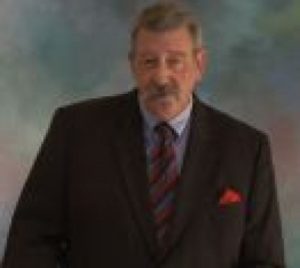 Paul F. Conarty is an attorney, concentrating in business and commercial litigation. He is a member of Hugo’s Companions and The Hounds of the Baskervilles (sic). His certificate for the Hounds was signed by Vincent Starrett.
Paul F. Conarty is an attorney, concentrating in business and commercial litigation. He is a member of Hugo’s Companions and The Hounds of the Baskervilles (sic). His certificate for the Hounds was signed by Vincent Starrett.
♦
♦
♦
David Corbett
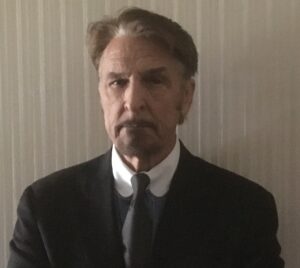
David Corbett is a Chicago native. He was employed by the U.S. Postal Service and resides in Buffalo Grove, IL. He formed an historic Civil War Music group called the “Battlefield Balladeers” which performs songs of the Civil War era for numerous museums, libraries, schools, and reenactments. They have also performed on several actual battlefields in various states over the last 16 years.
David is also a member of Hugo’s Companions and became a member of the Hounds in the mid 1970s.
♦
Philip Cunningham
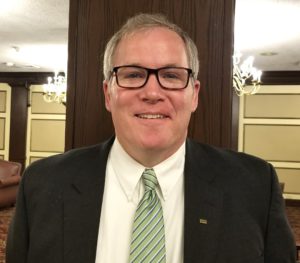
Philip Cunningham was given The Original Illustrated Sherlock Holmes by his parents in 1975. It wasn’t until he became a member of The Double Barreled Tiger Cubs in Champaign, IL, in 1983, that he found out there were 19 more stories and 3 more novels! He immediately bought a Doubleday and Baring-Gould’s The Annotated Sherlock Holmes. While in London, in December of 1988, he saw Jeremy Brett and Edward Hardwicke in The Secret of Sherlock Holmes at the Wyndham Theatre. At the Gillette to Brett II conference in 2007, the playwright, Jeremy Paul, signed his Playbill. He has held office in Hugo’s Companions, The Criterion Bar Association, The Watsonians and Torist International, S.S. and is a member of The Scotland Yarders, The Hansom Cab Clock Club, The Beacon Society, Colonel Sebastian Moran’s Secret Gun Club, The Admirable Beach Society and 140 Varieties of Tobacco Ash. He was made a Hound in 2008 and invested in The Baker Street Irregulars as Abe Slaney in 2013.
♦
Donald Curtis
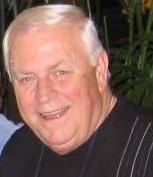 Donald E. Curtis, a native of Indianapolis, graduated from Tech HS and went on to serve in the US Air Force for eight years as a Chinese translator and instructor. He attended Yale University, Purdue University, Indiana University and California Coast University, earning a Bachelor’s and MBA degrees. Additionally, he completed seminary training at the University of the South’s School of Theology. He worked in medical sales with Baxter Healthcare and in 1996 acquired S.E. Drey and Company, an Indianapolis distributor of industrial products, and served as president of the company until retiring in January 2013. Don was a lay reader and past vestryman and Rector’s Warden at Church of the Nativity (Episcopal.) He participated in several charitable endeavors including Habitat for Humanity and the Interfaith Hospitality Network. In addition to his membership in The Indianapolis Literary Club, Don was a Scottish Rite Freemason and spent many years as a scout leader, was active in veterans’ organizations, and received the Badge of Honor from the Chinese government in Taiwan. Don was a member of the Honorable Order of Kentucky Colonels and was recommended twice for Indiana’s Sagamore of the Wabash. Don’s primary hobbies included travel, reading and book collecting. He served as president of the Indianapolis Holmes society, The Illustrious Clients of Indianapolis for over twenty-five years and contributed to the Baker Street Journal. In 2000, Don was invested as “Jabez Wilson” as a member of The Baker Street Irregulars. He was also a member of The Amateur Mendicant Society, The Retired Colourman, The Maiwand Jezails, and The Sherlock Holmes Society of London.
Donald E. Curtis, a native of Indianapolis, graduated from Tech HS and went on to serve in the US Air Force for eight years as a Chinese translator and instructor. He attended Yale University, Purdue University, Indiana University and California Coast University, earning a Bachelor’s and MBA degrees. Additionally, he completed seminary training at the University of the South’s School of Theology. He worked in medical sales with Baxter Healthcare and in 1996 acquired S.E. Drey and Company, an Indianapolis distributor of industrial products, and served as president of the company until retiring in January 2013. Don was a lay reader and past vestryman and Rector’s Warden at Church of the Nativity (Episcopal.) He participated in several charitable endeavors including Habitat for Humanity and the Interfaith Hospitality Network. In addition to his membership in The Indianapolis Literary Club, Don was a Scottish Rite Freemason and spent many years as a scout leader, was active in veterans’ organizations, and received the Badge of Honor from the Chinese government in Taiwan. Don was a member of the Honorable Order of Kentucky Colonels and was recommended twice for Indiana’s Sagamore of the Wabash. Don’s primary hobbies included travel, reading and book collecting. He served as president of the Indianapolis Holmes society, The Illustrious Clients of Indianapolis for over twenty-five years and contributed to the Baker Street Journal. In 2000, Don was invested as “Jabez Wilson” as a member of The Baker Street Irregulars. He was also a member of The Amateur Mendicant Society, The Retired Colourman, The Maiwand Jezails, and The Sherlock Holmes Society of London.
♦
Irving Cutter
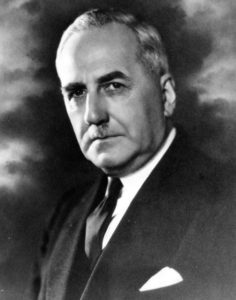 Dr. Irving Samuel Cutter was born December 5, 1875 in Keene, NH. After a brief role as a high school instructor, he graduated from the University of Nebraska in 1898 and served as principal of Beatrice High School (NE) until 1900. He received his medical degree from the University of Nebraska in 1910 and remained at the school as instructor of physiological chemistry 1919-1913, Professor of Biochemistry and director of laboratories 1913-1915, and Dean of the College of Medicine 1915-1925 while also serving as editor of the Nebraska State Medical Journal and member of the editorial board of Annals of Medical History. In 1925 he was appointed dean of Northwestern University’s medical school and in 1928, medical director of Passavant Memorial Hospital. The Galter Health Science Library records that he helped Northwestern build a great collection on the history of medicine: “Dean Cutter saw the Medical Library as his personal project…[expanding] its holdings from 13,000 to nearly 92,000 volumes…Dean Cutter was a noted rare book collector in private life…” Additionally, he contributed to several Chicago newspapers and was named the Tribune health editor in June 1934 with a column titled “How to Keep Well.” His columns focused on medical advice for the layman. His columns were eventually collected in three books. Cutter was among the “dozen enthusiasts” present at the first meeting of the Hounds in January 1944. (Baker Street Journal) Dr. Cutter died on Feb. 2, 1945. Hounds co-founder Charles Collins noted Cutter’s death in his “A Line O’ Type or Two” column, titling the tribute “The Good Neighbor.” As Ray Betzner wrote in his Studies in Starrett site, “Dr. Irving S. Cutter was an early member of The Hounds, a newspaper colleague of Vincent Starrett’s and a dedicated bibliophile. With his abilities as an excellent writer and passion for books, it is clear the Sherlock Holmes world lost a great potential contributor with his untimely death.”
Dr. Irving Samuel Cutter was born December 5, 1875 in Keene, NH. After a brief role as a high school instructor, he graduated from the University of Nebraska in 1898 and served as principal of Beatrice High School (NE) until 1900. He received his medical degree from the University of Nebraska in 1910 and remained at the school as instructor of physiological chemistry 1919-1913, Professor of Biochemistry and director of laboratories 1913-1915, and Dean of the College of Medicine 1915-1925 while also serving as editor of the Nebraska State Medical Journal and member of the editorial board of Annals of Medical History. In 1925 he was appointed dean of Northwestern University’s medical school and in 1928, medical director of Passavant Memorial Hospital. The Galter Health Science Library records that he helped Northwestern build a great collection on the history of medicine: “Dean Cutter saw the Medical Library as his personal project…[expanding] its holdings from 13,000 to nearly 92,000 volumes…Dean Cutter was a noted rare book collector in private life…” Additionally, he contributed to several Chicago newspapers and was named the Tribune health editor in June 1934 with a column titled “How to Keep Well.” His columns focused on medical advice for the layman. His columns were eventually collected in three books. Cutter was among the “dozen enthusiasts” present at the first meeting of the Hounds in January 1944. (Baker Street Journal) Dr. Cutter died on Feb. 2, 1945. Hounds co-founder Charles Collins noted Cutter’s death in his “A Line O’ Type or Two” column, titling the tribute “The Good Neighbor.” As Ray Betzner wrote in his Studies in Starrett site, “Dr. Irving S. Cutter was an early member of The Hounds, a newspaper colleague of Vincent Starrett’s and a dedicated bibliophile. With his abilities as an excellent writer and passion for books, it is clear the Sherlock Holmes world lost a great potential contributor with his untimely death.”
Biographical information provided courtesy of Julie McKuras.
♦
Elmer Davis
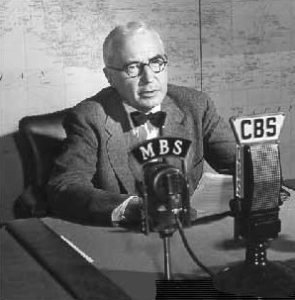
Elmer Holmes Davis was born January 13, 1890 in Aurora IN. He began his career in journalism in high school, continuing at Franklin College where he edited the newspaper and sold stories to the Indianapolis Star. He earned a B.A. in 1910 and won a Rhodes Scholarship at Oxford, where he met Christopher Morley and finished a B.A. in 1912, returning home in 1913. Davis turned down a job at Swine World in favor of the New York Times where he spent over ten years while writing his own stories and essays. He left the Times in 1923 for free-lance writing, focusing on domestic issues before turning toward foreign affairs. In 1939, as war broke out in Europe, he joined CBS News. His ability to summarize the news was so valuable that Edward R. Murrow claimed “no one else could explain the why of the news in such brief compass.” Davis toured England with Murrow in early 1941, airing broadcasts helping rally support for Britain which angered the America First group. In June 1942 President Roosevelt named him Director of the Office of War Information, where Davis took the stance that people had the right to know what was happening, a position often difficult while battling wartime censorship. He worked for ABC over 1945–53, a period when he saw and condemned Sen. Joseph McCarthy’s and the House Un-American Activities Committee’s attack on civil liberties. Davis, a member of Christopher Morley’s Three Hours for Lunch Club, received the investiture “A Case of Identity” from The Baker Street Irregulars in 1949. He wrote its Constitution and Buy-Laws as well the review of Vincent Starrett’s Private Life of Sherlock Holmes that Morley commissioned for The Saturday Review of Literature. His daughter Carolyn was “The Woman” for the 1947 BSI dinner. In 1952 Edgar W. Smith chose him to write the introduction to the Limited Editions Club edition of The Return of Sherlock Holmes. He was a Peabody and Alfred I. duPont Award and Emmy winner, and the recipient of honors from foreign governments. He portrayed himself in 1951’s The Day the Earth Stood Still. Davis died May 18, 1958.
Biographical information provided courtesy of Julie McKuras.
♦
Norman Davis
Norm an M. Davis was born October 13, 1936 in Philadelphia PA. Davis received a B.A. in English from American University in 1958 and spent the next four years in the U.S. Navy, and then worked as a reporter and editor for the United Press International as well as a free-lance writer. He worked for the United States Department of Housing and Urban Development 1982-1991 and then for United Blood Services 1996-1998, living in Chicago and Washington DC. Davis was a man with many interests especially coin collecting. He wrote two editions of The Complete Guide to United States Coin Collecting and wrote a syndicated coin column for several years. Another interest was poetry. He was a member of the Maine Writers and Publication Alliance and was recognized in Who’s Who in America for his poems. With his wife Linda Crane, he moved to Caribou Maine in 2001. A program for “Autumn in Baker Street” noted that Davis became a Sherlockian in the mid 1960s. His article “Sherlock Holmes – First ‘Man from U.N.C.L.E.’” appeared in the June 1972 Baker Street Journal and he was the author of Amusing Holmes! He wrote many papers and edited Pun My Word and The Grimpen Mire Gazette. Davis belonged to The Pawky Humourists, Paget’s Irregular Horse, The South Downers where he edited the South Downs Journal, The Six Napoleons where he served as Commissionaire and Napoleon, The Scotland Yarders, The Criterion Bar Association, The Red Circle, and Hugo’s Companions. He joined The Hounds in 1979. In 1972 he received the investiture of “The Grosvenor Square Furniture Van” in The Baker Street Irregulars. He was awarded the 1992 Illinois Sherlockian of the Year Award. Davis died on April 7, 2004 in Caribou ME. His obituary noted that considering his long championship of the abused and abandoned, contributions should be directed to his two favorite charities, The Battered Women’s Project or the Central Aroostook Humane Society.
an M. Davis was born October 13, 1936 in Philadelphia PA. Davis received a B.A. in English from American University in 1958 and spent the next four years in the U.S. Navy, and then worked as a reporter and editor for the United Press International as well as a free-lance writer. He worked for the United States Department of Housing and Urban Development 1982-1991 and then for United Blood Services 1996-1998, living in Chicago and Washington DC. Davis was a man with many interests especially coin collecting. He wrote two editions of The Complete Guide to United States Coin Collecting and wrote a syndicated coin column for several years. Another interest was poetry. He was a member of the Maine Writers and Publication Alliance and was recognized in Who’s Who in America for his poems. With his wife Linda Crane, he moved to Caribou Maine in 2001. A program for “Autumn in Baker Street” noted that Davis became a Sherlockian in the mid 1960s. His article “Sherlock Holmes – First ‘Man from U.N.C.L.E.’” appeared in the June 1972 Baker Street Journal and he was the author of Amusing Holmes! He wrote many papers and edited Pun My Word and The Grimpen Mire Gazette. Davis belonged to The Pawky Humourists, Paget’s Irregular Horse, The South Downers where he edited the South Downs Journal, The Six Napoleons where he served as Commissionaire and Napoleon, The Scotland Yarders, The Criterion Bar Association, The Red Circle, and Hugo’s Companions. He joined The Hounds in 1979. In 1972 he received the investiture of “The Grosvenor Square Furniture Van” in The Baker Street Irregulars. He was awarded the 1992 Illinois Sherlockian of the Year Award. Davis died on April 7, 2004 in Caribou ME. His obituary noted that considering his long championship of the abused and abandoned, contributions should be directed to his two favorite charities, The Battered Women’s Project or the Central Aroostook Humane Society.
Biographical information provided courtesy of Julie McKuras.
♦
Carlina de la Cova
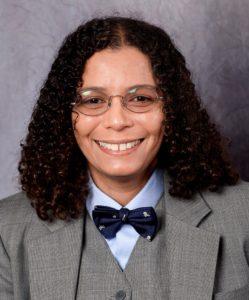 Carlina de la Cova received her Ph.D. from Indiana University in 2008. She is currently an Associate Professor and the Director of Undergraduate Studies in the Department of Anthropology at the University of South Carolina in Columbia. Carlina is also a deputy coroner with the Richland County Coroner’s Office. She first met Sherlock Holmes in grade school through Peter Cushing’s and Jeremy Brett’s screen and television portrayals of the great detective. However, her formal introduction to the Master came in her sixth grade English class when she was assigned “The Speckled Band” to read. Carlina was instantly captivated by Holmes’s intellect and his ability to draw inferences and deductions from the tiniest of details. The detective became a steadfast companion throughout high school, college (where she wrote a number of biographical papers on him), and graduate school, where she began to employ his methods in her work.
Carlina de la Cova received her Ph.D. from Indiana University in 2008. She is currently an Associate Professor and the Director of Undergraduate Studies in the Department of Anthropology at the University of South Carolina in Columbia. Carlina is also a deputy coroner with the Richland County Coroner’s Office. She first met Sherlock Holmes in grade school through Peter Cushing’s and Jeremy Brett’s screen and television portrayals of the great detective. However, her formal introduction to the Master came in her sixth grade English class when she was assigned “The Speckled Band” to read. Carlina was instantly captivated by Holmes’s intellect and his ability to draw inferences and deductions from the tiniest of details. The detective became a steadfast companion throughout high school, college (where she wrote a number of biographical papers on him), and graduate school, where she began to employ his methods in her work.
Sherlock Holmes continues to play a very large role in Carlina’s academic and private life. Apart from publishing on the Master, she teaches an introductory forensics course at the University of South Carolina entitled: ANTH 221 The Forensics of Sherlock Holmes. As a professor, a bioarchaeologist, and a forensic anthropologist Carlina uses Holmes’ methods on a daily basis. His belief system has permeated her own, especially in regard to justice. As she states in her About Being A Sherlockian chapter edited by Chris Redmond: Holmes’ personality and code of ethics, as well as the underlying messages Doyle imbedded in each story. . .would become the groundwork for many college papers and form the philosophy of not only my career in bioarchaeology and forensic anthropology, but my life. I embraced Holmes’ words and actions, and opted to dedicate my work and my life to bringing justice to the voiceless in both the historical and forensic contexts. She was made a member of the Hounds in 2019 and invested in the Baker Street Irregulars as The Anthropological Journal in 2020.
♦
John Delly
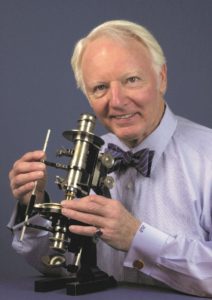 John G. Delly, a former Chemistry teacher in the Chicago Public School system, was Senior Research Microscopist at the McCrone Research Institute where he taught courses in Forensic Microscopy and Trace Evidence Analysis, Optical Crystallography, Chemical Microscopy, and Photomicrography. He also headed up the Microscopic Particle Identification Laboratory of McCrone Associates, where he solved microscopical problems for government and industry. He is currently Professor Emeritus of Chemical Microscopy at the Hooke College of Applied Sciences, and Scientific Advisor to the McCrone Group. He has over 500 publications, including Kodak’s Photography Through the Microscope; his latest book is Polarized Light Microscopy and Ancillary Techniques. He took an evening course in Sherlock Holmes taught by Tom Joyce, which led to his withstanding the public humiliation of the “Dreaded Tripos” to become a proud and carousing member of Hugo’s Companions when C. Arnold Johnson was Sir Hugo. His talk on “Sherlock Holmes as a Microscopist” and “Jack the Ripper –Murderer Microscopist” before that august group also led to Karen Skubish inviting him to address The Criterion Bar Association, which led to his membership in that illustrious organization. Later, Donald B. Izban invited him to become a member of The Torists. Then, somewhere in the mysterious “smoked-filled room,” he was elected to join The Hounds of the Baskerville(sic).rumor has it that Fred Levin was somehow involved in this momentous decision. Bob Mangler made the invitation official…….and the rest is history.
John G. Delly, a former Chemistry teacher in the Chicago Public School system, was Senior Research Microscopist at the McCrone Research Institute where he taught courses in Forensic Microscopy and Trace Evidence Analysis, Optical Crystallography, Chemical Microscopy, and Photomicrography. He also headed up the Microscopic Particle Identification Laboratory of McCrone Associates, where he solved microscopical problems for government and industry. He is currently Professor Emeritus of Chemical Microscopy at the Hooke College of Applied Sciences, and Scientific Advisor to the McCrone Group. He has over 500 publications, including Kodak’s Photography Through the Microscope; his latest book is Polarized Light Microscopy and Ancillary Techniques. He took an evening course in Sherlock Holmes taught by Tom Joyce, which led to his withstanding the public humiliation of the “Dreaded Tripos” to become a proud and carousing member of Hugo’s Companions when C. Arnold Johnson was Sir Hugo. His talk on “Sherlock Holmes as a Microscopist” and “Jack the Ripper –Murderer Microscopist” before that august group also led to Karen Skubish inviting him to address The Criterion Bar Association, which led to his membership in that illustrious organization. Later, Donald B. Izban invited him to become a member of The Torists. Then, somewhere in the mysterious “smoked-filled room,” he was elected to join The Hounds of the Baskerville(sic).rumor has it that Fred Levin was somehow involved in this momentous decision. Bob Mangler made the invitation official…….and the rest is history.
♦
August Derleth
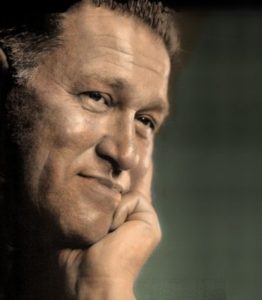
August William Derleth was born February 24, 1909 in Sauk City, WI. By the age of 13, already a reader of such authors as A. Conan Doyle and Sax Rohmer, he began to write short stories. In 1926 he “sold [his] first story to Weird Tales.” (August Derleth Society). During his years at the University of Wisconsin, where he received his B.A. in 1930, his first Solar Pons pastiche of Sherlock Holmes story was published. After graduation he worked as an associate editor of Mystic Magazine in Minneapolis in 1930 and returned to Sauk City in 1931 to edit The Midwesterner. He focused on his Sac Prairie stories which consisted of “novels, novellas, short stories, poetry, journal extracts, and miscellaneous prose.” (August Derleth Society) His first Sac Prairie novel, Still is the Summer Night, was published in 1937 and the following year, sponsored by Sinclair Lewis and Edgar Lee Masters, he received a Guggenheim Fellowship to pursue the series which eventually consisted of 38 books. He was active in Sauk City events and also lectured at the U of WI on American Regional Literature. In 1939 he founded Arkham House Publishing, which published the works of H. P. Lovecraft, as well as other mystery and occult titles. In 1941 he became literary editor of The Capital Times of Madison, Wisconsin, a position he held until 1960. He belonged to the Authors Guild, Milwaukee Press Club, the Poetry Society of America and other literary and history organizations. Derleth was a prolific writer on such topics as history, poetry, biography, and detective fiction, especially the Sherlock Holmes-inspired Solar Pons (Vincent Starrett wrote the foreword to a 1964 edition of The Casebook of Solar Pons) and his Judge Peck series. He also contributed to the Baker Street Journal. Derleth received the investiture of Inspector Baynes, of the Surrey Constabulary, in 1971 from The Baker Street Irregulars. He was made an honorary member of the Trained Cormorants when he spent a year in Los Angeles. Derleth died on July 4, 1971 in Sauk City, WI. The August Derleth Society was founded in 1977 in his memory.
Biographical information provided courtesy of Julie McKuras.
♦
Paul Didzerekis
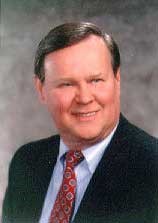 Paul P. Didzerekis is a native of Chicago. He received his Bachelor of Business Administration from Loyola University of Chicago in 1963 and his Doctor of Jurisprudence Degree from Loyola University of Chicago Law School in 1964. He has served on the Illinois State Bar Association’s Professional Conduct Committee and was an Assembly Delegate 1989-1996 and 2001-2008. Didzerekis was an Executive/Attorney for Governmental Affairs, Law and Tax Departments for Sears Roebuck & Co. 1960-1965, and an Adjunct Professor of Law and Ethics in the Action Program at Lewis University Law School (now Northern Illinois Law School) 1976-1977. He was the President and Partner of Didzerekis and Douglas 1974-75 and has been in sole practice since 1975, specializing in Estate Planning and Administration, Probating of estates, Real Estate transactions, Wills and Trusts, Businesses and Corporations, and Divorce and Civil Litigation. Also active in civic and political activities, he has worked with the United Way, Kiwanis Club, DuPage County Crime Stoppers, Wheaton Parks and local Republican politics, often serving in executive positions.
Paul P. Didzerekis is a native of Chicago. He received his Bachelor of Business Administration from Loyola University of Chicago in 1963 and his Doctor of Jurisprudence Degree from Loyola University of Chicago Law School in 1964. He has served on the Illinois State Bar Association’s Professional Conduct Committee and was an Assembly Delegate 1989-1996 and 2001-2008. Didzerekis was an Executive/Attorney for Governmental Affairs, Law and Tax Departments for Sears Roebuck & Co. 1960-1965, and an Adjunct Professor of Law and Ethics in the Action Program at Lewis University Law School (now Northern Illinois Law School) 1976-1977. He was the President and Partner of Didzerekis and Douglas 1974-75 and has been in sole practice since 1975, specializing in Estate Planning and Administration, Probating of estates, Real Estate transactions, Wills and Trusts, Businesses and Corporations, and Divorce and Civil Litigation. Also active in civic and political activities, he has worked with the United Way, Kiwanis Club, DuPage County Crime Stoppers, Wheaton Parks and local Republican politics, often serving in executive positions.
♦
♦
Henry Dierkes
 William Henry Dierkes, Jr. was born June 9, 1908 in Syracuse, NY. He attended Central High School in Detroit and received his B.A. from The College of the City of Detroit in 1929. He worked for the Detroit Public Library for 5 years and the 1930 U.S. Census lists him as a publisher. In 1935 he produced Vincent Starrett’s Snow for Christmas. 125 copies were printed; “The book is designed and printed at Glencoe by Henry Dierkes and released in the month of December, 1935.” As Ray Betzner described in “Studies in Starrett,” “The publisher of the book also published a book of poetry by Dierkes, also in 1935. Those are the only two publications I can find under her name, which, in a delightful bit of happenstance, in Eileen Baskerville.” (the second one was The Man from Vermont, a book of Dierkes’ poetry which was dedicated to Robert Frost. Starrett wrote the foreword. The book was handstitched and bound to “revive the art of bookmaking”, Detroit Free Press, May 19, 1935). The publisher’s name Eileen Baskerville omits both her maiden and married last names. The happenstance cited by Betzner is that Dierkes married a young Englishwoman named Eileen Baskerville Ward in 1931. Her mother was Alice Baskerville Ward, and her grandfather was Charles Henry Baskerville of Guernsey in the Channel Islands. Henry and Eileen had a daughter they named Celia Baskerville Dierkes. (1936-1998). Henry and Eileen divorced prior to 1940. He and his second wife Margaret lived in La Porte IN by 1944 where they ran the Dierkes Press and published Living Poetry Quarterly. William Rose Benet, a friend and collaborator of Christopher Morley’s, wrote in his column “The Phoenix Nest’ in The Saturday Review of Literature, that the magazine“…was done after dark, as Mr. Dierke’s days are devoted to office work connected with office work connected with loading shells, mines, and bombs at an ordnance plant.” Dierkes would go on to publish his own poetry and Folio Magazine as well as other Starrett works such as Brillig Sonnets and Other Verse in 1949. The Dierkes moved to Arkansas in 1968. His tribute to Starrett appeared in the book Shaking Hands with Immortality: Encomiums for Vincent Starrett in 1975. His last work appears to be 1984’s Robert Frost: A Friend to a Younger Poet. Dierkes died on July 21, 1989 in Eureka Springs, AK.
William Henry Dierkes, Jr. was born June 9, 1908 in Syracuse, NY. He attended Central High School in Detroit and received his B.A. from The College of the City of Detroit in 1929. He worked for the Detroit Public Library for 5 years and the 1930 U.S. Census lists him as a publisher. In 1935 he produced Vincent Starrett’s Snow for Christmas. 125 copies were printed; “The book is designed and printed at Glencoe by Henry Dierkes and released in the month of December, 1935.” As Ray Betzner described in “Studies in Starrett,” “The publisher of the book also published a book of poetry by Dierkes, also in 1935. Those are the only two publications I can find under her name, which, in a delightful bit of happenstance, in Eileen Baskerville.” (the second one was The Man from Vermont, a book of Dierkes’ poetry which was dedicated to Robert Frost. Starrett wrote the foreword. The book was handstitched and bound to “revive the art of bookmaking”, Detroit Free Press, May 19, 1935). The publisher’s name Eileen Baskerville omits both her maiden and married last names. The happenstance cited by Betzner is that Dierkes married a young Englishwoman named Eileen Baskerville Ward in 1931. Her mother was Alice Baskerville Ward, and her grandfather was Charles Henry Baskerville of Guernsey in the Channel Islands. Henry and Eileen had a daughter they named Celia Baskerville Dierkes. (1936-1998). Henry and Eileen divorced prior to 1940. He and his second wife Margaret lived in La Porte IN by 1944 where they ran the Dierkes Press and published Living Poetry Quarterly. William Rose Benet, a friend and collaborator of Christopher Morley’s, wrote in his column “The Phoenix Nest’ in The Saturday Review of Literature, that the magazine“…was done after dark, as Mr. Dierke’s days are devoted to office work connected with office work connected with loading shells, mines, and bombs at an ordnance plant.” Dierkes would go on to publish his own poetry and Folio Magazine as well as other Starrett works such as Brillig Sonnets and Other Verse in 1949. The Dierkes moved to Arkansas in 1968. His tribute to Starrett appeared in the book Shaking Hands with Immortality: Encomiums for Vincent Starrett in 1975. His last work appears to be 1984’s Robert Frost: A Friend to a Younger Poet. Dierkes died on July 21, 1989 in Eureka Springs, AK.
Biographical information provided courtesy of Julie McKuras.
♦
Bernard Doll
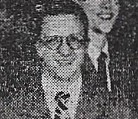
Bernard Luke Doll was born September 29, 1905 in Riverside, IA. The family moved to West Allis WI by 1908. He attended West Allis High School and completed 4 years of college. By 1930 he was working as a pharmacist in Racine WI. Doll was present at the first meeting of The Illustrious Clients of Indianapolis and is listed as one of the charter members of the group. He contributed “Sherlock Holmes, the Chemist” in The Illustrious Clients Case-Book, 1947. Doll died on January 3, 1986 in Racine, WI.
Biographical information provided courtesy of Julie McKuras.
♦
Steven Doyle
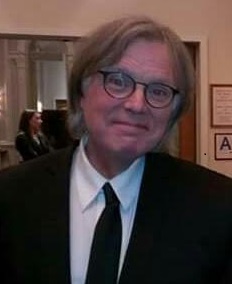 Steven Doyle became a Sherlockian at the age of 14, when his parents gave him a copy of The Adventures of Sherlock Holmes for Christmas. He’s had a long career in Sherlockian publishing. In 1987, Doyle founded and edited the quarterly journal, The Sherlock Holmes Review. This critically acclaimed periodical ran for 10 years. In 1992 he co-founded Wessex Press, a high-quality small press specializing in Sherlock Holmes, Arthur Conan Doyle, and other topics of interest. Wessex Press (and its imprint, Gasogene Books) is the premier Sherlockian publisher in the world. Doyle received the investiture of The Western Morning News in 1996 from The Baker Street Irregulars, as is a member of several other Sherlock Holmes societies. In 2008, Steven Doyle assumed the role of publisher for The Baker Street Journal, the official quarterly publication of the Baker Street Irregulars. He’s also authored countless essays and articles, and edited or co-edited six books on Sherlock Holmes, including Sherlock Holmes for Dummies. He lives in Indianapolis, Indiana with his wife, Pamela, and their three cats. He plays bass guitar and sings in the band The AgTones.
Steven Doyle became a Sherlockian at the age of 14, when his parents gave him a copy of The Adventures of Sherlock Holmes for Christmas. He’s had a long career in Sherlockian publishing. In 1987, Doyle founded and edited the quarterly journal, The Sherlock Holmes Review. This critically acclaimed periodical ran for 10 years. In 1992 he co-founded Wessex Press, a high-quality small press specializing in Sherlock Holmes, Arthur Conan Doyle, and other topics of interest. Wessex Press (and its imprint, Gasogene Books) is the premier Sherlockian publisher in the world. Doyle received the investiture of The Western Morning News in 1996 from The Baker Street Irregulars, as is a member of several other Sherlock Holmes societies. In 2008, Steven Doyle assumed the role of publisher for The Baker Street Journal, the official quarterly publication of the Baker Street Irregulars. He’s also authored countless essays and articles, and edited or co-edited six books on Sherlock Holmes, including Sherlock Holmes for Dummies. He lives in Indianapolis, Indiana with his wife, Pamela, and their three cats. He plays bass guitar and sings in the band The AgTones.
♦
Barton Eberman

Barton Augustus Eberman was born August 6, 1936 in Kane, Illinois. Eberman served in the U.S. Army. He attended Northwestern University and worked as a process engineer at D. K. Aerospace Co. in Batavia IL. He lived in St. Charles then Geneva IL. In 1986 Eberman received the investiture of “The Hound of the Baskervilles” from The Baker Street Irregulars. He was also a member of Hugo’s Companions serving as The Most Idle Companion and president, and served as editor of The Grimpen Mire Gazette. He also ran The Pinkertons of Fox Valley. Eberman died July 8, 2015 in Aurora, IL.
Biographical information provided courtesy of Julie McKuras. Photo from the 1986 Baker Street Irregulars Annual Dinner photo, reproduced with permission from the BSI Trust.
♦
♦
Joseph Eckrich
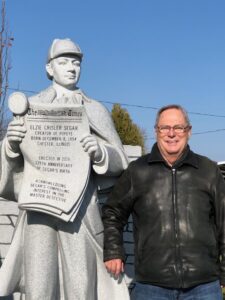 Joseph Eckrich found Sherlock Holmes in the 7th grade and never lost sight of him. He has led The Noble Bachelors of St. Louis and founded The Parallel Case of St. Louis, which he ran for over 30 years, and was invested into the BSI as “The Stock-brokers’ Clerk” in 1993. He is an inveterate collector of Sherlock Holmes, Arthur Conan Doyle, Vincent Starrett, Jack the Ripper and Edwin Drood among many other topics. He is married with two sons and three stepchildren. One of his sons, Peter, is carrying on the Sherlockian tradition. He is enjoying retirement after 32 years with the Internal Revenue Service.
Joseph Eckrich found Sherlock Holmes in the 7th grade and never lost sight of him. He has led The Noble Bachelors of St. Louis and founded The Parallel Case of St. Louis, which he ran for over 30 years, and was invested into the BSI as “The Stock-brokers’ Clerk” in 1993. He is an inveterate collector of Sherlock Holmes, Arthur Conan Doyle, Vincent Starrett, Jack the Ripper and Edwin Drood among many other topics. He is married with two sons and three stepchildren. One of his sons, Peter, is carrying on the Sherlockian tradition. He is enjoying retirement after 32 years with the Internal Revenue Service.
♦
♦
♦
Otto Eisenschiml
Wil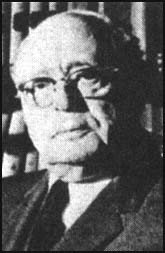 liam Hanchett Otto Eisenschiml was born in Vienna, Austria in June 1880. His father was a naturalized American citizen who fought as a soldier in an Illinois Regiment in the Civil War before returning to Austria. Eisenschiml graduated from the Polytechnic School of Vienna in 1901 and moved to the U.S. in 1905. He worked in a boiler factory in Pittsburgh before relocating to Chicago. He founded the Scientific Oil Compounding Company in 1911 and according to newspaper accounts, it was the “most informal and amicable in the Chicago business world…[he] never fired a single employee.” His company was a distributor of materials used in making varnishes, paints and fungicides, and he held several patents. His profitable investments allowed him to retire as an extremely wealthy man and to spend the remainder of his life pursuing his interests in history. He traveled extensively, visiting Civil War battle sites and employing researchers. His primary interest was the assassination of Abraham Lincoln, which he studied with the same skills he’d used as a chemist. He interviewed many people in his research and published Why Was Lincoln Murdered in 1937, followed by two other books about Lincoln in 1941 and 1943. Why Was Lincoln Murdered focused on Eisenchiml’s theory that Lincoln was murdered as part of a conspiracy led by Secretary of War Edwin M. Stanton. He contributed “1916: The Orpet-Lambert Case” to the book Chicago Murders, which was edited by Sewell P. Wright and contained essays by writers such as Vincent Starrett. Eisenchiml died on December 7, 1963 and is buried in Graceland Cemetery. He was survived by his three children. His papers relating to his research on Lincoln are held at the University of Iowa Libraries and The Chicago Public Library. Information regarding the book Chicago Murders available on Ray Betzner’s site Studies in Starrett.
liam Hanchett Otto Eisenschiml was born in Vienna, Austria in June 1880. His father was a naturalized American citizen who fought as a soldier in an Illinois Regiment in the Civil War before returning to Austria. Eisenschiml graduated from the Polytechnic School of Vienna in 1901 and moved to the U.S. in 1905. He worked in a boiler factory in Pittsburgh before relocating to Chicago. He founded the Scientific Oil Compounding Company in 1911 and according to newspaper accounts, it was the “most informal and amicable in the Chicago business world…[he] never fired a single employee.” His company was a distributor of materials used in making varnishes, paints and fungicides, and he held several patents. His profitable investments allowed him to retire as an extremely wealthy man and to spend the remainder of his life pursuing his interests in history. He traveled extensively, visiting Civil War battle sites and employing researchers. His primary interest was the assassination of Abraham Lincoln, which he studied with the same skills he’d used as a chemist. He interviewed many people in his research and published Why Was Lincoln Murdered in 1937, followed by two other books about Lincoln in 1941 and 1943. Why Was Lincoln Murdered focused on Eisenchiml’s theory that Lincoln was murdered as part of a conspiracy led by Secretary of War Edwin M. Stanton. He contributed “1916: The Orpet-Lambert Case” to the book Chicago Murders, which was edited by Sewell P. Wright and contained essays by writers such as Vincent Starrett. Eisenchiml died on December 7, 1963 and is buried in Graceland Cemetery. He was survived by his three children. His papers relating to his research on Lincoln are held at the University of Iowa Libraries and The Chicago Public Library. Information regarding the book Chicago Murders available on Ray Betzner’s site Studies in Starrett.
Biographical information provided courtesy of Julie McKuras.
♦
William Ekvall
 William Lincoln Ekvall was born August 24, 1935 in Evanston, IL. He attended the University of Illinois in Champaign and was a veteran of the United States Army. Ekvall was a retired banker and was a long time member of Northminster Presbyterian Church in Evanston. He was a member of the Masons, and held a number of offices including Grand Chaplain. He became a member of Hugo’s Companions in 1983 and a Hound in 1987. Ekvall passed away on June 29, 2019 in Evanston, IL.
William Lincoln Ekvall was born August 24, 1935 in Evanston, IL. He attended the University of Illinois in Champaign and was a veteran of the United States Army. Ekvall was a retired banker and was a long time member of Northminster Presbyterian Church in Evanston. He was a member of the Masons, and held a number of offices including Grand Chaplain. He became a member of Hugo’s Companions in 1983 and a Hound in 1987. Ekvall passed away on June 29, 2019 in Evanston, IL.
Biographical information provided courtesy of Julie McKuras.
♦
♦
T.S. Eliot
 T.S. Eliot, Nobel Laureate poet, was born September 26, 1888 in St. Louis, Mo. After receiving a Harvard B.A. in 1909,, he studied philosophy at the Sorbonne and returned to Harvard to pursue a doctorate in philosophy (never completed). In 1914 he settled in England where he eventually took British citizenship. In 1925 he took a job at Faber & Faber Publishers where he shared an office with Christopher Morley’s brother Frank. By 1930 he had become “the most dominant figure in poetry and literary criticism in the English-speaking world” (Academy of American Poets), with the Poetry Foundation website noting that “One might also be surprised to learn that the greatest man of letters of his time was devoted to Sherlock Holmes.” In his 1929 review of The Complete Sherlock Holmes, Eliot wrote that “perhaps the greatest of the Sherlock Holmes mysteries is this: when we talk of him we invariably fall into the fantasy of his existence.” (His poem “Macavity: the Mystery Cat,” called the “Napoleon of Crime,” appeared in 1939’s Old Possum’s Books of Practical Cats, and is part of the Broadway show Cats.) He met Vincent Starrett in 1952, and received an honorary membership in the Hounds. Eliot died in London on January 4, 1965, with a memorial service at Westminster Abbey.
T.S. Eliot, Nobel Laureate poet, was born September 26, 1888 in St. Louis, Mo. After receiving a Harvard B.A. in 1909,, he studied philosophy at the Sorbonne and returned to Harvard to pursue a doctorate in philosophy (never completed). In 1914 he settled in England where he eventually took British citizenship. In 1925 he took a job at Faber & Faber Publishers where he shared an office with Christopher Morley’s brother Frank. By 1930 he had become “the most dominant figure in poetry and literary criticism in the English-speaking world” (Academy of American Poets), with the Poetry Foundation website noting that “One might also be surprised to learn that the greatest man of letters of his time was devoted to Sherlock Holmes.” In his 1929 review of The Complete Sherlock Holmes, Eliot wrote that “perhaps the greatest of the Sherlock Holmes mysteries is this: when we talk of him we invariably fall into the fantasy of his existence.” (His poem “Macavity: the Mystery Cat,” called the “Napoleon of Crime,” appeared in 1939’s Old Possum’s Books of Practical Cats, and is part of the Broadway show Cats.) He met Vincent Starrett in 1952, and received an honorary membership in the Hounds. Eliot died in London on January 4, 1965, with a memorial service at Westminster Abbey.
Biographical information provided courtesy of Julie McKuras.
♦
♦
Thomas W. Evans
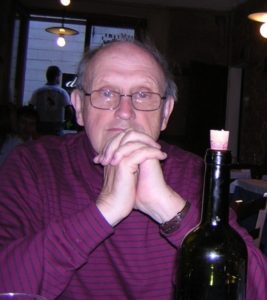 Although a reader of detective fiction from an early age, Tom Evans joined the ranks of Sherlockians only in mid-life, when he was recruited into Hugo’s Companions, in the early 1970’s, by long-time member Tom Magee. He has since been a regular member, serving in several offices including a long stint as “Most Drunken Companion” (aka Secretary). While making no claims to serious Sherlockian scholarship, he has, over the years, composed essayistic presentations on such pertinent topics as London Fog, The Origins of the Detective and Dr. Watson’s ethnic heritage. “The Archetype of the Hound,” a speculation about how that Baskerville business might have turned out under other circumstances, was published in Sir Hugo’s Literary Companion, a collection of Sherlockian writings edited by Companion David Humphrey. He comes by his Sherlockian interests in part through familiarity with things British gained from his Welsh forbears, his Scottish in-laws, and four years’ resident in London, “that great cesspool into which all the loungers and idlers of the Empire are irresistibly drained,” Mr. Evans grew up in Racine, Wisconsin, which he left in the early 1950s to attend the University of Chicago. He emerged with a Master’s Degree in sociology from that institution, and returned some years later to earn an MBA from the Graduate School of Business. His uniformed military service was in the Navy, in which he served as an intelligence officer, retiring as a Captain after four years’ active service and another 30 in the ready reserve. In civilian life, he worked as a systems analyst for the Navy Supply Systems Command and Advertising Program Manager for the Army Recruiting Command. He lives, with his wife Jean, in Mundelein, Illinois.
Although a reader of detective fiction from an early age, Tom Evans joined the ranks of Sherlockians only in mid-life, when he was recruited into Hugo’s Companions, in the early 1970’s, by long-time member Tom Magee. He has since been a regular member, serving in several offices including a long stint as “Most Drunken Companion” (aka Secretary). While making no claims to serious Sherlockian scholarship, he has, over the years, composed essayistic presentations on such pertinent topics as London Fog, The Origins of the Detective and Dr. Watson’s ethnic heritage. “The Archetype of the Hound,” a speculation about how that Baskerville business might have turned out under other circumstances, was published in Sir Hugo’s Literary Companion, a collection of Sherlockian writings edited by Companion David Humphrey. He comes by his Sherlockian interests in part through familiarity with things British gained from his Welsh forbears, his Scottish in-laws, and four years’ resident in London, “that great cesspool into which all the loungers and idlers of the Empire are irresistibly drained,” Mr. Evans grew up in Racine, Wisconsin, which he left in the early 1950s to attend the University of Chicago. He emerged with a Master’s Degree in sociology from that institution, and returned some years later to earn an MBA from the Graduate School of Business. His uniformed military service was in the Navy, in which he served as an intelligence officer, retiring as a Captain after four years’ active service and another 30 in the ready reserve. In civilian life, he worked as a systems analyst for the Navy Supply Systems Command and Advertising Program Manager for the Army Recruiting Command. He lives, with his wife Jean, in Mundelein, Illinois.
♦
Edward S. Everett
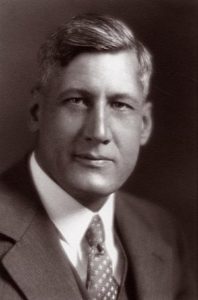 Edward Simpson Everett was born March 17, 1883 in Providence, RI. He attended Trinity College in Hartford CT for one year, 1900-01. He became a cartoonist and editorial writer in his native state, and spent several years with the Providence Journal. In 1910 he moved to Chicago and continued working as a cartoonist and writer. He enrolled at the University of Michigan in 1911 and received his B.A. degree in 1914 and was elected to Phi Beta Kappa. One year later he received his Master’s Degree. Everett was named an Assistant Professor of English Language and Literature in 1914 and in 1921 earned his Ph.D. and was named assistant professor in the Department of Rhetoric, later of English. His special interest was the Victorian novel, focusing on Charles Dickens and The Mystery of Edwin Drood. He taught composition and in 1934 co-authored The Michigan Deskbook of English. His hobbies were walking, genealogy and athletics. He retired from the University in 1953 and is remembered for his bequests to the school. Everett died Nov. 6, 1967 in Ann Arbor MI.
Edward Simpson Everett was born March 17, 1883 in Providence, RI. He attended Trinity College in Hartford CT for one year, 1900-01. He became a cartoonist and editorial writer in his native state, and spent several years with the Providence Journal. In 1910 he moved to Chicago and continued working as a cartoonist and writer. He enrolled at the University of Michigan in 1911 and received his B.A. degree in 1914 and was elected to Phi Beta Kappa. One year later he received his Master’s Degree. Everett was named an Assistant Professor of English Language and Literature in 1914 and in 1921 earned his Ph.D. and was named assistant professor in the Department of Rhetoric, later of English. His special interest was the Victorian novel, focusing on Charles Dickens and The Mystery of Edwin Drood. He taught composition and in 1934 co-authored The Michigan Deskbook of English. His hobbies were walking, genealogy and athletics. He retired from the University in 1953 and is remembered for his bequests to the school. Everett died Nov. 6, 1967 in Ann Arbor MI.
Biographical information provided courtesy of Julie McKuras.
♦
Matthew Fairlie
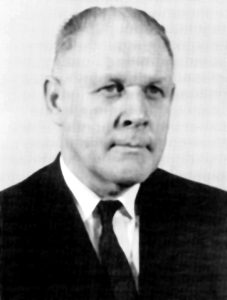
Matthew R. Fairlie was born Oct. 12, 1908 in Scotland. He attended school in Europe before graduating from the University of Chicago. Fairlie spent 40 years with Sinclair and Atlantic Richfield, serving as a research chemist and a senior research director for the last 18 years. After retiring in 1970 he moved to Sun City AZ. He had a special interest in race cars and became vice-president of the technical committee which inspects all of the Indianapolis 500 race cars. He was a member of the Masons, the Shriners, the Society of Automotive Engineers and the American Chemical Society. While living in Annapolis MD, he answered an ad in the Baltimore Sun in 1946 and was the sixth person to respond; he became a charter member of The Six Napoleons. He moved to Chicago in 1947 and joined the Hounds and founded Hugo’s Companions, holding office as Sir Hugo and later Idlest Companion, and was the winner of the Most Notable Companion in 1974 and 1984. When he moved to Arizona and found no scion societies in the area, he co-founded Moulton’s Prospectors in AZ, serving as President, “The Nugget,” and later “Mine Boss.” Fairlie died on June 27, 1986 in Sun City, AZ.
Biographical information provided courtesy of Julie McKuras.
♦
Margaret Flint
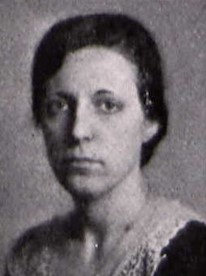 In Vincent Starrett’s “Books Alive” column of March 26, 1967, in the Chicago Tribune, he reported on the solution to a mystery about an 1890s Mississippi riverboat named the “Sherlock,” giving credit for the data to Miss Margaret A. Flint, Assistant State Historian at the Illinois State Historical Library in Springfield IL, and The Needle concluded: “All thanks to Miss Flint, who tells me she is a ‘faithful reader’ of this column. It’s a pleasure to send her a membership card in the Chicago chapter of the Baker Street Irregulars.” — Margaret Alice Flint was born, of an Illinois family, in Jackson, Tennessee on May 25, 1909, but was raised principally in Illinois, and in 1931 received a B.A. in history with honors from the University of Illinois, followed by a Master’s degree in Library Science from it after that. After several years of working at Springfield’s public library, in 1937 she became a reference librarian at the state’s Historical Library there, and over the years that followed she built a national reputation among scholars as an authority in the areas of Abraham Lincoln, and the Civil War. She also became well-known to the public as an expert on Illinois genealogies. In 1958 she was named Assistant State Historian, continuing in that post until her retirement at the end of 1970. That same year she had received the Lincoln Diploma of Honor, conferred by Lincoln Memorial University in Harrogate, TN. Her own principal work as Assistant State Historian, in its final edition, was A Chronology of Illinois History, 1673-1971. In retirement she moved to Murphysboro, IL, where her parents had finally lived before their deaths, in 1947 and 1962. Margaret died in March 1982.
In Vincent Starrett’s “Books Alive” column of March 26, 1967, in the Chicago Tribune, he reported on the solution to a mystery about an 1890s Mississippi riverboat named the “Sherlock,” giving credit for the data to Miss Margaret A. Flint, Assistant State Historian at the Illinois State Historical Library in Springfield IL, and The Needle concluded: “All thanks to Miss Flint, who tells me she is a ‘faithful reader’ of this column. It’s a pleasure to send her a membership card in the Chicago chapter of the Baker Street Irregulars.” — Margaret Alice Flint was born, of an Illinois family, in Jackson, Tennessee on May 25, 1909, but was raised principally in Illinois, and in 1931 received a B.A. in history with honors from the University of Illinois, followed by a Master’s degree in Library Science from it after that. After several years of working at Springfield’s public library, in 1937 she became a reference librarian at the state’s Historical Library there, and over the years that followed she built a national reputation among scholars as an authority in the areas of Abraham Lincoln, and the Civil War. She also became well-known to the public as an expert on Illinois genealogies. In 1958 she was named Assistant State Historian, continuing in that post until her retirement at the end of 1970. That same year she had received the Lincoln Diploma of Honor, conferred by Lincoln Memorial University in Harrogate, TN. Her own principal work as Assistant State Historian, in its final edition, was A Chronology of Illinois History, 1673-1971. In retirement she moved to Murphysboro, IL, where her parents had finally lived before their deaths, in 1947 and 1962. Margaret died in March 1982.
Biographical information provided courtesy of Jon Lellenberg.
♦
Frank Fotis
 Frank William Fotis was born on May 16, 1915 in Chicago, IL. In his obituary printed in the June 1988 Baker Street Journal, Bob Hahn wrote of him that “As a commercial photographer whose clients included antiques and rare book dealers, he probably handled more Conan Doyle manuscripts than all but a few Irregulars.” He was a member of Hugo’s Companions and was named their “Most Notable Companion” in 1978. He also assisted Bob Hahn with planning The Silver Blaze race; Hahn referred to him as “my strong right arm.” Fotis died December 31, 1987 in Chicago, IL.
Frank William Fotis was born on May 16, 1915 in Chicago, IL. In his obituary printed in the June 1988 Baker Street Journal, Bob Hahn wrote of him that “As a commercial photographer whose clients included antiques and rare book dealers, he probably handled more Conan Doyle manuscripts than all but a few Irregulars.” He was a member of Hugo’s Companions and was named their “Most Notable Companion” in 1978. He also assisted Bob Hahn with planning The Silver Blaze race; Hahn referred to him as “my strong right arm.” Fotis died December 31, 1987 in Chicago, IL.
Biographical information provided courtesy of Julie McKuras.
♦
♦
Matthew C. Fox

Matthew Cyril Fox was born April 18, 1934 in New York, NY. He attended Rensselaer Polytech and obtained a degree in Engineering. He was commissioned in the U.S. Navy in December 1956 and served on “a destroyer escort, a submarine and a troop escort.” (Chicago Tribune) After his service in the Navy he received a second degree in Engineering from Rensselaer and then moved to New York where he completed his MBA at NYU. He went to work at Coopers and Lybrand and became a partner in that accounting firm. Several years later he went to work as a division head at American Home Products. Fox was active in a number of Chicago charitable foundations including the Chicago YMCA, the Lyric Opera Guild and the Institute for Justice. He was a collector of Conan Doyle other writers including Winston Churchill and received his investiture of “Vigor, the Hammersmith Wonder” in 1971 from The Baker Street Irregulars. Fox died on September 11, 2015 in Chicago, IL.
Biographical information provided courtesy of Julie McKuras. Photo from the 1970 Baker Street Irregulars Annual Dinner photo, reproduced with permission from the BSI Trust.
♦
Theodore Friedman
 Theodore Friedman was born April 16, 1923 in Schenectady, New York. Ted’s service in the U.S. Army began in April 1943. He trained at Fort Bragg, was posted in England in the Medical Corps 1944-45, and was discharged in April 1946. He received his BS in Marketing from Rider University in 1947, his MBA in Marketing from New York University in 1961 and did one year postgraduate work at Columbia University in 1962. Over the course of his long career, he was a buyer for a retail chain, an assistant professor of Marketing at Long Island University, and was a management consultant for several firms. Friedman was always interested in stamp collecting and served on the Education Board for Demerest NJ. In 1995 Friedman received the investiture of “The Commonplace Book” from The Baker Street Irregulars. In addition to The Hounds, he was a member of Mrs. Hudson’s Cliffdwellers, where he served as an officer; The Three Garridebs; The Montague Street Lodgers of Brooklyn; The Lucca Gang; The Priory Scholars of Manhattan; and The Epilogues of Sherlock Holmes. He was a frequent contributor to “Prescott’s Press.” His life-long interest in stamp collecting evolved into a specialization in Holmes philately and he contributed a number of articles to various stamp periodicals. He was known for introducing the Canon to autistic children and lectured on the subject. Friedman was the 1995 recipient of the Georgia Amick Award for Literary Excellence from The Three Garridebs. Friedman died April 21, 2017 in Pompton Plains, NJ.
Theodore Friedman was born April 16, 1923 in Schenectady, New York. Ted’s service in the U.S. Army began in April 1943. He trained at Fort Bragg, was posted in England in the Medical Corps 1944-45, and was discharged in April 1946. He received his BS in Marketing from Rider University in 1947, his MBA in Marketing from New York University in 1961 and did one year postgraduate work at Columbia University in 1962. Over the course of his long career, he was a buyer for a retail chain, an assistant professor of Marketing at Long Island University, and was a management consultant for several firms. Friedman was always interested in stamp collecting and served on the Education Board for Demerest NJ. In 1995 Friedman received the investiture of “The Commonplace Book” from The Baker Street Irregulars. In addition to The Hounds, he was a member of Mrs. Hudson’s Cliffdwellers, where he served as an officer; The Three Garridebs; The Montague Street Lodgers of Brooklyn; The Lucca Gang; The Priory Scholars of Manhattan; and The Epilogues of Sherlock Holmes. He was a frequent contributor to “Prescott’s Press.” His life-long interest in stamp collecting evolved into a specialization in Holmes philately and he contributed a number of articles to various stamp periodicals. He was known for introducing the Canon to autistic children and lectured on the subject. Friedman was the 1995 recipient of the Georgia Amick Award for Literary Excellence from The Three Garridebs. Friedman died April 21, 2017 in Pompton Plains, NJ.
Biographical information provided courtesy of Julie McKuras.
♦
Andrew Fusco
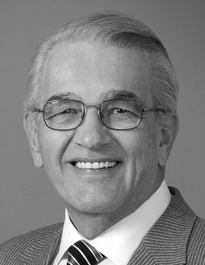
Andrew G. Fusco attended West Virginia University where he received his B.S.B.A. (Finance) and J.D. He has served as an attorney, a special prosecutor and special assistant attorney general in addition to holding several faculty positions at West Virginia University. He has contributed a number of articles to legal books. Fusco was invested in the Baker Street Irregulars in 1972 as “Athelney Jones” and not long thereafter became a Hound – although by a unique route, not the standard path of scholarship and collegiality for which the group is renowned. In January, 1973, Fusco met Michael Murphy, Vincent Starrett’s literary executor and friend, at the post-BSI cocktail party at Julian Wolff’s apartment in New York. The two struck up a conversation, then a friendship. Already a collector, Fusco asked Murphy if he could get some books signed for him by Starrett and he graciously agreed. Soon thereafter, Fusco shipped a box of a half dozen or so books (including two first editions of The Private Life of Sherlock Holmes) to Murphy. Several weeks later, he received a letter from Murphy in which the latter noted that “Vincent was happy to see two copies of TPLOSH and wondered if we could keep one?” Murphy explained that they needed a copy to do a reprint edition to benefit Starrett’s ailing financial status, and that Vincent would “make it worth his while”. Fusco agreed and some weeks later received the remainder of the books, each warmly inscribed – mostly in pencil – by Vincent’s then-frail hand. In addition, he received a bulky package of offprints, articles, sketches and other ephemera, with each item bearing Vincent’s signature. Among that latter group was Fusco’s membership card in The Hounds of the Baskerville (sic) signed in ink by Starrett, and he has been a Hound ever since. A few years later, in the mid to late 1970’s, Fusco was seated with a Chicago contingent at a BSI dinner at the Regency Hotel and Bob Mangler noted proudly that the tablemates were all “Hounds”. Fusco replied “I am a Hound too.” Mangler demanded “Who made you a Hound?” and Fusco responded, “Vincent Starrett.” Several weeks later, after submitting a suitably attested affidavit and copy of his membership card, Fusco received his Hound pin (old style, pewter) in the return post and proudly wears his BSI rosette and original Hound pin on all formal Sherlockian occasions. Fusco’s donated copy of TPLOSH, incidentally, was finally used for the limited edition of unbound signatures issued by Murphy’s Autolycus Press in 1979. Fusco is the General Editor of The Baker Street Irregulars Manuscript Series.
♦
W.H. Gallienne

Wilfred Hansford Gallienne was born May 20, 1897 in Saint Pierre Port, Guernsey, Channel Islands. Gallienne was a career British diplomat. He served in the British Royal Field Artillery during World War I and was awarded the Star medal for his 1915 service in France. A ship registry for July 1925 indicates that he was Vice-Consul in Algeria and later the US. He later served as the British Consul General in Chicago until 1928; U.K. Chargé D’Affaires in the Dominican Republic in 1929; Consul Santa Domingo 1930. Gallienne was awarded the C.B.E. (Commander of the Most Excellent Order of the British Empire) in 1931. He went on to serve as Consul in Honduras 1935: Minister to Estonia 1940; British Consul General in Chicago 1942-1947; Ambassador to Guatemala 1947-1954; Ambassador to Cuba 1954-1956. The Chicago Daily Tribune of Oct. 6, 1946 indicated he had just returned to Chicago after a visit to London and to Germany where he attended the Nuremberg Trials, appropriate for a diplomat whose name appeared in Hitler’s Black Book. His obituary also noted that he visited the Soviet Union during World War II. His name often appeared in newspaper articles during the war years as he represented Britain during fund raising and other appearances. After the war he traveled to other parts of the Midwest for award ceremonies honoring Americans who served in the British forces. Gallienne attended the first meeting of The Hounds of the Baskerville (sic) in 1944. He died July 17, 1956 in Guernsey.
Biographical information provided courtesy of Julie McKuras.
♦
Arthur U. Gardner
 Arthur Ulysses Gardner was born Dec. 2, 1899 in Chicago, IL. Gardner was employed by the Milwaukee Railroad for 48 years, retiring in 1964. He was awarded a silver pass good for lifetime travel on the railroad. His obituary notes he was “an avid reader, and an accomplished pianist” as well as a member of The Sons of the American Revolution. He died on August 27, 1993 in Albuquerque, NM and is buried in Irving Park, Chicago.
Arthur Ulysses Gardner was born Dec. 2, 1899 in Chicago, IL. Gardner was employed by the Milwaukee Railroad for 48 years, retiring in 1964. He was awarded a silver pass good for lifetime travel on the railroad. His obituary notes he was “an avid reader, and an accomplished pianist” as well as a member of The Sons of the American Revolution. He died on August 27, 1993 in Albuquerque, NM and is buried in Irving Park, Chicago.
Biographical information provided courtesy of Julie McKuras.
♦
James Gleason
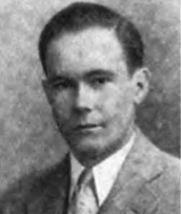 James Paxton Gleason was born July 28, 1908 in Michigan City, IN. He earned his B.A. and law degree from the University of Michigan and went into private practice. He succeeded his late father in the post of Michigan City Judge in January 1945, a post he held for one year. He later acted as a city attorney and a prosecuting attorney for Michigan City. He was an early member of The Hounds and was part of Vincent Starrett’s 1964 reorganization of the group. Gleason was a charter member of Hugo’s Companions and in 1948 he was one of the founders of The Illustrious Clients of Indianapolis. He contributed “The Sergeant and the Felony Commuter” to the July 1959 Baker Street Journal, and “Watson’s Glamour Girls” to The Illustrious Client’s Third Casebook, 1953. Gleason died on August 8, 1965 in Michigan City, IN.
James Paxton Gleason was born July 28, 1908 in Michigan City, IN. He earned his B.A. and law degree from the University of Michigan and went into private practice. He succeeded his late father in the post of Michigan City Judge in January 1945, a post he held for one year. He later acted as a city attorney and a prosecuting attorney for Michigan City. He was an early member of The Hounds and was part of Vincent Starrett’s 1964 reorganization of the group. Gleason was a charter member of Hugo’s Companions and in 1948 he was one of the founders of The Illustrious Clients of Indianapolis. He contributed “The Sergeant and the Felony Commuter” to the July 1959 Baker Street Journal, and “Watson’s Glamour Girls” to The Illustrious Client’s Third Casebook, 1953. Gleason died on August 8, 1965 in Michigan City, IN.
Biographical information provided courtesy of Jon Lellenberg.
♦
William Goodrich
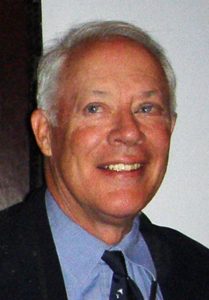 Born March 27, 1936, in Chicago, William D. Goodrich was an active Sherlockian and collector here for decades, and the last survivor of Vincent Starrett’s reorganization of The Hounds of the Baskerville (sic) in 1964. After receiving his B.A. from Dartmouth College and M.B.A. from Harvard Business School, he made a long successful career for himself at First National Bank of Chicago, eventually as vice president for its Trust Investments division. In 1975 he joined Hounds John Nieminski and Donald Pollock in creating the long-running Chicago-based quarterly journal Baker Street Miscellanea, including publishing serially, through the first six years of its quarterly issues, his Sherlock Holmes Reference Guide, a reworking of Jay Finley Christ’s Irregular Guide of 1947 keyed to the 1960 Doubleday Complete Sherlock Holmes, rather than the 1936 edition in Christ’s case. It was eventually brought out as Good Old Index by David Hammer BSI’s Gasogene Press in 1987, with a second expanded edition in 1994. Bill was long a member of Hugo’s Companions as well as The Hounds, and for his BSM and other work twice won the Companions’ Horace Harker Award, in 1982 and 1987, for achievement in the cause of keeping the Memory green. In 1977 Bill received the investiture of “Alexander Holder” from the Baker Street Irregulars. After several years of illness Bill died on October 20, 2019. We have seldom ever known a finer gentleman in our circle.
Born March 27, 1936, in Chicago, William D. Goodrich was an active Sherlockian and collector here for decades, and the last survivor of Vincent Starrett’s reorganization of The Hounds of the Baskerville (sic) in 1964. After receiving his B.A. from Dartmouth College and M.B.A. from Harvard Business School, he made a long successful career for himself at First National Bank of Chicago, eventually as vice president for its Trust Investments division. In 1975 he joined Hounds John Nieminski and Donald Pollock in creating the long-running Chicago-based quarterly journal Baker Street Miscellanea, including publishing serially, through the first six years of its quarterly issues, his Sherlock Holmes Reference Guide, a reworking of Jay Finley Christ’s Irregular Guide of 1947 keyed to the 1960 Doubleday Complete Sherlock Holmes, rather than the 1936 edition in Christ’s case. It was eventually brought out as Good Old Index by David Hammer BSI’s Gasogene Press in 1987, with a second expanded edition in 1994. Bill was long a member of Hugo’s Companions as well as The Hounds, and for his BSM and other work twice won the Companions’ Horace Harker Award, in 1982 and 1987, for achievement in the cause of keeping the Memory green. In 1977 Bill received the investiture of “Alexander Holder” from the Baker Street Irregulars. After several years of illness Bill died on October 20, 2019. We have seldom ever known a finer gentleman in our circle.
♦
Ira Martin Grais
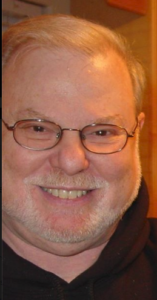
Ira Martin Grais, MD was born on November 2, 1939 in Chicago, IL. He received his medical degree from the University of Illinois and “served in the US Army during the Vietnam War where he received the Medal for Outstanding Meritorious Service.” (Chicago Tribune Media Group Publication on Aug. 13, 2019). Grais was a practicing cardiologist, certified in cardiovascular disease and internal medicine, for over 45 years. Grais was present at the reconstitution of the Hounds in 1964 (Hounds of the Baskerville (sic), Nieminski & Terras, 2017) He was a frequent contributor to medical journals on various subjects relating to cardiology, In May 2012 the Texas Heart Institute Journal printed his article “False Scents, False Sense, and False Cents. Why Physicians Should Read Sherlock Holmes.” In it he wrote that after teaching in medical schools for 5 decades, he mandated that certain Holmes stories be read by his students. Citing his experiences diagnosing patients in a number of hospitals, he concluded “The bedside application of Sherlock Holmes’s advice to Watson can sometimes lead to the diagnosis without any tests at all. Once you have the scent, you can use your sense to save some cents.” Two years later he published another article in the same journal titled “Born to Observe” and wrote “In my early teens, when I first read the Sherlock Holmes stories, I was already driven to pursue a career in medicine. That Conan Doyle patterned Holmes after his mentor, Dr. Joe Bell, was well known.” He was with the Department of Medicine/Cardiology Division, Feinberg School of Medicine, Northwestern University. Grais passed away in Lincolnwood, IL on August 11, 2019.
Biographical information provided courtesy of Julie McKuras.
♦
Richard Lancelyn Green
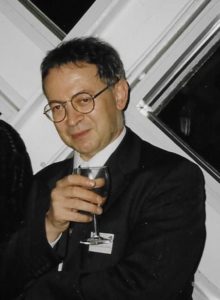 Richard Lancelyn Green was born July 10, 1953 in Bebington, Cheshire England and was raised at Poulton Hall, educated at Bradfield College and at University College, Oxford. He became interested in Holmes when he was a child and joined The Sherlock Holmes Society of London at the age of twelve. Green was known to be one of the world’s foremost collectors of Conan Doyle and Sherlock Holmes materials, a widely recognized expert on Doyle and Holmes, and a prolific author. Among his many writings, he co-edited, with John Michael Gibson, A Bibliography of A. Conan Doyle (1983), and received an Edgar Award for the book in 1984. With Gibson, he also co-edited Uncollected Stories (1982), Essays on Photography (1982), and Letters to the Press (1986). He published The Uncollected Sherlock Holmes (1983), The Further Adventures of Sherlock Holmes (1985) and Letters to Sherlock Holmes (1985). He was a contributor to the Baker Street Journal and authored the 2002 Christmas Annual, Tilting at Windmills. He received the investiture of “The Three Gables” from The Baker Street Irregulars in 1985. Green served as chairman of The Sherlock Holmes Society of London from 1996-99 and participated in many of their tours and meetings. The Society now hosts a yearly Richard Lancelyn Green Lecture. Green attended and spoke at the 2003 dedication of the Kittle Collection at the Newberry Library. He was also an honorary member of The Arthur Conan Doyle Society. His other interests included E. W. Hornung and travel. He planned to write a three-volume biography of Arthur Conan Doyle which was unfinished at the time of his death in London on March 27, 2004. In his will he left his collection to the city of Portsmouth.
Richard Lancelyn Green was born July 10, 1953 in Bebington, Cheshire England and was raised at Poulton Hall, educated at Bradfield College and at University College, Oxford. He became interested in Holmes when he was a child and joined The Sherlock Holmes Society of London at the age of twelve. Green was known to be one of the world’s foremost collectors of Conan Doyle and Sherlock Holmes materials, a widely recognized expert on Doyle and Holmes, and a prolific author. Among his many writings, he co-edited, with John Michael Gibson, A Bibliography of A. Conan Doyle (1983), and received an Edgar Award for the book in 1984. With Gibson, he also co-edited Uncollected Stories (1982), Essays on Photography (1982), and Letters to the Press (1986). He published The Uncollected Sherlock Holmes (1983), The Further Adventures of Sherlock Holmes (1985) and Letters to Sherlock Holmes (1985). He was a contributor to the Baker Street Journal and authored the 2002 Christmas Annual, Tilting at Windmills. He received the investiture of “The Three Gables” from The Baker Street Irregulars in 1985. Green served as chairman of The Sherlock Holmes Society of London from 1996-99 and participated in many of their tours and meetings. The Society now hosts a yearly Richard Lancelyn Green Lecture. Green attended and spoke at the 2003 dedication of the Kittle Collection at the Newberry Library. He was also an honorary member of The Arthur Conan Doyle Society. His other interests included E. W. Hornung and travel. He planned to write a three-volume biography of Arthur Conan Doyle which was unfinished at the time of his death in London on March 27, 2004. In his will he left his collection to the city of Portsmouth.
Biographical information provided courtesy of Julie McKuras.
♦
Robert Hahn
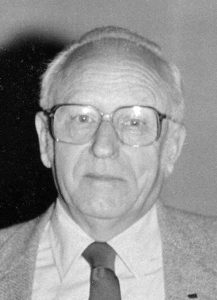 Robert Walter Hahn was born August 4, 1918 in Chicago, IL. He received his B.A. from Loyola University. Hahn moved to Sheboygan WI in early 1981 and was employed there as the international sales manager for at Thomas Industries, a position he held until his retirement in 1985. While still in Chicago, he pursued his childhood interest in Sherlock Holmes and joined Hugo’s Companions in 1960; he held the post of Sir Hugo for 9 years. Hahn founded the Chicago Silver Blaze in 1960 and hosted it for many years. In 1963 he received the investiture of “Colonel Ross” and the Two Shilling Award in 1981 from The Baker Street Irregulars. Hahn edited The Devon County Chronicle for over thirty years and was active in developing Sherlockian programs and exhibits. After his move to Sheboygan WI he founded The Merripit House Guests, acting as Sir Charles, and founded and acted as executive secretary for The Central Press Syndicate, a society for Sherlockian newsletter editors. Hahn was known for the Aunt Clara Sing Off held in New York during the BSI weekend. He contributed “The Irregulars’ Room” to the June 1964 Baker Street Journal, “Recount, Please, Mr. Holmes” in the December 1976 issue and “Sidelights on Starrett” to the September 1986 issue. In 1967 he wrote “The Adventure of the Copper’s Breeches.” His pastiche “The Adventure of the Mnenomic Norwegian” was published in the September 1986 issue of Alfred Hitchcock’s Mystery Magazine. Hahn died on February 4, 1999 Sheboygan, WI.
Robert Walter Hahn was born August 4, 1918 in Chicago, IL. He received his B.A. from Loyola University. Hahn moved to Sheboygan WI in early 1981 and was employed there as the international sales manager for at Thomas Industries, a position he held until his retirement in 1985. While still in Chicago, he pursued his childhood interest in Sherlock Holmes and joined Hugo’s Companions in 1960; he held the post of Sir Hugo for 9 years. Hahn founded the Chicago Silver Blaze in 1960 and hosted it for many years. In 1963 he received the investiture of “Colonel Ross” and the Two Shilling Award in 1981 from The Baker Street Irregulars. Hahn edited The Devon County Chronicle for over thirty years and was active in developing Sherlockian programs and exhibits. After his move to Sheboygan WI he founded The Merripit House Guests, acting as Sir Charles, and founded and acted as executive secretary for The Central Press Syndicate, a society for Sherlockian newsletter editors. Hahn was known for the Aunt Clara Sing Off held in New York during the BSI weekend. He contributed “The Irregulars’ Room” to the June 1964 Baker Street Journal, “Recount, Please, Mr. Holmes” in the December 1976 issue and “Sidelights on Starrett” to the September 1986 issue. In 1967 he wrote “The Adventure of the Copper’s Breeches.” His pastiche “The Adventure of the Mnenomic Norwegian” was published in the September 1986 issue of Alfred Hitchcock’s Mystery Magazine. Hahn died on February 4, 1999 Sheboygan, WI.
Biographical information provided courtesy of Julie McKuras.
♦
David Harnois
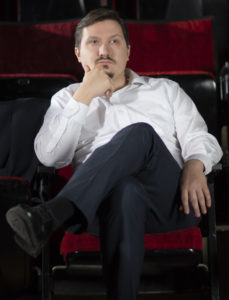
Photo credit Hallie Bear
David Harnois was born on August 29th, 1985 in Chicago. He started doing theatre in 1997, performing onstage, and work his way back to the technical side. He has been doing theatre professionally since 2006, working as a carpenter, technical director, lighting and sound designer, and a scenic studio supervisor. In 2013, he had a turn onstage as Sherlock Holmes in Katie Forgette’s Sherlock Holmes and the Case of the Jersey Lily. That experience led him to found I Am Lost Without My Boswell, an entirely volunteer driven effort to produce audio dramatizations of the entire Sherlock Holmes canon. Boswell helped introduce him to the greater Sherlockian world, becoming a member of The Younger Stamfords, The Iowa Valley of Fear, speaking at A Scintillation of Scions, being made an invested member of The Crew of the Barque Lone Star, and The Hounds of the Baskerville (sic) in 2018. In 2023, David received the investiture of “James Boswell” from The Baker Street Irregulars. In addition to his Sherlockian and theatrical pursuits, he formerly played cello, and still plays guitar, sings and writes his own music. He also enjoys spending his time with video games and comic books (especially Batman).
♦
Cornelis Helling

Cornellis Helling was born September 9, 1901 in Amsterdam. As a young man he started reading the stories of Jules Verne and Sir Arthur Conan Doyle, two interests which stayed with him for the rest of his life. He also spoke French fluently and was quite interested in French culture. After completing his schooling, he worked as an administrator at an Amsterdam notary’s office. Helling was a prominent member of the Jules Verne Society and wrote numerous articles about the author. He served as Vice-president of the Société Jules Vernein Paris for over 30 years, and was honored for his work. Helling wrote about his “first meeting with Sherlock Holmes” in the April 1951 Baker Street Journal. He wrote when he was “ten or eleven years old” he visited a schoolmates home where he discovered a “row of Dutch translations of the Sacred Writings.” He was made a Hound in 1946. His first article in the Journal, “Sherlock Holmes in Holland,” appeared in the October 1947 issue. The April 1953 issue carried the news that he had formed a scion society in Holland, The Crew of the S. S. Friesland in October 1952. He contributed a number of other articles to the Journal and in 1961 received the investiture of “The Reigning Family of Holland” from The Baker Street Irregulars. Helling passed away on March 10, 1995 in Emmeloord, Netherlands.
Biographical information provided courtesy of Julie McKuras. Photo from the Dutch Jules Verne Society.
♦
Rod Henshaw
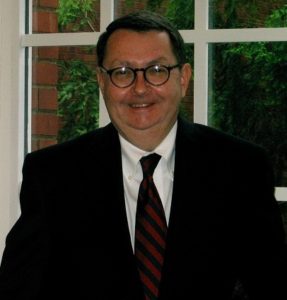
Rod Henshaw is a native of Altoona, Pennsylvania. He has 45 years’ experience as a professional librarian, serving in library leadership positions at the Iowa State, Penn State and Emory Universities. He served as Dean, University Library, at Drake University in Des Moines Iowa for twenty–two years, and currently remains an active member of the Drake faculty.
Rod’s interest in all things Sherlock began at an early age with the encouragement of his parents. As an alumni of North Texas State University, he was active in North Texas sherlockian activities. Later he became a member of The Sub-Librarians Scion of the Baker Street Irregulars in the American Library Association. Currently at Drake University he teaches an annual course “Sherlock Holmes – A Study in Character and Culture”. In addition he gives his lecture “The Secrets of Sherlock Holmes” to community groups, including the distinguished Ray Society organization. In 2019 he curated the exhibit “Sherlock Lives!, which contained items from the extensive Conan Doyle and Sherlock collection that he presented as a gift to and is housed in the Drake University Library Special Collections. In addition to all things Sherlock, Rod is very active in the model train community and is a member of the Train Collectors Association, the Lionel Collectors Club, and the National Model Railroad Association. He became a member of The Hounds of the Baskerville (sic) in 2019.
♦
Telford Hollman
 Telford Francis Hollman was born in Chicago IL on September 14, 1912. Both his parents had been born in Lithuania, and his father Louis was the founder of Chicago’s Checker Cleaners Inc. Telford attended Western Military Academy in Alton, IL, graduated from Northwestern University in Evanston, and then took a J.D. degree from the University of Chicago’s Law School in 1935. He practiced law in Chicago for several years, but then became part of the family business. In 1967, Telford Hollman returned to law by moving to Cedar Rapids, IA, to become a law professor there at the University of Northern Iowa’s Business School. Fifteen years later he retired from that to Sarasota, FL. He was an early member of The Hounds, and one of the first to become part of Hugo’s Companions when Matt Fairlie proposed creating it at The Hounds’ annual dinner on January 6, 1949, as a scion of its in order to give Chicago a basis for Sherlockian activity throughout the year. He died in Sarasota, FL on January 27, 1997.
Telford Francis Hollman was born in Chicago IL on September 14, 1912. Both his parents had been born in Lithuania, and his father Louis was the founder of Chicago’s Checker Cleaners Inc. Telford attended Western Military Academy in Alton, IL, graduated from Northwestern University in Evanston, and then took a J.D. degree from the University of Chicago’s Law School in 1935. He practiced law in Chicago for several years, but then became part of the family business. In 1967, Telford Hollman returned to law by moving to Cedar Rapids, IA, to become a law professor there at the University of Northern Iowa’s Business School. Fifteen years later he retired from that to Sarasota, FL. He was an early member of The Hounds, and one of the first to become part of Hugo’s Companions when Matt Fairlie proposed creating it at The Hounds’ annual dinner on January 6, 1949, as a scion of its in order to give Chicago a basis for Sherlockian activity throughout the year. He died in Sarasota, FL on January 27, 1997.
Biographical information provided courtesy of Jon Lellenberg.
♦
♦
David C. Humphrey
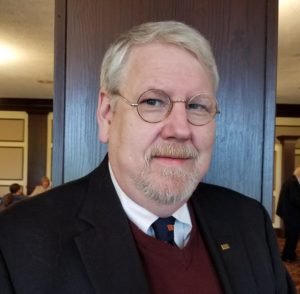 David C. Humphrey was born and bred in the small coal mining town of Winnetka, Ill.. He became devoted to Sherlock Holmes in the sixth grade when all the rest of his extensive library disappeared from underneath his bed (presumably confiscated by his parents). David spent his first two years of university at Harlaxton College, Grantham, Lincs., England, not returning to this country until the heat was off. He completed his education at the University of Evansville and Michigan State University. He also attended law school for one year at the University of Puget Sound, which has since disappeared (you can’t prove nothin’, you got no witnesses). Two of David’s work experiences were working in a bank (bookkeeping) and in a frame shop which have led him to two of his favorite hobbies: not framing pictures and not balancing his checkbook. Among his other hobbies are history, movies, The America’s Cup, British soccer (Nottingham Forest), Titanic, Harry Potter, Jack the Ripper, knot tying and swords & knives (historical). His literary tastes range from Beowulf, Shakespeare and Dickens to Wodehouse, Sayers and Christie. His other Sherlockian credits include: Hugo’s Companions, The Sherlock Holmes Society of London, The Criterion Bar Association and The Scotland Yarders. He became a Hound in 1996. In 2007, David compiled Sir Hugo’s Literary Companion a Collection of Hugo’s Companions writings. In 2022, David received the investiture of “Chicago Central” from The Baker Street Irregulars.
David C. Humphrey was born and bred in the small coal mining town of Winnetka, Ill.. He became devoted to Sherlock Holmes in the sixth grade when all the rest of his extensive library disappeared from underneath his bed (presumably confiscated by his parents). David spent his first two years of university at Harlaxton College, Grantham, Lincs., England, not returning to this country until the heat was off. He completed his education at the University of Evansville and Michigan State University. He also attended law school for one year at the University of Puget Sound, which has since disappeared (you can’t prove nothin’, you got no witnesses). Two of David’s work experiences were working in a bank (bookkeeping) and in a frame shop which have led him to two of his favorite hobbies: not framing pictures and not balancing his checkbook. Among his other hobbies are history, movies, The America’s Cup, British soccer (Nottingham Forest), Titanic, Harry Potter, Jack the Ripper, knot tying and swords & knives (historical). His literary tastes range from Beowulf, Shakespeare and Dickens to Wodehouse, Sayers and Christie. His other Sherlockian credits include: Hugo’s Companions, The Sherlock Holmes Society of London, The Criterion Bar Association and The Scotland Yarders. He became a Hound in 1996. In 2007, David compiled Sir Hugo’s Literary Companion a Collection of Hugo’s Companions writings. In 2022, David received the investiture of “Chicago Central” from The Baker Street Irregulars.
David is busy as a commercial rental property consultant, full time father, part time writer and manager of his personal investments. David is married with one wife (Ruth). His son Jay (six) was last year named to the Zipper, Button and Shoe-tying Team in kindergarten and is soon to take over the family finances. Update: After only 14 years in kindergarten, Jay is now attending Indiana University majoring in Game Design with a minor in Bar Attending (core requirement).
♦
Ridgely Hunt
 Ridgely Hunt was born in Chicago in 1959, and, thanks to a gift of The Complete Sherlock Holmes (Doubleday edition), a postcard from 221b Baker Street (Abbey Building Society edition), and a copy of Arthur Lewis’ book Copper Beeches, all from his father, a writer for the Chicago Tribune, he conceived a love for the Canon and for the Chicago Scions which he began attending in 1971 when he was twelve years old. At the time was nicknamed “Young Wiggins” and has since been nicknamed (by Don Izban) the Dorian Gray of the Sherlockians (which he finds flattering, if mistaken).
Ridgely Hunt was born in Chicago in 1959, and, thanks to a gift of The Complete Sherlock Holmes (Doubleday edition), a postcard from 221b Baker Street (Abbey Building Society edition), and a copy of Arthur Lewis’ book Copper Beeches, all from his father, a writer for the Chicago Tribune, he conceived a love for the Canon and for the Chicago Scions which he began attending in 1971 when he was twelve years old. At the time was nicknamed “Young Wiggins” and has since been nicknamed (by Don Izban) the Dorian Gray of the Sherlockians (which he finds flattering, if mistaken).
♦
♦
Alan Iliff
 Professor Alan J. Iliff was born in 1947 and has lived most of his life in Chicago. He saw the first showing of the Basil Rathbone movie of The Hound of the Baskervilles on local television, and was given a Book of the Month Club two volume Doubleday Canon by his parents, when he was about ten years old. It disintegrated, as book club editions are wont to do, but he now has many others. He was introduced to Sherlockianism and to Sir Hugo’s Companions in the early 1980s by Companion (and Hound) Ridgely Hunt. After a few decades, he finally became a full-fledged Companion and a Hound in 152 A.H. Professor Iliff has been the Most Wicked Companion (aka, the Treasurer) of Sir Hugo’s Companions since 2009, having been apprenticed in wickedness to Companion (and Hound) Jack Wilson and then succeeding Companion Wilson in that evil position. Professor Iliff likes to remind other Sherlockians that his middle name is James, and that James Moriarty was also a mathematics professor.
Professor Alan J. Iliff was born in 1947 and has lived most of his life in Chicago. He saw the first showing of the Basil Rathbone movie of The Hound of the Baskervilles on local television, and was given a Book of the Month Club two volume Doubleday Canon by his parents, when he was about ten years old. It disintegrated, as book club editions are wont to do, but he now has many others. He was introduced to Sherlockianism and to Sir Hugo’s Companions in the early 1980s by Companion (and Hound) Ridgely Hunt. After a few decades, he finally became a full-fledged Companion and a Hound in 152 A.H. Professor Iliff has been the Most Wicked Companion (aka, the Treasurer) of Sir Hugo’s Companions since 2009, having been apprenticed in wickedness to Companion (and Hound) Jack Wilson and then succeeding Companion Wilson in that evil position. Professor Iliff likes to remind other Sherlockians that his middle name is James, and that James Moriarty was also a mathematics professor.
♦
♦
Donald B. Izban
 Donald B. Izban has been called “the Dean of Chicago Sherlockians” – a title he resents primarily because he doesn’t quite know what it means. But, that’s not unusual – he doesn’t understand lots of things; for example, he’s been seeking the answer to this question for decades: Why do Sherlockians place so much emphasis on becoming an invested member of The Baker Street Irregulars, when almost all of the “action” (and incidentally, the fun) in the Sherlock Holmes hobby is at the local scion level? That said, compeer Izban enjoys the “action” to a seemingly infinite degree, to wit:
Donald B. Izban has been called “the Dean of Chicago Sherlockians” – a title he resents primarily because he doesn’t quite know what it means. But, that’s not unusual – he doesn’t understand lots of things; for example, he’s been seeking the answer to this question for decades: Why do Sherlockians place so much emphasis on becoming an invested member of The Baker Street Irregulars, when almost all of the “action” (and incidentally, the fun) in the Sherlock Holmes hobby is at the local scion level? That said, compeer Izban enjoys the “action” to a seemingly infinite degree, to wit:
- He’s authored or co-authored (with his wife, Patricia) five Sherlock Holmes books, and a sixth is, proverbially, “in the works”;
- he’s been a contributor for years to various Sherlockian publications with essays, reviews, criticisms, poetry, etc. to his credit;
- he received the investiture of “Market Street” from The Baker Street Irregulars in 1994, and has founded several BSI scion societies, including The Torists International (with Tony Citera and Fred Levin as co-founders), Colonel Sebastian Moran’s Secret Gun Club, a Sherlock Holmes Brunch Club, The STUD Sherlockian Society, The Sherlockians by Invitation Only Society, and The Lucca Gang of New York City;
- he’s created such Sherlockian “grand doings” as the enormously popular and successful Canonical Convocation and Caper (in Door County, Wisconsin), a mongoose hunt on every leap year day since 1996, a Morley Motorcade, the Sherlockathon (which is a Canonically styled treasure hunt kind of experience), a Rache Road Rally; and . . .
the List goes on, and on, and on. But who really cares? Nobody, absolutely nobody, and that includes Don Izban, himself. However, there is a message to this diatribe – an exemplum in truth, as a philosopher would say – and, if you’ve read this far, that subtle lesson should be –again, put philosophically – self-evident. Satis verborum
♦
Jens Byskov Jensen
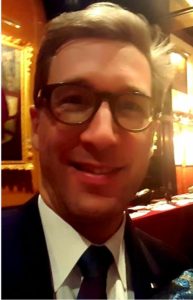 Jens Byskov Jensen became a member of Hugo’s Companions in 2002. At the time he was living in Denmark (his native country), but in 2003 he went to a meeting at Baskerville Hall, and the following year he moved to Chicago. Jensen was a featured speaker at the 60th Anniversary of The Hounds of the Baskerville (sic). When relocating to New Orleans, Jensen found the Sherlockian scene there lacking, as he longed for the familiar carousal of the Companions. So he started a scion society in New Orleans, which was given the name Le Cercle de Sherlock Holmes, honoring the rich French heritage of the Crescent City. That group was recognized as a scion of The Baker Street Irregulars in 2006. Unfortunately, Hurricane Katrina had her impact on the group and it became inactive shortly thereafter. Jensen became ”The Blanched Soldier” in the Baker Street Irregulars in 2009. By then he had returned to Denmark, and in 2013 he was appointed president of Sherlock Holmes Klubben i Danmark – the Danish Baker Street Irregulars. Jensen’s scholarship has been published in the Baker Street Journal and other places such as Sir Hugo’s Literary Companion edited by David C. Humphrey, and Scandinavia and Sherlock Holmes published by the BSI. Jens was 2006 recipient of the Horace Harker Award of Hugo’s Companions. He is a violinist by profession.
Jens Byskov Jensen became a member of Hugo’s Companions in 2002. At the time he was living in Denmark (his native country), but in 2003 he went to a meeting at Baskerville Hall, and the following year he moved to Chicago. Jensen was a featured speaker at the 60th Anniversary of The Hounds of the Baskerville (sic). When relocating to New Orleans, Jensen found the Sherlockian scene there lacking, as he longed for the familiar carousal of the Companions. So he started a scion society in New Orleans, which was given the name Le Cercle de Sherlock Holmes, honoring the rich French heritage of the Crescent City. That group was recognized as a scion of The Baker Street Irregulars in 2006. Unfortunately, Hurricane Katrina had her impact on the group and it became inactive shortly thereafter. Jensen became ”The Blanched Soldier” in the Baker Street Irregulars in 2009. By then he had returned to Denmark, and in 2013 he was appointed president of Sherlock Holmes Klubben i Danmark – the Danish Baker Street Irregulars. Jensen’s scholarship has been published in the Baker Street Journal and other places such as Sir Hugo’s Literary Companion edited by David C. Humphrey, and Scandinavia and Sherlock Holmes published by the BSI. Jens was 2006 recipient of the Horace Harker Award of Hugo’s Companions. He is a violinist by profession.
♦
C. Arnold Johnson
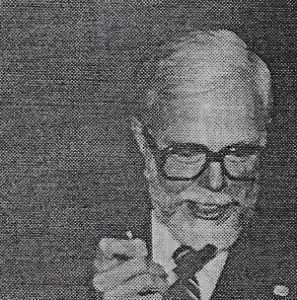 Carl Arnold Johnson was born August 6, 1918 in Chicago, IL, the son of Swedish immigrants. He started out as a tool maker in a machine shop and then served in the U.S. Army during World War II. According to his obituary in The Grimpen Mire Gazette, he was a member of MENSA and was “devoted to the golden age of mysteries and such sleuths as Bulldog Drummond or Nick and Nora Charles.” He had his “own engineering design business before he joined Motorola Corp. where he designed special radios.” (The Grimpen Mire Gazette). Johnson was a member of Mycroft’s Isolated Companions and Hugo’s Companions, serving as Most Wicked Companion. He contributed the article “An East Wind” which appeared in the March 1981 Baker Street Journal. Johnson died on August 9, 1995.
Carl Arnold Johnson was born August 6, 1918 in Chicago, IL, the son of Swedish immigrants. He started out as a tool maker in a machine shop and then served in the U.S. Army during World War II. According to his obituary in The Grimpen Mire Gazette, he was a member of MENSA and was “devoted to the golden age of mysteries and such sleuths as Bulldog Drummond or Nick and Nora Charles.” He had his “own engineering design business before he joined Motorola Corp. where he designed special radios.” (The Grimpen Mire Gazette). Johnson was a member of Mycroft’s Isolated Companions and Hugo’s Companions, serving as Most Wicked Companion. He contributed the article “An East Wind” which appeared in the March 1981 Baker Street Journal. Johnson died on August 9, 1995.
Biographical information provided courtesy of Julie McKuras.
♦
Timothy J. Johnson
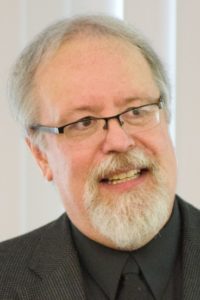 Timothy J. Johnson is a librarian who did not spend much time reading as a young boy. However, as an undergraduate studying history, he was forced to read, enjoyed it, and was forever hooked by books. Following a 1979 degree at North Park University in Chicago, Tim pursued a graduate library science degree at the University of Minnesota, which he completed in 1982. At Barat College in Lake Forest, Illinois, Tim took his first professional/faculty position as an Instructional Services Librarian and later as Library Director, while also moonlighting as Medical Librarian at Lake Forest Hospital. About this time, Tim encountered Jeremy Brett on PBS, was reminded of tales he read as a youngster, and slowly moved into the Sherlockian world. He also became Director of Archives at North Park University, a position he occupied for a dozen years. While at North Park, Tim completed a second master’s degree in theological studies, graduating with highest honors. In 1998, he was appointed Curator of Special Collections & Rare Books at the University of Minnesota, a position that placed him in charge of the world’s largest collection of Sherlockiana. Shortly thereafter, he joined The Norwegian Explorers of Minnesota, helped celebrate their 50th anniversary, and became a regular contributor to the Friends of the Sherlock Holmes Collections newsletter. In 2010, Tim was named the first E. W. McDiarmid Curator of the Sherlock Holmes Collections, an endowed position. For a decade, he also served as an adjunct faculty member at St. Catherine University in their graduate library and information science program. His published work—including some Holmesian pieces—appears in books, professional/academic journals, blogs, magazines, and newsletters. Tim was the collections consultant for The International Exhibition of Sherlock Holmes, has curated numerous Sherlockian exhibits, and presents Holmes and the Collections to enthusiastic audiences. In 2022, Tim received the investiture of “Theophilus Johnson” from The Baker Street Irregulars.
Timothy J. Johnson is a librarian who did not spend much time reading as a young boy. However, as an undergraduate studying history, he was forced to read, enjoyed it, and was forever hooked by books. Following a 1979 degree at North Park University in Chicago, Tim pursued a graduate library science degree at the University of Minnesota, which he completed in 1982. At Barat College in Lake Forest, Illinois, Tim took his first professional/faculty position as an Instructional Services Librarian and later as Library Director, while also moonlighting as Medical Librarian at Lake Forest Hospital. About this time, Tim encountered Jeremy Brett on PBS, was reminded of tales he read as a youngster, and slowly moved into the Sherlockian world. He also became Director of Archives at North Park University, a position he occupied for a dozen years. While at North Park, Tim completed a second master’s degree in theological studies, graduating with highest honors. In 1998, he was appointed Curator of Special Collections & Rare Books at the University of Minnesota, a position that placed him in charge of the world’s largest collection of Sherlockiana. Shortly thereafter, he joined The Norwegian Explorers of Minnesota, helped celebrate their 50th anniversary, and became a regular contributor to the Friends of the Sherlock Holmes Collections newsletter. In 2010, Tim was named the first E. W. McDiarmid Curator of the Sherlock Holmes Collections, an endowed position. For a decade, he also served as an adjunct faculty member at St. Catherine University in their graduate library and information science program. His published work—including some Holmesian pieces—appears in books, professional/academic journals, blogs, magazines, and newsletters. Tim was the collections consultant for The International Exhibition of Sherlock Holmes, has curated numerous Sherlockian exhibits, and presents Holmes and the Collections to enthusiastic audiences. In 2022, Tim received the investiture of “Theophilus Johnson” from The Baker Street Irregulars.
♦
Claudine Kastner
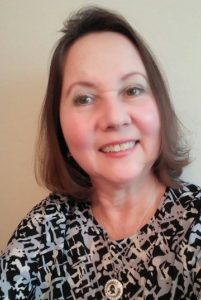 Claudine Kastner was introduced to the Master at the age of 7, via an illustrated book of Holmes’ cases; with “The Speckled Band,” it was love at first read. She began collecting pastiches and memorabilia in high school, and was introduced to the world of organized Midwest Sherlockian societies in the early 1980s, attending seminars, lectures and symposia featuring the likes of John Bennett Shaw, Ely Leibow, David Hammer, Bob Hahn, Michael Harrison, Jack Tracy and Nicholas Meyer. Traversed the Caribbean on two Holmesian cruises with a hundred or so fellow Sherlockians, and was privileged to have met actors Jeremy Brett and Edward Hardwicke, both gracious and upstanding gentlemen. Having served as president and treasurer of Chicago’s The Criterion Bar Association and The Torists International Scion Society (holding the investitures of “221B” with both organizations,) Claudine is also a charter member of The Scotland Yarders; member of The Hounds of the Baskerville (sic); STUD Sherlockian Society; and Sherlockian Brunch Club. She has given Canonical presentations to many of these groups, as well as Chicago’s prestigious Hugo’s Companions, and acquired numerous lifelong friends along the way!
Claudine Kastner was introduced to the Master at the age of 7, via an illustrated book of Holmes’ cases; with “The Speckled Band,” it was love at first read. She began collecting pastiches and memorabilia in high school, and was introduced to the world of organized Midwest Sherlockian societies in the early 1980s, attending seminars, lectures and symposia featuring the likes of John Bennett Shaw, Ely Leibow, David Hammer, Bob Hahn, Michael Harrison, Jack Tracy and Nicholas Meyer. Traversed the Caribbean on two Holmesian cruises with a hundred or so fellow Sherlockians, and was privileged to have met actors Jeremy Brett and Edward Hardwicke, both gracious and upstanding gentlemen. Having served as president and treasurer of Chicago’s The Criterion Bar Association and The Torists International Scion Society (holding the investitures of “221B” with both organizations,) Claudine is also a charter member of The Scotland Yarders; member of The Hounds of the Baskerville (sic); STUD Sherlockian Society; and Sherlockian Brunch Club. She has given Canonical presentations to many of these groups, as well as Chicago’s prestigious Hugo’s Companions, and acquired numerous lifelong friends along the way!
Proud to have raised a new generation of Sherlockians, accompanied by their spouses and significant others, Claudine has participated in Sherlockian events in Dubuque, St. Louis, Indianapolis, Dayton and New York. Three generations of Claudine’s family (her mother is also a Holmes fan), attended fall weekends in Door County, Wisconsin for the “Canonical Convocation and Caper,” a tradition for over 25 years. A lifelong collector of Sherlockiana, her prized possessions include a John Brousch oil painting of Holmes, handmade Sherlockian gifts from family and friends, and an Al Hirschfeld-signed lithograph (limited edition #221 of course!) of his famed Basil Rathbone/Nigel Bruce caricature. Mr. Hirschfeld represents Claudine’s other lifelong passion – live theatre. Sherlockian plays are, thus, doubly magical!
♦
Gerald Kaufmann
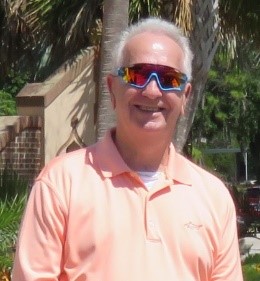 Gerald Kaufmann, a native Chicagoan and resident of Port Charlotte, Florida, is an impassioned Sherlockian and bibliophile who lectures on rare and collectible A.C. Doyle materials and has spent a lifetime collecting books for his private library. He has been a member of The Hounds of the Baskerville (sic), a Chicago Scion of BSI, since 1981, and a member of The Sherlock Holmes Society of London since 1983. In 2007 Mr. Kaufmann was honored to be elected as an “Old Wastonian” and presented with “The Old Campaigner Award” by The Watsonians. He has also been a member of SBIOS since 1996, a singular society founded by Donald Izban, BSI. Born in Chicago, Illinois, Mr. Kaufmann is a graduate of Albert G. Lane Technical High School and Wright City College. He continued his education with degrees from Purdue University’s Krannert School of Business (Insurance division), and a Bachelor of Philosophy from Northwestern University. Mr. Kaufmann was a Senior Business Executive in the field of finance. His career encompassed 22 years in senior executive positions with General Electric, RCA and Nacolah Holding Corporation, and included election to the Board of Directors. Mr. Kaufmann then worked at Unitrin where he oversaw its’ General Agency Division for almost 10 years. He was also a small business consultant for 9 years. Although retired, Mr. Kaufmann continues to travel and lecture, remains active with The Hounds, and works to expand his private library and cherished collection of all things A.C. Doyle.
Gerald Kaufmann, a native Chicagoan and resident of Port Charlotte, Florida, is an impassioned Sherlockian and bibliophile who lectures on rare and collectible A.C. Doyle materials and has spent a lifetime collecting books for his private library. He has been a member of The Hounds of the Baskerville (sic), a Chicago Scion of BSI, since 1981, and a member of The Sherlock Holmes Society of London since 1983. In 2007 Mr. Kaufmann was honored to be elected as an “Old Wastonian” and presented with “The Old Campaigner Award” by The Watsonians. He has also been a member of SBIOS since 1996, a singular society founded by Donald Izban, BSI. Born in Chicago, Illinois, Mr. Kaufmann is a graduate of Albert G. Lane Technical High School and Wright City College. He continued his education with degrees from Purdue University’s Krannert School of Business (Insurance division), and a Bachelor of Philosophy from Northwestern University. Mr. Kaufmann was a Senior Business Executive in the field of finance. His career encompassed 22 years in senior executive positions with General Electric, RCA and Nacolah Holding Corporation, and included election to the Board of Directors. Mr. Kaufmann then worked at Unitrin where he oversaw its’ General Agency Division for almost 10 years. He was also a small business consultant for 9 years. Although retired, Mr. Kaufmann continues to travel and lecture, remains active with The Hounds, and works to expand his private library and cherished collection of all things A.C. Doyle.
♦
Michael Kean
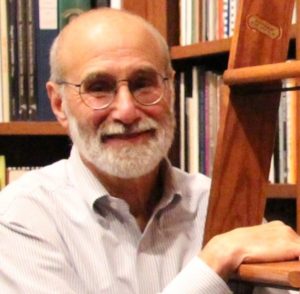
Michael H. Kean received his B.A. at Penn State. After completing his M.A. and Ph.D. at Ohio State. Michael returned to his native Philadelphia, and it was there that he became involved in the Sherlockian world. He joined the Master’s Class in 1975 and became a member of the Sons of the Copper Beeches (and a Master Copper-Beech-Smith). He was invested in the Baker Street Irregulars in 1979 as “General Charles Gordon,” and during his annual sojourns to New York became friendly with Bob Mangler, Ely Liebow, John Nieminski and other Windy City Sherlockians. When he moved to Chicago’s North Shore in early 1981, he began attending Hugo’s Companions meetings and became a member of The Hounds of the Baskerville (sic) later that year. (His wife, Connie, was also honored as “Yeoman’s Daughter” at the 1981 meeting.) Michael relocated to California several years later, and has served as an officer of the local scion, The Diogenes Club of Carmel-by-the-Sea, for over thirty years. He is frequent speaker at Canonical gatherings, and several dozen of his articles have appeared in print. A retired publishing executive, Kean currently serves as Co-Publisher and Acquisitions Editor of The Baker Street Irregulars Press. He received the BSI Two Shilling Award in 2013, and in 2016 was named the BSI‘s “Cartwright.” Michael resides in Pebble Beach, CA, where he welcomes Sherlockian visitors from throughout the world. At the 2019 Baker Street Irregulars dinner, Michael Whelan announced that Kean would assume the role of Wiggins in 2020.
♦
Leonarde Keeler
Leonarde Kee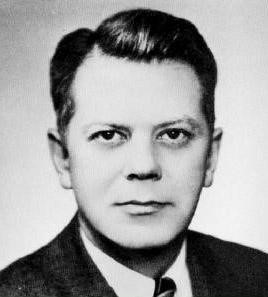 ler was born in October 1903 in Alameda, CA. Keeler, named after Leonardo da Vinci, was hired to work at the Berkeley Police Department while a student at Oakland High School. At the police department he became interested in the early work on polygraphs. He enrolled at the University of California, Berkeley in 1923 to study psychology and transferred to UCLA. In 1924 he developed his first polygraph instrument and filed for a patent in 1925; it was granted in 1931. Keeler continued his studies at Stanford and developed interrogation techniques using card tricks. He moved to Chicago in 1930 to work in Northwestern University’s Scientific Crime Detection Laboratory, the country’s first forensic laboratory. Keeler married Katherine Applegate in 1930. Trained in the field of forensics, she became the country’s first woman handwriting analyst and later founded Chicago’s all-female detective agency. The couple divorced and she died while flying solo across the country in 1944. In Feb. 1935 he used his invention, the Keeler Polygraph, known as the lie detector, on two criminals who were convicted when the test results were introduced to the court proceedings. He became head of Northwestern’s lab in 1936 but quit in 1938 to open the first polygraph training institute and become the first private polygraph consultant. After World War II, Keeler screened German Prisoners of War to determine if they could aid American occupation forces, and then screened over 800 employees at Oak Ridge to ensure nuclear secrets were kept secret. His work focused on both the guilty and the innocent. He convinced film makers that an actor couldn’t learn to use a polygraph and appeared as himself in the 1948 film “Call Northside 777” with James Stewart. Keeler suffered a stroke while visiting a friend in Sturgeon Bay WI and died on September 20, 1949. He is buried at Graceland Cemetery and his papers are held at the University of California Berkeley.
ler was born in October 1903 in Alameda, CA. Keeler, named after Leonardo da Vinci, was hired to work at the Berkeley Police Department while a student at Oakland High School. At the police department he became interested in the early work on polygraphs. He enrolled at the University of California, Berkeley in 1923 to study psychology and transferred to UCLA. In 1924 he developed his first polygraph instrument and filed for a patent in 1925; it was granted in 1931. Keeler continued his studies at Stanford and developed interrogation techniques using card tricks. He moved to Chicago in 1930 to work in Northwestern University’s Scientific Crime Detection Laboratory, the country’s first forensic laboratory. Keeler married Katherine Applegate in 1930. Trained in the field of forensics, she became the country’s first woman handwriting analyst and later founded Chicago’s all-female detective agency. The couple divorced and she died while flying solo across the country in 1944. In Feb. 1935 he used his invention, the Keeler Polygraph, known as the lie detector, on two criminals who were convicted when the test results were introduced to the court proceedings. He became head of Northwestern’s lab in 1936 but quit in 1938 to open the first polygraph training institute and become the first private polygraph consultant. After World War II, Keeler screened German Prisoners of War to determine if they could aid American occupation forces, and then screened over 800 employees at Oak Ridge to ensure nuclear secrets were kept secret. His work focused on both the guilty and the innocent. He convinced film makers that an actor couldn’t learn to use a polygraph and appeared as himself in the 1948 film “Call Northside 777” with James Stewart. Keeler suffered a stroke while visiting a friend in Sturgeon Bay WI and died on September 20, 1949. He is buried at Graceland Cemetery and his papers are held at the University of California Berkeley.
Biographical information provided courtesy of Julie McKuras.
♦
C. Frederick Kittle
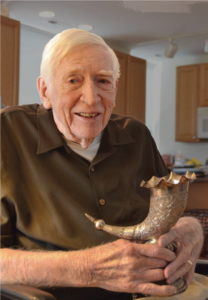 Dr. C. Frederick Kittle was born October 24, 1921 in Athens Ohio. He received a degree in Biology in 1942 from Ohio University, then enlisted in the US Navy during World War II where he pursued medical studies, receiving his MD with honors in 1945 from the University of Chicago Medical School. He remained with the US Navy in California until 1948, then completed his general and thoracic surgery residency in 1952 at the University of Kansas Medical School where his interest in the history of medicine began. He studied oncology and cardiovascular surgery, and was instrumental in banning of cigarette vending machines on hospital and university campuses. He remained at the school and served as Assistant Professor of Surgery and Lecturer in the History of Medicine. He returned to the University of Chicago Hospital in 1966 as Chief of Thoracic and Cardiovascular Surgery and performed the first heart transplant surgery in Chicago in December 1968. Ohio University presented him with an Honorary Doctor of Laws degree in 1967, citing his devotion to his profession and research. In 1973 he was named Professor of Surgery at Rush Medical School and practiced at Rush Medical Center u”ntil he retired in 1992 as well as serving as Director of the Rush Cancer Center from 1978-1986. Kittle authored over 200 professional articles and belonged to a number of medical organizations, serving as Chairman of the American Board of Thoracic Surgery from 1973-75. He was named Ohio University’s Outstanding Alumnus of the Year in 1996. Kittle became a member of the Caxton Club in 1985 and served as president 1999-2001. He also belonged to the Grolier Club. Gaslight Publications published The Stark Munro Letters in 1982, which carried Kittle’s Afterword. He was a member of Hugo’s Companions and received his shilling and investiture of “Jack Stapleton” from The Baker Street Irregulars in 2000. The Dr. and Mrs. C. F. Kittle Collection of Doyleana was dedicated at the Newberry Library in 2003. Kittle died on October 18, 2015 in Chicago.
Dr. C. Frederick Kittle was born October 24, 1921 in Athens Ohio. He received a degree in Biology in 1942 from Ohio University, then enlisted in the US Navy during World War II where he pursued medical studies, receiving his MD with honors in 1945 from the University of Chicago Medical School. He remained with the US Navy in California until 1948, then completed his general and thoracic surgery residency in 1952 at the University of Kansas Medical School where his interest in the history of medicine began. He studied oncology and cardiovascular surgery, and was instrumental in banning of cigarette vending machines on hospital and university campuses. He remained at the school and served as Assistant Professor of Surgery and Lecturer in the History of Medicine. He returned to the University of Chicago Hospital in 1966 as Chief of Thoracic and Cardiovascular Surgery and performed the first heart transplant surgery in Chicago in December 1968. Ohio University presented him with an Honorary Doctor of Laws degree in 1967, citing his devotion to his profession and research. In 1973 he was named Professor of Surgery at Rush Medical School and practiced at Rush Medical Center u”ntil he retired in 1992 as well as serving as Director of the Rush Cancer Center from 1978-1986. Kittle authored over 200 professional articles and belonged to a number of medical organizations, serving as Chairman of the American Board of Thoracic Surgery from 1973-75. He was named Ohio University’s Outstanding Alumnus of the Year in 1996. Kittle became a member of the Caxton Club in 1985 and served as president 1999-2001. He also belonged to the Grolier Club. Gaslight Publications published The Stark Munro Letters in 1982, which carried Kittle’s Afterword. He was a member of Hugo’s Companions and received his shilling and investiture of “Jack Stapleton” from The Baker Street Irregulars in 2000. The Dr. and Mrs. C. F. Kittle Collection of Doyleana was dedicated at the Newberry Library in 2003. Kittle died on October 18, 2015 in Chicago.
Biographical information provided courtesy of Julie McKuras.
♦
M.J. Latimer
 M(ilton) J(ay) Latimer, M.D., was born on January 16, 1887 in Chicago, IL. Latimer was a physician. In early 1918 he was commissioned as a First Lieutenant in the Medical Corps in the Officer’s Reserve Corps by the War Department. After the end of World War I, he was named the athletic officer in the Chicago Medical Post of the American Legion. He was involved with the Illinois Ice Skating championships. Latimer died in mid July 1965 in Burlington, IA and is buried in Irving Park Cemetery. After his death, his estate held a three day auction of his “one hundred important 19th century paintings” as well as jewelry, glass, statuary, clocks and furniture.
M(ilton) J(ay) Latimer, M.D., was born on January 16, 1887 in Chicago, IL. Latimer was a physician. In early 1918 he was commissioned as a First Lieutenant in the Medical Corps in the Officer’s Reserve Corps by the War Department. After the end of World War I, he was named the athletic officer in the Chicago Medical Post of the American Legion. He was involved with the Illinois Ice Skating championships. Latimer died in mid July 1965 in Burlington, IA and is buried in Irving Park Cemetery. After his death, his estate held a three day auction of his “one hundred important 19th century paintings” as well as jewelry, glass, statuary, clocks and furniture.
Biographical information provided courtesy of Julie McKuras.
♦
Charles Leavelle
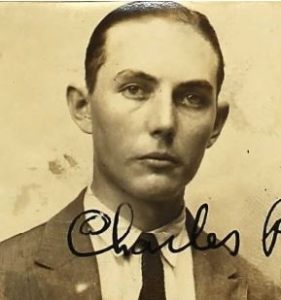
Charles Richard Leavelle was born on April 28, 1905 in Hobart, OK. In the 1920s he moved from Oklahoma to New Orleans LA where he worked as a seaman and at that same time was an International News Service Staff Correspondent. By 1930 he moved to Houston TX and was employed as a copyreader for a newspaper. He moved within several years to Chicago where he worked as a reporter for The Chicago Tribune. Leavelle was the “co-Author of the book We Thought We Heard the Angels Sing, the account of Capt. Eddie Rickenbacker’s [1942] crash and rescue in the Pacific.” (Nebraska State Journal) He also co-wrote Bataan Death March. He delivered a paper on the Ku Klux Klan at the 1947 Hounds dinner. As John Nieminski noted in The Hound’s History, Charles Collins, in his column “Line o’ Type or Two” of October 1, 1946, described Leavelle’s presentation. Leavelle died on May 10, 1948 in Chicago. He is buried in Greer County, OK.
Biographical information provided courtesy of Julie McKuras.
♦
Gene A. Leeb
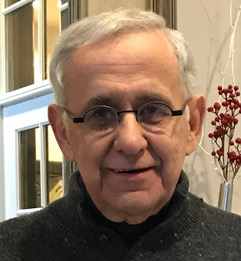 Gene A. Leeb attended school in Hammond IN and Indiana University. He became an Assistant Professor of Accounting at Wayne State University. In 1974, he worked with R.G. Harris and Aubrey Roberts to resurrect the Amateur Mendicant Society and served as Gasogene. His article “First You See It, Then You Don’t: Another Scandal in Bohemia,” co-authored with Aubrey Roberts, appeared in the March 1977 Baker Street Journal. A member of the Hounds of the Baskerville (sic) and Hugo’s Companions, he received the investiture of “The Franco-Midland Hardware Company” from the Baker Street Irregulars in 1981. He received his Masters Degree from Northwestern and currently manages his company Gene Leeb Consulting.
Gene A. Leeb attended school in Hammond IN and Indiana University. He became an Assistant Professor of Accounting at Wayne State University. In 1974, he worked with R.G. Harris and Aubrey Roberts to resurrect the Amateur Mendicant Society and served as Gasogene. His article “First You See It, Then You Don’t: Another Scandal in Bohemia,” co-authored with Aubrey Roberts, appeared in the March 1977 Baker Street Journal. A member of the Hounds of the Baskerville (sic) and Hugo’s Companions, he received the investiture of “The Franco-Midland Hardware Company” from the Baker Street Irregulars in 1981. He received his Masters Degree from Northwestern and currently manages his company Gene Leeb Consulting.
Biographical information provided courtesy of Julie McKuras.
♦
♦
Jon Lellenberg
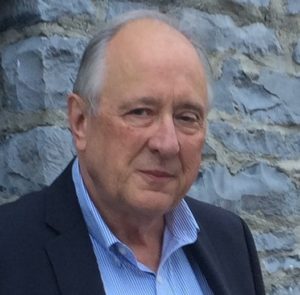
Jon Lellenberg became a Hound in 1993, but did not live in Chicago until 2006; his previous 35 years were spent in Washington D.C. as a Defense Department official. The BSI’s “Rodger Prescott” since 1974, he received both its Two-Shilling and Morley-Montgomery Awards, and served as its historian. He wrote, edited, or co-edited two dozen fiction and nonfiction books of Sherlockiana and Doyleana including the BSI Archival History series, the award-winning Arthur Conan Doyle: His Life in Letters (with fellow Hound Daniel Stashower), and his 2010 historical novel Baker Street Irregular and its companion volume Sources and Methods. He contributed prolifically to the Baker Street Journal, the Sherlock Holmes Journal, The Armchair Detective, the Friends of the Sherlock Holmes Collections newsletter, and other periodicals. Contributing editor for the Chicago-based Baker Street Miscellanea for 19 years (1975-93), he was one of the editors of the revived Saturday Review of Literature. From 1979 to 1997 he was the U.S. representative for Dame Jean Conan Doyle, and following her death for the Conan Doyle Estate Ltd. Jon was a member of his hometown scion society The Great Alkali Plainsmen of Greater Kansas City, The Red Circle of Washington D.C., Philadelphia’s Sons of the Copper Beeches, The Grillparzer Club of the Hoboken Free State, and in 1993 was named “Arthur Cadogan West” in The Five Orange Pips, which Christopher Morley called “Sherlockiana’s Institute of Higher Studies.” He was an honorary member of The Six Napoleons of Baltimore, Minnesota’s Norwegian Explorers, and the Sherlock Holmes Klubben i Danmark. With his wife Susan Jewell, a past Yeoman’s Daughter of The Hounds, he lived in Santa Fe, N.M., as he noted, “their lives regulated by their grandchildren’s schedules.” Lellenberg passed away on April 24, 2021.
.
♦
William Leonard

William Daniel Leonard was born August 24, 1912 in Chicago, IL. He began his newspaper career in 1929 as a Chicago Evening Post copyboy. “He held various posts ranging from financial writer to day city editor in the following years on The Chicago American, Chicago Herald‐Examiner and Chicago Journal of Commerce.” (New York Times) He joined The Chicago Tribune in 1951, and started his column “On the Town” the next year, covering Chicago’s night life and acting as Drama Critic 1966-1974. Leonard was known for wearing a straw hat and was the founder of the St. Louis Browns Fan Club in 1954, a group which met weekly. He frequently covered baseball in his columns. His other interests were Chicago history, the Civil War and trains. He served as a member of the editorial board of the Chicago Historical Society’s Chicago History. Leonard contributed “RE: Vampires” to 1957 The Baker Street Journal Christmas Annual. The article was reprinted in Peter Haining’s A Sherlock Holmes Compendium in 1981. Leonard died January 6, 1977 in Chicago, IL.
Biographical information provided courtesy of Julie McKuras.
♦
Alfred A. Levin
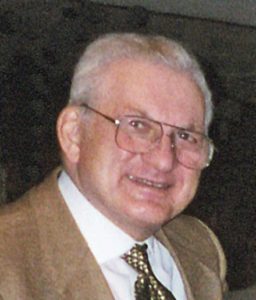
Alfred A. “Fred” Levin was born May 18, 1928 in Chicago, IL. Fred served in the US Army 1946-1948 as a Military Policeman and then Company Clerk during the time he was stationed in Japan. He attended Roosevelt College and received his BS in Chemistry in 1951 from the University of Illinois, then received his MS in Organic Chemistry from Loyola University in 1963. He worked as a chemist for the Leaf Gum Company 1951-1953 and the Wallace A. Erickson Company 1953-1955. In 1955 he joined the Chemical Corporation as a research chemist then went on to positions as Director Government Compliance and Director Toxic Substances before his retirement in 1988. He held over 20 U.S. Patents and was a member of the American Chemical Society and was published in the Journal of Organic Chemistry in 1963. His other interests were the Civil War (he was a member of the Chicago Civil War Round Table), stamp collecting and opera. Fred was a member as well as a recipient of many awards from numerous Sherlockian societies including Hugo’s Companions, The South Downers, The Criterion Bar Association, The Nashville Scholars of the Three Pipe Problem, The Bootmakers of Toronto, The Norwegian Explorers of MN, The Sherlock Holmes Society of London, The Beacon Society, The Watsonians, The Maiwand Jezails, The Scotland Yarders, Torists International, The Occupants of the Empty House, and The Illustrious Clients of Indianapolis. In 1993 he received the investiture of Abe Slaney from the Baker Street Irregulars, an investiture once held by John Nieminski. In 2007 he was awarded the Volunteer of the Year Award from the Friends of The Sherlock Holmes Collections. Fred collected Yiddish editions of the Canon, was a frequent speaker at Sherlockian events especially on the subject of the Reichenbach Falls which he visited several times, and contributed to numerous journals. Levin died on Feb. 17, 2012 in Chicago, IL.
Biographical information provided courtesy of Julie McKuras.
♦
David Levinson
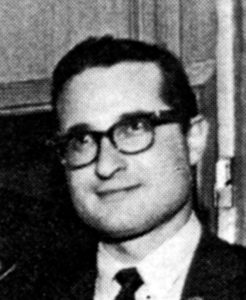
David Levinson Jr. was born April 19, 1930 in Chicago IL . He graduated from Kenyon College in Ohio and the Northwestern University School of Law. He was an attorney specializing in worker’s compensation law and later, a worker’s compensation arbitrator. Lowell B. Komie described him as a “feisty, argumentative lawyer,” a man who “loved luxury and surprises [and also] loved to travel,” and a man “who was a science fiction writer” who was published under the name Louis Newman in Galaxy Magazine. Levinson was a member of Hugo’s Companions, serving as Most Wicked Companion and Moriarty’s Advocate, and in 1962 received the investiture of Count Von und Zu Grafenstein from The Baker Street Irregulars. Levinson died March 20, 1981 in Cook County, IL. He is interred at Memorial Park Cemetery in Skokie, IL. John Nieminski’s The Hounds of the Baskerville (sic) is dedicated to him.
Biographical information provided courtesy of Julie McKuras.
♦
Ely Liebow
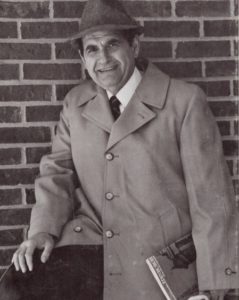
Ely Milton Liebow was born in May 23, 1924 in Washington DC and grew up in Hyattsville MD where his parents ran a grocery story. He enlisted in the US Navy in March 1943 and served as a corpsman in the South Pacific. After the war he received his BA in English at American University, a Master’s Degree in English Literature from the University of Chicago, and a PhD in 18th Century British Literature from Rutger’s University. Liebow became an instructor at Wayne State University and then at Northeastern Illinois University. His specialty was 18th and 19th century British literature and his other interests were Yiddish literature, the Bible, medieval literature, and detective fiction. Pursuing his belief in civil rights, he took part in the historic 1965 Selma AL march. He also co-chaired, with John Nieminski, the 1984 Bouchercon. He served as chairman of the English Dept. at NEIU and taught one class after his retirement. Liebow joined Hugo’s Companions in 1968 and was Sir Hugo from 1976-78, The Most Notable Companion in 1988, and won the Horace Harker Award in 1983 and 1995. He joined The Hounds in 1971, and in 1979 The Baker Street Irregulars bestowed the investiture of Inspector Gregory upon him. Liebow was an active participant in many scion meetings, often winning the quiz for the evening, and was on the faculty for the 1987 John Bennett Shaw workshop in Williamsburg VA. He served as an editorial adviser for Baker Street Miscellanea for 19 years and contributed to a number of publications but his best known writing was the 1982 Dr. Joe Bell: Model for Sherlock Holmes. (re-released in 2007). The BSI Two-Shilling Award was given to Liebow in 1991, the same year he started a society for NEIU Sherlockians. Liebow died on March 30, 2007 in Chicago IL.
Biographical information provided courtesy of Julie McKuras.
♦
Arthur Lovell
 Arthur T. Lovell was born in Knoxville, TN on June 11, 1906 and moved with his family to Chicago sometime between 1920 and 1930. He was a bookseller, running his own business at 5920 Ridge Ave. He appeared several times in Vincent Starrett’s “Books Alive” column from the period of March 1948 through July 1952, referred to as “ye olde booke seller.” Lovell died Feb. 13, 1961 in Chicago, IL.
Arthur T. Lovell was born in Knoxville, TN on June 11, 1906 and moved with his family to Chicago sometime between 1920 and 1930. He was a bookseller, running his own business at 5920 Ridge Ave. He appeared several times in Vincent Starrett’s “Books Alive” column from the period of March 1948 through July 1952, referred to as “ye olde booke seller.” Lovell died Feb. 13, 1961 in Chicago, IL.Biographical information provided courtesy of Julie McKuras.
♦
♦
Ryan Lozano
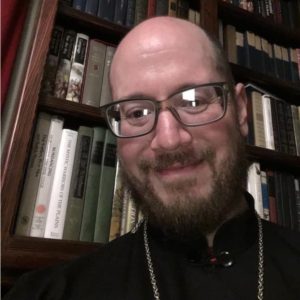 Rev. Dr. Ryan Lozano was born on September 7th, 1980 in Des Moines, IA, and grew up between that city and San Antonio, TX. His first exposure to the Canon was through a Whitman junior classics edition of the Adventures he purchased in an antique store in Galena, IL, while in elementary school; the complete annotated version would follow shortly. He attended St. Mary’s University in San Antonio, TX for his undergraduate work where he took a BA in Philosophy with a minor in Classical Studies. He then moved to Chicago to attend graduate school at Loyola University, earning an MA in Applied Philosophy with a focus in Healthcare Ethics. Though a chance reading of an ad in the Northwestern University paper he found a job working at Grosse Point Lighthouse through several summers where he met his first Sherlockian mentor – Professor Donald Terras. This was also his first exposure to tales of the exploits of the Hounds as well as Hugo’s Companions, both of which he would eventually join. Several trips through more graduate schools and seminaries later, he eventually completed the last of his formal higher education (he hopes) by earning a doctor of education in Interdisciplinary Leadership from Creighton University in Omaha, NE. Secularly, Dr. Lozano is employed as a professor of Philosophy, Ethics, and Religion by the Alamo Colleges, though he is branching into consulting now with emphases in performance excellence, continuous improvement, and organizational change/ strategy implementation. Additionally he is appointed rector of St. Andrew the First-Called Orthodox Church in Lockhart, TX, a mission parish of the Diocese of Chicago and Mid-America, Russian Orthodox Church Outside Russia (ROCOR). He is married to Gina, and they have two children, Jake and Mo (Mary Opal), along with several pets. They live in a 1903 Greek revival home in downtown Lockhart, where they enjoy reading, playing board games, cooking, gardening, and woodworking. So far as he is aware, Dr. Lozano is not only the only Texan to be admitted to the Hounds, but also the only clergyman…
Rev. Dr. Ryan Lozano was born on September 7th, 1980 in Des Moines, IA, and grew up between that city and San Antonio, TX. His first exposure to the Canon was through a Whitman junior classics edition of the Adventures he purchased in an antique store in Galena, IL, while in elementary school; the complete annotated version would follow shortly. He attended St. Mary’s University in San Antonio, TX for his undergraduate work where he took a BA in Philosophy with a minor in Classical Studies. He then moved to Chicago to attend graduate school at Loyola University, earning an MA in Applied Philosophy with a focus in Healthcare Ethics. Though a chance reading of an ad in the Northwestern University paper he found a job working at Grosse Point Lighthouse through several summers where he met his first Sherlockian mentor – Professor Donald Terras. This was also his first exposure to tales of the exploits of the Hounds as well as Hugo’s Companions, both of which he would eventually join. Several trips through more graduate schools and seminaries later, he eventually completed the last of his formal higher education (he hopes) by earning a doctor of education in Interdisciplinary Leadership from Creighton University in Omaha, NE. Secularly, Dr. Lozano is employed as a professor of Philosophy, Ethics, and Religion by the Alamo Colleges, though he is branching into consulting now with emphases in performance excellence, continuous improvement, and organizational change/ strategy implementation. Additionally he is appointed rector of St. Andrew the First-Called Orthodox Church in Lockhart, TX, a mission parish of the Diocese of Chicago and Mid-America, Russian Orthodox Church Outside Russia (ROCOR). He is married to Gina, and they have two children, Jake and Mo (Mary Opal), along with several pets. They live in a 1903 Greek revival home in downtown Lockhart, where they enjoy reading, playing board games, cooking, gardening, and woodworking. So far as he is aware, Dr. Lozano is not only the only Texan to be admitted to the Hounds, but also the only clergyman…
♦
Carter Lupton
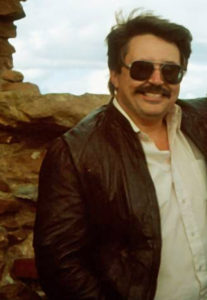 Born in Alexandria, Virginia (July 15, 1949), Carter Lupton was raised just north of Flint, Michigan until 1959 when his family moved to Milwaukee, Wisconsin, where he still lives in the suburb of Oak Creek with Lori, his wife of nearly 30 years, and their daughter Carri, a recent graduate of Marquette University. At age 10 or 11 Carter read his first Sherlock Holmes stories (Red-Headed League, Speckled Band) in an illustrated collection of classic stories abridged for youngsters. Around this time he also saw the Hammer version of “Hound of the Baskervilles”, then his only exposure to the cinematic Holmes beyond a few Basil Rathbone films on TV. While on a summer archaeological field trip to Europe in 1971, Carter read the entire 60 story Holmes canon for the first time. Long interested in both paleontology and archaeology, Carter received the degrees of BA (“71) and MS (’74) in Anthropology from the University of Wisconsin – Milwaukee. After several summers digging at Cahokia Mounds, Illinois, Carter obtained a curatorial position at the Milwaukee Public Museum in 1976, retiring after 40 years at the end of 2016; serving both the Anthropology and History departments, including a 30 month stint as Vice President of Collections, Research, Education and Exhibits. He has participated in archaeological excavations in Syria and Egypt, as well as several dinosaur expeditions to Montana, North Dakota and Utah. He was introduced to Hugo’s Companions through Don Terras, whom he had as a student in his museum studies course. The first meeting of the Companions Carter attended was in 1988 and he served as Most Wicked Companion (treasurer) from 1995-2000. Carter was officially inducted into The Hounds of the Baskerville (sic) in 1995, and his wife, Lori, was honored one year as The Yeoman’s Daughter. His Sherlockian lectures in Chicago have included “Conan Doyle and the Curse of the Pharaohs” and on the anniversary of The Lost World, “Lords, Ladies and Lovers: Romance and Rogues in the Film Versions of Doyle’s Dinosaur Epic” which introduced Professor George Edward Challenger.
Born in Alexandria, Virginia (July 15, 1949), Carter Lupton was raised just north of Flint, Michigan until 1959 when his family moved to Milwaukee, Wisconsin, where he still lives in the suburb of Oak Creek with Lori, his wife of nearly 30 years, and their daughter Carri, a recent graduate of Marquette University. At age 10 or 11 Carter read his first Sherlock Holmes stories (Red-Headed League, Speckled Band) in an illustrated collection of classic stories abridged for youngsters. Around this time he also saw the Hammer version of “Hound of the Baskervilles”, then his only exposure to the cinematic Holmes beyond a few Basil Rathbone films on TV. While on a summer archaeological field trip to Europe in 1971, Carter read the entire 60 story Holmes canon for the first time. Long interested in both paleontology and archaeology, Carter received the degrees of BA (“71) and MS (’74) in Anthropology from the University of Wisconsin – Milwaukee. After several summers digging at Cahokia Mounds, Illinois, Carter obtained a curatorial position at the Milwaukee Public Museum in 1976, retiring after 40 years at the end of 2016; serving both the Anthropology and History departments, including a 30 month stint as Vice President of Collections, Research, Education and Exhibits. He has participated in archaeological excavations in Syria and Egypt, as well as several dinosaur expeditions to Montana, North Dakota and Utah. He was introduced to Hugo’s Companions through Don Terras, whom he had as a student in his museum studies course. The first meeting of the Companions Carter attended was in 1988 and he served as Most Wicked Companion (treasurer) from 1995-2000. Carter was officially inducted into The Hounds of the Baskerville (sic) in 1995, and his wife, Lori, was honored one year as The Yeoman’s Daughter. His Sherlockian lectures in Chicago have included “Conan Doyle and the Curse of the Pharaohs” and on the anniversary of The Lost World, “Lords, Ladies and Lovers: Romance and Rogues in the Film Versions of Doyle’s Dinosaur Epic” which introduced Professor George Edward Challenger.
♦
Bonnie MacBird
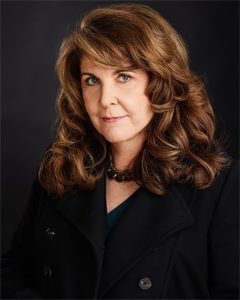 Bonnie MacBird, a San Francisco native, received her BA in Music and Masters in Film from Stanford University, and later studied Shakespeare with BADA at Oxford University. She was a Development Executive in Feature Films at Universal Studios from 1975-1979 and is the original screenwriter for “Tron” (1982). Bonnie is a playwright, an actor, and the recipient of three Emmy Awards. She has taught screenwriting at UCLA Extension and was on the Board of Stanford Alumni in Entertainment. Bonnie is married to computer scientist Alan Kay.
Bonnie MacBird, a San Francisco native, received her BA in Music and Masters in Film from Stanford University, and later studied Shakespeare with BADA at Oxford University. She was a Development Executive in Feature Films at Universal Studios from 1975-1979 and is the original screenwriter for “Tron” (1982). Bonnie is a playwright, an actor, and the recipient of three Emmy Awards. She has taught screenwriting at UCLA Extension and was on the Board of Stanford Alumni in Entertainment. Bonnie is married to computer scientist Alan Kay.
Bonnie is a member of The Adventuresses of Sherlock Holmes (“The Professional Enthusiast”, 2016) and The Baker Street Irregulars (“Art in the Blood”, 2017) and the Sherlock Holmes Society of London as well as The Curious Collectors, the Sherlock Breakfast Club, and several others. She has spent the last six years writing Holmes novels for HarperCollins which include the critically acclaimed Art in the Blood (2015), Unquiet Spirits (2017), and The Devil’s Due (2019). She has been contracted for two more and is at work on her fourth, The Three Locks.
♦
Allen Mackler
Allen M ackler was born May 26, 1943 In Chicago IL. He attended Chicago Latin School, New Trier High School, and studied music at Baldwin Wallace College and Indiana University. His interest was classical music, and he played the clarinet and piano. He ran Grooves Unlimited, a classical record store in the Chicago area and amassed a personal collection of 16,000 classical records. In the early 1970s he moved to Washington DC and worked for a country western music radio station before joining WETA, the public radio station where he served as a record librarian and then as a host for the program “Collectors’ Forum.” He belonged to The Red Circle in Washington and contributed an article titled “Carina: An Identification” to Baker Street Miscellanea in 1975. Allen received The Baker Street Irregulars investiture of “Sarasate” in 1990. The following year he moved to Osseo, Minnesota to live in a cooler climate with a Sherlock Holmes society, good restaurants and plentiful bookstores. He joined The Norwegian Explorers and found many friends, eventually serving as president of the Explorers for two years as well as editing the newsletter Explorations. He belonged to the Fowl Fanciers based on his Washington DC group The Dining Detectives. At his Osseo home, he constructed a replica of Holmes’s sitting room in and had a large library of 19th century literature. His other love was cats, giving many a good home over the years, and he kept cat food in his trunk to feed strays. He died on December 29, 2005. Allen bequeathed his books, sitting room, artwork and home to the Sherlock Holmes Collections at the University of Minnesota.
ackler was born May 26, 1943 In Chicago IL. He attended Chicago Latin School, New Trier High School, and studied music at Baldwin Wallace College and Indiana University. His interest was classical music, and he played the clarinet and piano. He ran Grooves Unlimited, a classical record store in the Chicago area and amassed a personal collection of 16,000 classical records. In the early 1970s he moved to Washington DC and worked for a country western music radio station before joining WETA, the public radio station where he served as a record librarian and then as a host for the program “Collectors’ Forum.” He belonged to The Red Circle in Washington and contributed an article titled “Carina: An Identification” to Baker Street Miscellanea in 1975. Allen received The Baker Street Irregulars investiture of “Sarasate” in 1990. The following year he moved to Osseo, Minnesota to live in a cooler climate with a Sherlock Holmes society, good restaurants and plentiful bookstores. He joined The Norwegian Explorers and found many friends, eventually serving as president of the Explorers for two years as well as editing the newsletter Explorations. He belonged to the Fowl Fanciers based on his Washington DC group The Dining Detectives. At his Osseo home, he constructed a replica of Holmes’s sitting room in and had a large library of 19th century literature. His other love was cats, giving many a good home over the years, and he kept cat food in his trunk to feed strays. He died on December 29, 2005. Allen bequeathed his books, sitting room, artwork and home to the Sherlock Holmes Collections at the University of Minnesota.
Biographical information provided courtesy of Julie McKuras.
♦
Robert J. Mangler, Master of the Hounds, 1964-2004
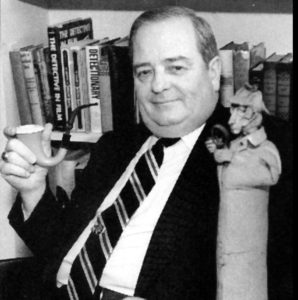 Robert J. Mangler was born on August 15, 1930. He was a man loyal to his country, the village in which he lived, his family and friends, and the Sherlockian community that he cherished until slipping into the Yellow Fog on November 29, 2010. Bob began his Sherlockian activities in his hometown of Chicago in 1953 with The Hounds of the Baskerville (sic) and Hugo’s Companions, but this association was cut short due to active duty in the Navy. He returned in 1960 and found that the Sherlockian scene had been dormant for three years. With support from Vincent Starrett, founder of the Baskerville branch of The Baker Street Irregulars, Bob issued a “clarion call” and convened a meeting of former members where he spoke about ending Chicago’s Great Hiatus. According to the late John Nieminski, Bob’s oration to those assembled rivaled in its intensity William Jennings Bryan’s famed “Cross of Gold” speech and had the effect of stampeding “the rumpees” in attendance. Bob was a persuasive guy and honed his oratory skills as a lawyer, receiving his degree from Northwestern University and serving as Corporation Counsel for the Village of Wilmette for 27 years. His leadership role at the Chicago Sherlockian revival meeting in 1960 resurrected both The Hounds and Companions and ushered in a golden age of Sherlockiana anchored by Vincent Starrett in Chicago and Julian Wolff in New York. In 1962, Bob was invested in The Baker Street Irregulars as “Sir Hugo Baskerville,” and in 1964 the esteemed Mr. Starrett gave Bob the title, Master of the Hounds. Undoubtedly, this was a high point for him but his greatest personal satisfaction came from establishing an appropriate headstone in Graceland Cemetery to mark the grave of Vincent Starrett who had died in 1974 with little financial means. The memorial was dedicated on October 26, 1986, the 100th anniversary of Starrett’s birth. After an amazing 40 years, Bob turned over leadership of The Hounds in 2005 due to health problems. Through it all, he never complained and carried on with life in a manner that showed a quality of character that few people exhibit under very trying circumstances. Not really known for his sense of humor, when he went through the amputation of a leg, he joked that his BSI Investiture should be changed from “Sir Hugo Baskerville” to “Jonathan Small.”
Robert J. Mangler was born on August 15, 1930. He was a man loyal to his country, the village in which he lived, his family and friends, and the Sherlockian community that he cherished until slipping into the Yellow Fog on November 29, 2010. Bob began his Sherlockian activities in his hometown of Chicago in 1953 with The Hounds of the Baskerville (sic) and Hugo’s Companions, but this association was cut short due to active duty in the Navy. He returned in 1960 and found that the Sherlockian scene had been dormant for three years. With support from Vincent Starrett, founder of the Baskerville branch of The Baker Street Irregulars, Bob issued a “clarion call” and convened a meeting of former members where he spoke about ending Chicago’s Great Hiatus. According to the late John Nieminski, Bob’s oration to those assembled rivaled in its intensity William Jennings Bryan’s famed “Cross of Gold” speech and had the effect of stampeding “the rumpees” in attendance. Bob was a persuasive guy and honed his oratory skills as a lawyer, receiving his degree from Northwestern University and serving as Corporation Counsel for the Village of Wilmette for 27 years. His leadership role at the Chicago Sherlockian revival meeting in 1960 resurrected both The Hounds and Companions and ushered in a golden age of Sherlockiana anchored by Vincent Starrett in Chicago and Julian Wolff in New York. In 1962, Bob was invested in The Baker Street Irregulars as “Sir Hugo Baskerville,” and in 1964 the esteemed Mr. Starrett gave Bob the title, Master of the Hounds. Undoubtedly, this was a high point for him but his greatest personal satisfaction came from establishing an appropriate headstone in Graceland Cemetery to mark the grave of Vincent Starrett who had died in 1974 with little financial means. The memorial was dedicated on October 26, 1986, the 100th anniversary of Starrett’s birth. After an amazing 40 years, Bob turned over leadership of The Hounds in 2005 due to health problems. Through it all, he never complained and carried on with life in a manner that showed a quality of character that few people exhibit under very trying circumstances. Not really known for his sense of humor, when he went through the amputation of a leg, he joked that his BSI Investiture should be changed from “Sir Hugo Baskerville” to “Jonathan Small.”
Biographical information provided courtesy of Donald J. Terras.
♦
Thomas Mann
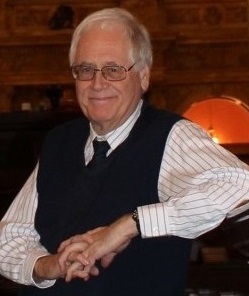 Thomas Mann received his Ph.D. from Loyola University of Chicago and his M.L.S. degree from Louisiana State University in Baton Rouge. He worked briefly as a private investigator in Baton Rouge before becoming a librarian; he then spent 33 years as a general reference librarian in the Main Reading Room of the Library of Congress before retiring in 2015. He still volunteers at the reference desk on Saturdays. He is the author of The Oxford Guide to Library Research, now in its 4th edition (2015) from Oxford University Press.; and Library Research Models from the same publisher. He is also a fan of old movies and in that field has published Horror and Mystery Photoplay Editions and Magazine Fictionizations (McFarland, 2004; vol. II, BearManor Media, 2015), and London After Midnight: A New Reconstruction Based on Contemporary Sources (BearManor, 2015). He lives in Washington, DC, and is happily pursuing a retirement project of reading all of the world’s great books, especially while sitting in cheap dive diners and neighborhood bars.
Thomas Mann received his Ph.D. from Loyola University of Chicago and his M.L.S. degree from Louisiana State University in Baton Rouge. He worked briefly as a private investigator in Baton Rouge before becoming a librarian; he then spent 33 years as a general reference librarian in the Main Reading Room of the Library of Congress before retiring in 2015. He still volunteers at the reference desk on Saturdays. He is the author of The Oxford Guide to Library Research, now in its 4th edition (2015) from Oxford University Press.; and Library Research Models from the same publisher. He is also a fan of old movies and in that field has published Horror and Mystery Photoplay Editions and Magazine Fictionizations (McFarland, 2004; vol. II, BearManor Media, 2015), and London After Midnight: A New Reconstruction Based on Contemporary Sources (BearManor, 2015). He lives in Washington, DC, and is happily pursuing a retirement project of reading all of the world’s great books, especially while sitting in cheap dive diners and neighborhood bars.
♦
Rodney Mannion
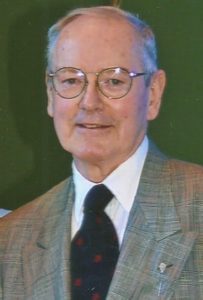 Rodney Mannion, MD, BSI, was born in December 1930 in Chicago. He attended Loras College then Loyola Medical School. He graduated in 1956 and interned at Wayne County Hospital in Detroit. Mannion spent four years at Hines Veterans Hospital in Hines IL. He moved to Long Beach IN and opened a private practice specializing in urology in La Porte. In the September 1964 Baker Street Journal, he wrote “On Becoming a Sherlockian.” Two years previously, his new patient, the eminent Irregular and Hound Jay Finley Christ, shared his interest in Holmes with Mannion. He went on to become a member of Hugo’s Companions and wrote of his meeting with fellow Sherlockians such as Orlando Park and Vincent Starrett. In 1969 he received the investiture of “Shoscombe Old Place” from The Baker Street Irregulars. He contributed several more articles to the BSJ during the 1960s as well as articles for the American Medical Association. His other interests included running and he participated in the Boston and Chicago marathons. He was an avid mystery reader, a bird watcher and served as the Long Beach village president in the early 1990s. He retired from medical practice in June 2005. A devout Catholic, he was a commentator at Notre Dame Catholic Church for a long period. Mannion was the father of six children who survived him upon his death in September 2013. He is buried at St. Mary’s Cemetery in Evergreen Park, IL.
Rodney Mannion, MD, BSI, was born in December 1930 in Chicago. He attended Loras College then Loyola Medical School. He graduated in 1956 and interned at Wayne County Hospital in Detroit. Mannion spent four years at Hines Veterans Hospital in Hines IL. He moved to Long Beach IN and opened a private practice specializing in urology in La Porte. In the September 1964 Baker Street Journal, he wrote “On Becoming a Sherlockian.” Two years previously, his new patient, the eminent Irregular and Hound Jay Finley Christ, shared his interest in Holmes with Mannion. He went on to become a member of Hugo’s Companions and wrote of his meeting with fellow Sherlockians such as Orlando Park and Vincent Starrett. In 1969 he received the investiture of “Shoscombe Old Place” from The Baker Street Irregulars. He contributed several more articles to the BSJ during the 1960s as well as articles for the American Medical Association. His other interests included running and he participated in the Boston and Chicago marathons. He was an avid mystery reader, a bird watcher and served as the Long Beach village president in the early 1990s. He retired from medical practice in June 2005. A devout Catholic, he was a commentator at Notre Dame Catholic Church for a long period. Mannion was the father of six children who survived him upon his death in September 2013. He is buried at St. Mary’s Cemetery in Evergreen Park, IL.
Biographical information provided courtesy of Julie McKuras.
♦
Jay Marshall
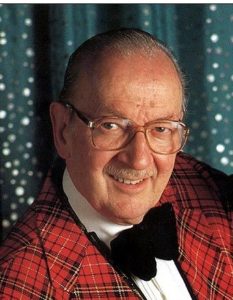
James “Jay” Ward Marshall was born August 29, 1919 in Abington MA. He became interested in magic when he was six; he saw performances by Thurston and Houdini and traded his bicycle to buy a magic course. Marshall studied at Bluefield College for one year but dropped out to become an entertainer. He enlisted in the U.S. Army Air Corps on Dec. 18, 1941, and as his obituary noted, he “was island hopping in the Pacific to entertain military personnel in USO shows.” (New York Times). It was during these shows that he came up with an easy dummy to use in his ventriloquist act; a glove and bunny ears which he named Lefty. He moved to Chicago in the 1950s and edited the magic magazine New Phoenix for five years. In 1963 he opened Magic Inc. with his magician wife. He appeared on the “Ed Sullivan Show” 14 times, played at the New York Palace and the Palladium in London and opened for many well-known performers such as Milton Berle and Liberace. He was the first act to open for Frank Sinatra in Las Vegas. In addition to performing, Marshall was a historian of stage magic and author of several books on the subject. He was a member of The Caxton Club, a philanthropist, and a voracious collector of books. In 1992 he was named Dean of the Society of American Magicians. “He will keep the title until his wand is broken at his gravesite in a magicians’ ritual.” (New York Times) As a member of both groups, he performed for both the Hounds and Hugo’s Companions. He died in Chicago on May 10, 2005 and is buried in Woodlawn Cemetery. Seigfried, of Seigried and Roy, noted “He was one of magic’s most beloved figures.” (The Caxtonian) Lefty now resides at the Smithsonian Institution with Charlie McCarthy and Kermit the Frog.
Biographical information provided courtesy of Julie McKuras.
♦
C. Paul Martin
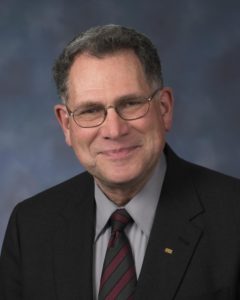 C. Paul Martin, M.D., a specialist in Internal Medicine and Family Medicine with interests in Medical History, Infectious Diseases, and Dermatology, practiced in rural Marshall, Minnesota for 27 years, retiring in 2002. He has hosted “Doctor Dialogue,” a medical information radio show for 40 years and writes a biweekly patient-oriented medical column for the Marshall Independent. He has discussed the phenomena and genre of Sherlock Holmes on a Chicago Radio Interview. Dr. Martin is a graduate of the University of St, Thomas in St. Paul, Minnesota, and the University of Minnesota Medical School. His postgraduate education was obtained at Stanford University Medical School, and he served as a United States Air Force Military Public Health Officer. During a mid-career Bush Medical Fellowship, he studied at the University of Minnesota, the University of London Medical School, and the Kaiser Permanente Health Systems in California. During his career in Marshall, Dr. Martin was an adjunct professor of Medicine, Family Medicine and Community Health at the University of Minnesota Medical School. In 2005 he was the president of the Minnesota Coroners’ and Medical Examiners’ Association.
C. Paul Martin, M.D., a specialist in Internal Medicine and Family Medicine with interests in Medical History, Infectious Diseases, and Dermatology, practiced in rural Marshall, Minnesota for 27 years, retiring in 2002. He has hosted “Doctor Dialogue,” a medical information radio show for 40 years and writes a biweekly patient-oriented medical column for the Marshall Independent. He has discussed the phenomena and genre of Sherlock Holmes on a Chicago Radio Interview. Dr. Martin is a graduate of the University of St, Thomas in St. Paul, Minnesota, and the University of Minnesota Medical School. His postgraduate education was obtained at Stanford University Medical School, and he served as a United States Air Force Military Public Health Officer. During a mid-career Bush Medical Fellowship, he studied at the University of Minnesota, the University of London Medical School, and the Kaiser Permanente Health Systems in California. During his career in Marshall, Dr. Martin was an adjunct professor of Medicine, Family Medicine and Community Health at the University of Minnesota Medical School. In 2005 he was the president of the Minnesota Coroners’ and Medical Examiners’ Association.
Dr. Martin has a longtime interest in detective literature and its relationship to medicine and forensic science. The life and creative writings of Dr. Arthur Conan Doyle have provided special interest to him. While serving as chief resident at Stanford, he used the Sherlock Holmes literature in teaching medical skills to residents, interns, and medical students…and in keeping them awake! In 1969, Dr. Martin joined the Sherlockian Club in San Francisco, and in 1975, The Norwegian Explorers of Minnesota, serving as its first president. He was investitured in the The Baker Street Irregulars as “Dr. Leslie Armstrong” in 1986. During the past several years, Dr. Martin has presented lectures and talks on the history of crime fiction and the inter-relationship of medicine, forensic science and crime fiction to groups of all ages. He has authored two chapters in recent publications of The Baker Street Irregulars.
♦
Arnie Matanky
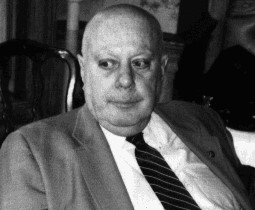 Arnie A. Matanky was June 25, 1930 in Oak Park IL. The son of Russian and Polish immigrants, he served in the U.S. Army’s Signal Corp. He went on to study international relations at the University of Chicago. He “began his journalism career in 1947 at the Chicago Sun. He later moved to the Journal of Commerce, Community News Service and Chicago TV Week, where he served as associate editor. From 1953 to 1959 he wrote and edited news for WBBM-TV and WBBM radio.” (Editor and Publisher) In 1959 he left to devote more time to his newspaper The Near North News, founded 3 years earlier, which covered Chicago’s Gold Coast. He developed and sponsored the Gold Coast Art Fair to draw visitors to the area. Matanky also owned the public relations firm Information Consultants. Additionally he acted as press spokesman for the Chicago Park District 1971-1980, belonged to the American Legion, was a Democratic Party precinct captain for the 42nd ward, and helped reinstate the Chicago Journalism Hall of Fame. “Dinners honoring the journalists were taken up by the International Press Club, which Mr. Matanky helped found in 1992. He was its president at the time of his death.” (Chicago Tribune) He was president of the B’nai B’rith Near North Lodge, Park Synagogue of Chicago and the Sandburg Village Council. Matansky often included items about Sherlock Holmes in his Near North News, and was a member of Hugo’s Companions, serving as president (1990-1992) and winner of their Horace Harker Award. He also served as editor of the Companion’s Grimpen Mire Gazette. Matanky died January 5, 2004 and is buried in Waldheim Jewish Cemetery in Forest Park.
Arnie A. Matanky was June 25, 1930 in Oak Park IL. The son of Russian and Polish immigrants, he served in the U.S. Army’s Signal Corp. He went on to study international relations at the University of Chicago. He “began his journalism career in 1947 at the Chicago Sun. He later moved to the Journal of Commerce, Community News Service and Chicago TV Week, where he served as associate editor. From 1953 to 1959 he wrote and edited news for WBBM-TV and WBBM radio.” (Editor and Publisher) In 1959 he left to devote more time to his newspaper The Near North News, founded 3 years earlier, which covered Chicago’s Gold Coast. He developed and sponsored the Gold Coast Art Fair to draw visitors to the area. Matanky also owned the public relations firm Information Consultants. Additionally he acted as press spokesman for the Chicago Park District 1971-1980, belonged to the American Legion, was a Democratic Party precinct captain for the 42nd ward, and helped reinstate the Chicago Journalism Hall of Fame. “Dinners honoring the journalists were taken up by the International Press Club, which Mr. Matanky helped found in 1992. He was its president at the time of his death.” (Chicago Tribune) He was president of the B’nai B’rith Near North Lodge, Park Synagogue of Chicago and the Sandburg Village Council. Matansky often included items about Sherlock Holmes in his Near North News, and was a member of Hugo’s Companions, serving as president (1990-1992) and winner of their Horace Harker Award. He also served as editor of the Companion’s Grimpen Mire Gazette. Matanky died January 5, 2004 and is buried in Waldheim Jewish Cemetery in Forest Park.
Biographical information provided courtesy of Julie McKuras.
♦
Terry W. McCammon
Terry W. M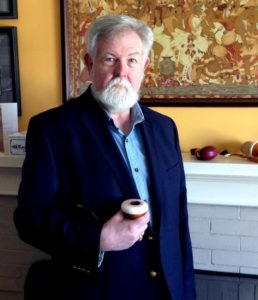 cCammon, a native of Terre Haute, Indiana graduated from the Rose-Hulman Institute of Tecnnology in 1970 with a BS and MS in Electrical Engineering. Having been in ROTC he served four years with the US Army. He practiced engineering for 42 years working mostly as a self-employed consultant in heavy industrial control systems and automation. Terry was a registered professional engineer until his retirement. Terry is a Freemason having served in a variety of local as well as international positions. Terry spent many years as a Scout leader. His principal hobbies, other than Sherlockian pursuits, are reading, woodcarving and woodturning. He serves as the editor of his woodturning club’s newsletter. His services are in constant demand as a judge of single malt scotch and fine cigars. He served as Sir Hugo of Hugo’s Companions and is a member of The Torists and The Criterion Bar Association. He received the investiture of “Young Stamford” from The Baker Street Irregulars in 2019.
cCammon, a native of Terre Haute, Indiana graduated from the Rose-Hulman Institute of Tecnnology in 1970 with a BS and MS in Electrical Engineering. Having been in ROTC he served four years with the US Army. He practiced engineering for 42 years working mostly as a self-employed consultant in heavy industrial control systems and automation. Terry was a registered professional engineer until his retirement. Terry is a Freemason having served in a variety of local as well as international positions. Terry spent many years as a Scout leader. His principal hobbies, other than Sherlockian pursuits, are reading, woodcarving and woodturning. He serves as the editor of his woodturning club’s newsletter. His services are in constant demand as a judge of single malt scotch and fine cigars. He served as Sir Hugo of Hugo’s Companions and is a member of The Torists and The Criterion Bar Association. He received the investiture of “Young Stamford” from The Baker Street Irregulars in 2019.
♦
Thomas McGee
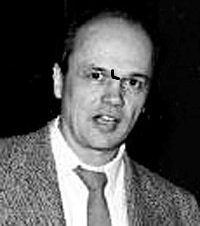 Thomas Francis McGee was born June 21, 1930. He graduated with a degree in Social Work from the University of Washington and did graduate work in his field at the University of Chicago. His first job, copy assistant, was in the city room of The Chicago Tribune. He served in the U.S. Army 1951-53 as a cryptographer during the Korean War. McGee also worked as a commercial artist in New York City. He was a social worker for 36 years, and retired as a supervising caseworker for the Illinois Department of Public Aid. He was a playwright and invented several games. McGee was a member of Hugo’s Companions, winning the Horace Harker Award in 1977, and served with The Dedicated Associates of Lomax to raise funds to make the Canon available to Chicago’s public libraries. He contributed “Love Notes” to the June 1979 Baker Street Journal and “Reflections on the Beryl Coronet” to the December 1989 Baker Street Journal. He was also a sculptor and served as staff artist for The Devon County Chronicle. He was awarded the investiture of “Wilson, the Notorious Canary-Trainer” from The Baker Street Irregulars in 1981. McGee died June 15, 1996 in Littleton, CO.
Thomas Francis McGee was born June 21, 1930. He graduated with a degree in Social Work from the University of Washington and did graduate work in his field at the University of Chicago. His first job, copy assistant, was in the city room of The Chicago Tribune. He served in the U.S. Army 1951-53 as a cryptographer during the Korean War. McGee also worked as a commercial artist in New York City. He was a social worker for 36 years, and retired as a supervising caseworker for the Illinois Department of Public Aid. He was a playwright and invented several games. McGee was a member of Hugo’s Companions, winning the Horace Harker Award in 1977, and served with The Dedicated Associates of Lomax to raise funds to make the Canon available to Chicago’s public libraries. He contributed “Love Notes” to the June 1979 Baker Street Journal and “Reflections on the Beryl Coronet” to the December 1989 Baker Street Journal. He was also a sculptor and served as staff artist for The Devon County Chronicle. He was awarded the investiture of “Wilson, the Notorious Canary-Trainer” from The Baker Street Irregulars in 1981. McGee died June 15, 1996 in Littleton, CO.
Biographical information provided courtesy of Julie McKuras.
♦
Julie McKuras
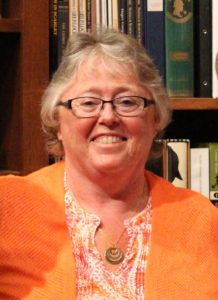 Julie McKuras received a degree in Nursing from Purdue University, and Film Studies from the University of Minnesota. She is a former ICU/CCU Registered Nurse and was active in Girl Scouts as well as Traveling Soccer with her children. She is a long time member, and past president of The Norwegian Explorers and is a member ofThe Sherlock Holmes Society of London. Her interest in Sherlock Holmes began when she saw the Holmes movies starring Basil Rathbone and grew when she discovered The Canon. She serves on the Friends of the Sherlock Holmes Collections Board at the University of Minnesota and has been involved with the quarterly newsletter since it began, assuming the editorship in 1999. She was the first editor of The BSI Trust Newsletter and served on the Board. Julie has presented papers and toasts including those for the 1999 Sherlock Holmes Society of London’s Statue Festival, The Newberry Library symposium, BSI dinners, Holmes Under the Arch, Norwegian Explorer events, Gillette to Brett in 2007, Toronto’s Arthur Conan Doyle Collection celebrations, moderated a panel at The Arthur Conan Doyle Sesquicentennial Celebration at Harvard University, The Stud Dinner, and the Reichenbach Irregulars Symposium in Davos Switzerland. Her writings have appeared in periodicals such as The Baker Street Journal, The Sherlock Holmes Journal, The Serpentine Muse, and Through the Magic Door. She co-edited Sherlockian Heresies – the story of Leo Sauvage, BSI and his unfinished manuscript – and contributed to Sir Arthur Conan Doyle and Sherlock Holmes; Essays and Art on The Doctor and The Detective, About Sixty, The MX Book of New Sherlock Holmes Stories- Part V: Christmas Adventures, Violets and Vitriol, Sherlock Holmes in the Heartland, The Illustrious Clients Fifth Casebook and various Norwegian Explorers Christmas Annuals and Explorations. Julie has been involved with all of The Norwegian Explorer conferences since 1998, co-chairing most of them. She received the investiture of “The Duchess of Devonshire” from The Baker Street Irregulars in 2001 and “The Compliments of the Season” from The Adventuresses of Sherlock Holmes in 1999. She currently lives in Apple Valley, MN with her long-suffering but supportive husband Mike.
Julie McKuras received a degree in Nursing from Purdue University, and Film Studies from the University of Minnesota. She is a former ICU/CCU Registered Nurse and was active in Girl Scouts as well as Traveling Soccer with her children. She is a long time member, and past president of The Norwegian Explorers and is a member ofThe Sherlock Holmes Society of London. Her interest in Sherlock Holmes began when she saw the Holmes movies starring Basil Rathbone and grew when she discovered The Canon. She serves on the Friends of the Sherlock Holmes Collections Board at the University of Minnesota and has been involved with the quarterly newsletter since it began, assuming the editorship in 1999. She was the first editor of The BSI Trust Newsletter and served on the Board. Julie has presented papers and toasts including those for the 1999 Sherlock Holmes Society of London’s Statue Festival, The Newberry Library symposium, BSI dinners, Holmes Under the Arch, Norwegian Explorer events, Gillette to Brett in 2007, Toronto’s Arthur Conan Doyle Collection celebrations, moderated a panel at The Arthur Conan Doyle Sesquicentennial Celebration at Harvard University, The Stud Dinner, and the Reichenbach Irregulars Symposium in Davos Switzerland. Her writings have appeared in periodicals such as The Baker Street Journal, The Sherlock Holmes Journal, The Serpentine Muse, and Through the Magic Door. She co-edited Sherlockian Heresies – the story of Leo Sauvage, BSI and his unfinished manuscript – and contributed to Sir Arthur Conan Doyle and Sherlock Holmes; Essays and Art on The Doctor and The Detective, About Sixty, The MX Book of New Sherlock Holmes Stories- Part V: Christmas Adventures, Violets and Vitriol, Sherlock Holmes in the Heartland, The Illustrious Clients Fifth Casebook and various Norwegian Explorers Christmas Annuals and Explorations. Julie has been involved with all of The Norwegian Explorer conferences since 1998, co-chairing most of them. She received the investiture of “The Duchess of Devonshire” from The Baker Street Irregulars in 2001 and “The Compliments of the Season” from The Adventuresses of Sherlock Holmes in 1999. She currently lives in Apple Valley, MN with her long-suffering but supportive husband Mike.
♦
Russell McLauchlin
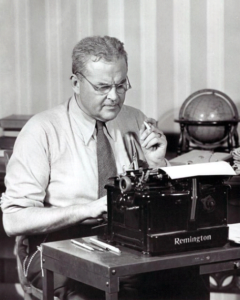 Russell Jaehne McLauchlin was born in Detroit MI on January 22, 1894. Jon Lellenberg writes that McLauchlin was “first introduced to Sherlock Holmes by William Gillette at the Detroit Opera House…[McLauchlin] was a lawyer by education, but made his way in the newspaper and radio worlds instead, and was the drama critic of The Detroit News.” He attended the University of Michigan 1911-1913, and received his LL.B. from Cornell University in 1916. McLauchlin served as a 2nd Lt., 338th Infantry from 1917-1918 in the U.S. Army. In 1921, he was working as a journalist as his engagement announcement lists him as the Associate Editor of Detroit Saturday Night, and later wrote as the drama critic for The Detroit News. His book Alfred Street, a compilation of his “Town Talk” columns in The Detroit News, was published in 1946. That same year he founded and was the first Gasogene of The Amateur Mendicant Society of Detroit, and attended a Hounds dinner as well. He made numerous contributions to The Baker Street Journal, including “Reverie at Cox & Co., Charing Cross” (Vol. 2, Number 2, 1947), “The Problem with the Canonical Couplets” (Vol. 2, Number 4, 1947), and “The Case of the Fallible Falls-Diner” (Vol. 12, Number 4, 1962) to name just a few. In 1949 he received the investiture of “The Naval Treaty” from The Baker Street Irregulars. McLauchlin, the man referred to as “a true Sherlockian scholar and Watsonian gentleman” by Edgar W. Smith (Lellenberg), died on October 12, 1975 in Detroit MI.
Russell Jaehne McLauchlin was born in Detroit MI on January 22, 1894. Jon Lellenberg writes that McLauchlin was “first introduced to Sherlock Holmes by William Gillette at the Detroit Opera House…[McLauchlin] was a lawyer by education, but made his way in the newspaper and radio worlds instead, and was the drama critic of The Detroit News.” He attended the University of Michigan 1911-1913, and received his LL.B. from Cornell University in 1916. McLauchlin served as a 2nd Lt., 338th Infantry from 1917-1918 in the U.S. Army. In 1921, he was working as a journalist as his engagement announcement lists him as the Associate Editor of Detroit Saturday Night, and later wrote as the drama critic for The Detroit News. His book Alfred Street, a compilation of his “Town Talk” columns in The Detroit News, was published in 1946. That same year he founded and was the first Gasogene of The Amateur Mendicant Society of Detroit, and attended a Hounds dinner as well. He made numerous contributions to The Baker Street Journal, including “Reverie at Cox & Co., Charing Cross” (Vol. 2, Number 2, 1947), “The Problem with the Canonical Couplets” (Vol. 2, Number 4, 1947), and “The Case of the Fallible Falls-Diner” (Vol. 12, Number 4, 1962) to name just a few. In 1949 he received the investiture of “The Naval Treaty” from The Baker Street Irregulars. McLauchlin, the man referred to as “a true Sherlockian scholar and Watsonian gentleman” by Edgar W. Smith (Lellenberg), died on October 12, 1975 in Detroit MI.
Biographical information provided courtesy of Julie McKuras.
♦
Mike McSwiggin
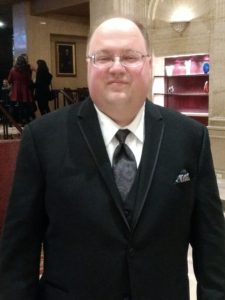 Mike McSwiggin was born June 14th, 1973 in Baltimore. He discovered he had a love of mysteries in first grade, when exposed to both Sherlock Holmes and Encyclopedia Brown. While the young Mr. Brown did not stay long, Mr. Holmes rarely left Mike’s side. In addition to an admiration for mysteries, Mike had a rare compulsion called pentanumerophilia. This strong desire to constantly sort things into groupings of five became somewhat debilitating, until one day Mike’s mom took him to the pharmacy to pick up a prescription. While at the counter, Mike could see the pharmacist counting tablets to put into a bottle. And he was counting by fives! Ten or so years later, in 1997, Mike graduated with a Doctor of Pharmacy degree from the University of Maryland. Eventually, Mike moved to Cincinnati. Serendipity got him to a meeting of The Tankerville Club, Cincinnati’s Sherlockian scion. There he met the club’s founder, the late Paul Herbert, who introduced Mike to the wider world of Sherlockians. Mike began attending conferences and meetings from the midwest to the east coast. He has spoken at A Scintillation of Scions, contributed chapters to several books, and serves as vice-president (officially “Second Most Dangerous Member”) of The Tankerville Club. He also founded the first Sherlockian scion for pharmacists, The Fairly Good Dispensers. He received the investiture A Seven Percent Solution from the Baker Street Irregulars in 2019. Mike loves spending time with his family, especially his sons Joe and Jack.
Mike McSwiggin was born June 14th, 1973 in Baltimore. He discovered he had a love of mysteries in first grade, when exposed to both Sherlock Holmes and Encyclopedia Brown. While the young Mr. Brown did not stay long, Mr. Holmes rarely left Mike’s side. In addition to an admiration for mysteries, Mike had a rare compulsion called pentanumerophilia. This strong desire to constantly sort things into groupings of five became somewhat debilitating, until one day Mike’s mom took him to the pharmacy to pick up a prescription. While at the counter, Mike could see the pharmacist counting tablets to put into a bottle. And he was counting by fives! Ten or so years later, in 1997, Mike graduated with a Doctor of Pharmacy degree from the University of Maryland. Eventually, Mike moved to Cincinnati. Serendipity got him to a meeting of The Tankerville Club, Cincinnati’s Sherlockian scion. There he met the club’s founder, the late Paul Herbert, who introduced Mike to the wider world of Sherlockians. Mike began attending conferences and meetings from the midwest to the east coast. He has spoken at A Scintillation of Scions, contributed chapters to several books, and serves as vice-president (officially “Second Most Dangerous Member”) of The Tankerville Club. He also founded the first Sherlockian scion for pharmacists, The Fairly Good Dispensers. He received the investiture A Seven Percent Solution from the Baker Street Irregulars in 2019. Mike loves spending time with his family, especially his sons Joe and Jack.
♦
John Murphy
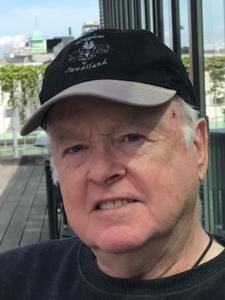 John F Murphy has been a life-long Sherlockian and Chicagoan. Murphy holds bachelor, master, and doctoral degrees. In the early 70’s he affiliated with Hugo’s Companions and The Hounds of the Baskerville(sic). A regular member in the 70’s through 90’s, Murphy was often the winner of the Sherlockian quizzes. Murphy, along with Hounds Jack Wilson and Alan Hiller, were co-founders of The Altamonts Agents of Chicago, a scion society. Murphy served as a high school English teacher, where he regularly introduced students to the MASTER. After over three decades in public schools (22 as a superintendent), Murphy retired to academia where he served in the graduate school of education for several years. John Murphy is currently an associate with Ray and Associates, the largest school executive search firm in America. He also serves as an interpreter for the Frank Lloyd Wright Trust in Chicago. Murphy resides in Chicago with his beloved bride, Lorry Murphy. Murphy and Lorry have two children and two grandchildren.
John F Murphy has been a life-long Sherlockian and Chicagoan. Murphy holds bachelor, master, and doctoral degrees. In the early 70’s he affiliated with Hugo’s Companions and The Hounds of the Baskerville(sic). A regular member in the 70’s through 90’s, Murphy was often the winner of the Sherlockian quizzes. Murphy, along with Hounds Jack Wilson and Alan Hiller, were co-founders of The Altamonts Agents of Chicago, a scion society. Murphy served as a high school English teacher, where he regularly introduced students to the MASTER. After over three decades in public schools (22 as a superintendent), Murphy retired to academia where he served in the graduate school of education for several years. John Murphy is currently an associate with Ray and Associates, the largest school executive search firm in America. He also serves as an interpreter for the Frank Lloyd Wright Trust in Chicago. Murphy resides in Chicago with his beloved bride, Lorry Murphy. Murphy and Lorry have two children and two grandchildren.
♦
♦
Michael Murphy

Mike Murphy was born November 16th, 1930. His writings covered many topics, but his favorite subject was a favorite writer of his, Vincent Starrett, met by happenstance one day in Chicago’s Central Bookstore: “I had just bought another of his books,” he recalled in 1986, “when the clerk asked me if I would like to meet the author. ‘Vincent Starrett?’ I exhaled, turning. We were properly introduced, he inscribed my new acquisition for me, we talked for an hour or more, and I asked him to lunch. I remember the details distinctly. We talked for seven hours.” After moving to Chicago later he took on the responsibility for the ageing Starrett’s care and interests, became involved in Chicago Sherlockiana as a result, and also wrote Basil Rathbone’s introductory and closing remarks for WGN-TV’s mid-1960s “Sherlock Holmes Theatre.” After Starrett’s death in 1974, Hound Robert W. Hahn wrote: “it was the care and attention given him by Mike Murphy that kept Vincent comfortable and even moderately productive in those last few years” — an example of which was 1973’s Late, Later, and Possibly Last: Essays by Vincent Starrett. Others after Starrett’s death included a new Private Life of Sherlock Holmes introduced by Murphy, a facsimile of the legendary 1943 Scribner’s Bookstore catalogue of Starrett’s Sherlockian collection; and Post-Mortem: H. Bedford-Jones, Starrett’s correspondence in 1934 with the pulp-writer about a Sherlock Holmes pastiche hoax he’d perpetrated on Alexander Woollcott. In 1976 Murphy was invested in The Baker Street Irregulars as “The Noble Bachelor,” but died at age 55 of a longstanding heart problem on June 15, 1986 in Kansas City, MO. His BSJ obituary, by its editor Philip Shreffler, called Murphy “one of the very few truly old-world gentlemen that it has been our pleasure to know; his kindness, gentleness, and Sherlockian devotion will be missed profoundly.”
Biographical information provided courtesy of Jon Lellenberg.
♦
Christopher Music

Christopher Music, BSI is the Commissionaire and archivist of The Amateur Mendicant Society of Detroit – a BSI scion founded in 1946 with the encouragement of Vincent Starrett. A member of many Sherlockian societies, he received his investiture in The Baker Street Irregulars in 2014 as “Wagner Night at Covent Garden”. He currently edits the society reports for the Baker Street Journal, and is a volunteer with the Baker Street Irregulars Trust. He is the author of From the Lower Vault: Treasurers from the Archives of the Amateur Mendicant Society. He lives in Clarkston, Michigan with his wife and two daughters.
♦
♦
♦
John Nieminski
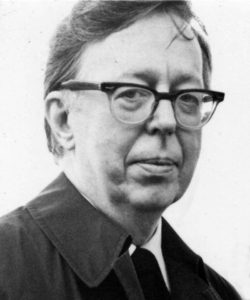 John Nieminski, a native Chicagoan born July 10, 1929, graduated from the University of Illinois with high honors in history in 1952. Settling in Park Forest with his wife Joyce and two children, he took the train into town every day — resisting driving an automobile his entire life! — to the U.S. Civil Service Commission offices, where he rose eventually to be manager of its Midwest Regional Office. A Hound since the late 1950s, in 1984 he recorded its history in The Hounds of the Baskerville (sic): A History of Chicago’s Senior Sherlockian Scion Society, 1943-1983. He was also a longtime member of Hugo’s Companions, and co-founder of The South Downers in 1985. An enormous mystery & detection fan in general, he became a mainstay of the annual Bouchercon (the national Anthony Boucher Memorial Mystery Convention), and twice co-chair of it in Chicago. Mystery scholars prized his notable bibliographies of Ellery Queen Mystery Magazine (1974) and The Saint Mystery Magazine (1980), and he was part of the “amateur press association” DAPA-EM (“Elementary, My Dear APA”) with his pre-internet print-on-paper blog “Somewhere a Roscoe.” At 1987’s Bouchercon, following his unexpected death on December 19, 1986 in Park Forest IL, John was chosen posthumously as its Fan Guest of Honor. As a Sherlockian, he co-founded the quarterly Baker Street Miscellanea and was its lead editor its first thirteen years, and he also compiled histories of Sir Arthur Conan Doyle’s visits to Chicago in 1894 and the 1920s, and the 1914 Chicago stage production of The Speckled Band. In all these endeavors, and in The Baker Street Irregulars where he became “Abe Slaney” in 1969, he was known for his sense of humor, good comradeship, and generosity of spirit. His papers are at Chicago’s Newberry Library.
John Nieminski, a native Chicagoan born July 10, 1929, graduated from the University of Illinois with high honors in history in 1952. Settling in Park Forest with his wife Joyce and two children, he took the train into town every day — resisting driving an automobile his entire life! — to the U.S. Civil Service Commission offices, where he rose eventually to be manager of its Midwest Regional Office. A Hound since the late 1950s, in 1984 he recorded its history in The Hounds of the Baskerville (sic): A History of Chicago’s Senior Sherlockian Scion Society, 1943-1983. He was also a longtime member of Hugo’s Companions, and co-founder of The South Downers in 1985. An enormous mystery & detection fan in general, he became a mainstay of the annual Bouchercon (the national Anthony Boucher Memorial Mystery Convention), and twice co-chair of it in Chicago. Mystery scholars prized his notable bibliographies of Ellery Queen Mystery Magazine (1974) and The Saint Mystery Magazine (1980), and he was part of the “amateur press association” DAPA-EM (“Elementary, My Dear APA”) with his pre-internet print-on-paper blog “Somewhere a Roscoe.” At 1987’s Bouchercon, following his unexpected death on December 19, 1986 in Park Forest IL, John was chosen posthumously as its Fan Guest of Honor. As a Sherlockian, he co-founded the quarterly Baker Street Miscellanea and was its lead editor its first thirteen years, and he also compiled histories of Sir Arthur Conan Doyle’s visits to Chicago in 1894 and the 1920s, and the 1914 Chicago stage production of The Speckled Band. In all these endeavors, and in The Baker Street Irregulars where he became “Abe Slaney” in 1969, he was known for his sense of humor, good comradeship, and generosity of spirit. His papers are at Chicago’s Newberry Library.
Biographical information provided courtesy of Jon Lellenberg.
♦
Luther Norris
Luther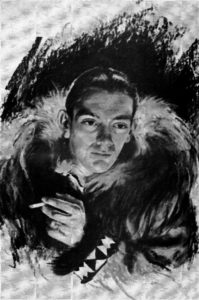 Leon Norris was born August 29, 1920 in Richmond, IN. The 1940 Federal census indicates he was working as a salesman for an optical company at that time. During World War II he served in the U.S. Army and was stationed in the Aleutian Islands, where he was a special correspondent for Yank Magazine. He remained in Fairbanks Alaska for eight years where he acted as a staff writer for Asia Calling and wrote Sourdough Tales, a collection of his stories about Yukon prospectors, published in 1946, which became the basis for a radio program. He moved to Culver City CA in the early 1960s and worked at Doheny Plaza, a hotel where he met many celebrities of the day. He was a member of several organizations in Hollywood, such as the Sons of the Desert (devoted to Laurel and Hardy). In 1966, Norris founded the Praed Street Irregulars, a group devoted to August Derleth’s Solar Pons, and acted as Lord Warden of the Pontine Marshes. He also edited and published their newsletter, The Pontine Dossier. Norris was on the editorial staff for The Rohmer Review when it began in 1968. His Pontine Press published a number of Sherlockian works. He received the investiture of Monsieur Oscar Meunier of Grenoble from The Baker Street Irregulars in 1966. Norris died Jan. 27, 1978 in Los Angeles, CA and is buried in Inglewood Cemetery.
Leon Norris was born August 29, 1920 in Richmond, IN. The 1940 Federal census indicates he was working as a salesman for an optical company at that time. During World War II he served in the U.S. Army and was stationed in the Aleutian Islands, where he was a special correspondent for Yank Magazine. He remained in Fairbanks Alaska for eight years where he acted as a staff writer for Asia Calling and wrote Sourdough Tales, a collection of his stories about Yukon prospectors, published in 1946, which became the basis for a radio program. He moved to Culver City CA in the early 1960s and worked at Doheny Plaza, a hotel where he met many celebrities of the day. He was a member of several organizations in Hollywood, such as the Sons of the Desert (devoted to Laurel and Hardy). In 1966, Norris founded the Praed Street Irregulars, a group devoted to August Derleth’s Solar Pons, and acted as Lord Warden of the Pontine Marshes. He also edited and published their newsletter, The Pontine Dossier. Norris was on the editorial staff for The Rohmer Review when it began in 1968. His Pontine Press published a number of Sherlockian works. He received the investiture of Monsieur Oscar Meunier of Grenoble from The Baker Street Irregulars in 1966. Norris died Jan. 27, 1978 in Los Angeles, CA and is buried in Inglewood Cemetery.
Biographical information provided courtesy of Julie McKuras.
♦
Sterling North
Thomas Sterl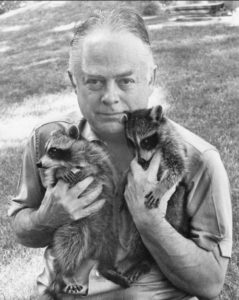 ing North was born November 4, 1906 near Edgerton, Wisconsin. He graduated from “the University of Chicago and began his writing career. He wrote for The Chicago Daily News, The New York World-Telegram, The New York Sun, and for many magazines, including Reader’s Digest, The Atlantic, Esquire, and Holiday.” (The Sterling North Society) He published his first book, The Pedro Gorino, in 1929 and living in Chicago. By 1940 he was the Literary Editor for The Chicago Daily News, and was an early critic of comic books. Plowing on Sunday came out in 1934, in 1948 Walt Disney adapted North’s best-selling book Midnight and Jeremiah for his film “So Dear to My Heart” which starred Burl Ives and Beulah Bondi. In 1957 he became general editor of Houghton Mifflin’s North Star Books, which is known for publishing biographies of well-known Americans for a young adult audience. North wrote a number of their books such as Abe Lincoln: Log Cabin to White House, George Washington: Frontier Colonel, Mark Twain and the River and Young Thomas Edison. His best known book was 1963’s Rascal: A Memoir of a Better Era, a memoir of his own childhood days when he raised a baby raccoon. He won the Newberry Honor in 1964 for the book as well as other awards. It was made into the film “Rascal” in 1969 and starred Billy Mumy, Steve Forrest and Elsa Lanchester. North died on December 21, 1974 in Morristown, NJ. His childhood home in Edgerton was restored in the 1990s by The Sterling North Society to resemble how it looked when North was a child, and converted to a museum.
ing North was born November 4, 1906 near Edgerton, Wisconsin. He graduated from “the University of Chicago and began his writing career. He wrote for The Chicago Daily News, The New York World-Telegram, The New York Sun, and for many magazines, including Reader’s Digest, The Atlantic, Esquire, and Holiday.” (The Sterling North Society) He published his first book, The Pedro Gorino, in 1929 and living in Chicago. By 1940 he was the Literary Editor for The Chicago Daily News, and was an early critic of comic books. Plowing on Sunday came out in 1934, in 1948 Walt Disney adapted North’s best-selling book Midnight and Jeremiah for his film “So Dear to My Heart” which starred Burl Ives and Beulah Bondi. In 1957 he became general editor of Houghton Mifflin’s North Star Books, which is known for publishing biographies of well-known Americans for a young adult audience. North wrote a number of their books such as Abe Lincoln: Log Cabin to White House, George Washington: Frontier Colonel, Mark Twain and the River and Young Thomas Edison. His best known book was 1963’s Rascal: A Memoir of a Better Era, a memoir of his own childhood days when he raised a baby raccoon. He won the Newberry Honor in 1964 for the book as well as other awards. It was made into the film “Rascal” in 1969 and starred Billy Mumy, Steve Forrest and Elsa Lanchester. North died on December 21, 1974 in Morristown, NJ. His childhood home in Edgerton was restored in the 1990s by The Sterling North Society to resemble how it looked when North was a child, and converted to a museum.
Biographical information provided courtesy of Julie McKuras.
♦
Howard Vincent O’Brien
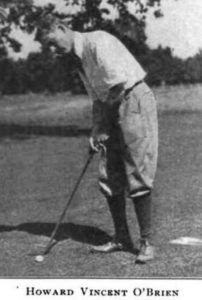 Howard Vincent O’Brien was born on July 11, 1888 in Chicago, IL. He received his BA from Yale University in 1910 and began his career on the Printers Ink magazine editorial staff. He founded Art magazine, published with backing from his grandfather’s art gallery, before entering the US Army where he served as a first Lieutenant of Artillery attached to Intelligence during WWI. He wrote his first novel, New Men for Old, in 1914 and his 1918 book Wine, Women & War is credited by as containing the first documented use of the word “blah.” O’Brien ran his own advertising company for a period of time before he was named literary editor of the Chicago Daily News in 1928. In 1932, while on a trip to Europe he realized he was tired of “egomaniac authors” (Chicago Daily Tribune) and decided to write about the common things in life; he called the column “All Things Considered.” Among his interesting interviews was Al Capone but he delayed giving the details of their meetings until after Capone’s death. O’Brien’s last book, So Long, Son, came out in 1944. It told “in simple but moving language the details of the last visit of his son Donel, before departing for the war overseas and his death.” (Chicago Daily Tribune) He also contributed to magazines such as Coronet. “All Things Considered” ran in the Daily News from 1932 until his death; he even wrote from his hospital bed. Howard Vincent O’Brien died on September 30, 1947 in Evanston IL and is buried in Graceland Cemetery. O’Brien’s book All Things Considered was published posthumously in 1948 and gave snatches of his meetings with Capone. His papers and manuscripts are held at the Newberry Library. O’Brien is a member of the Chicago Journalism Hall of Fame.
Howard Vincent O’Brien was born on July 11, 1888 in Chicago, IL. He received his BA from Yale University in 1910 and began his career on the Printers Ink magazine editorial staff. He founded Art magazine, published with backing from his grandfather’s art gallery, before entering the US Army where he served as a first Lieutenant of Artillery attached to Intelligence during WWI. He wrote his first novel, New Men for Old, in 1914 and his 1918 book Wine, Women & War is credited by as containing the first documented use of the word “blah.” O’Brien ran his own advertising company for a period of time before he was named literary editor of the Chicago Daily News in 1928. In 1932, while on a trip to Europe he realized he was tired of “egomaniac authors” (Chicago Daily Tribune) and decided to write about the common things in life; he called the column “All Things Considered.” Among his interesting interviews was Al Capone but he delayed giving the details of their meetings until after Capone’s death. O’Brien’s last book, So Long, Son, came out in 1944. It told “in simple but moving language the details of the last visit of his son Donel, before departing for the war overseas and his death.” (Chicago Daily Tribune) He also contributed to magazines such as Coronet. “All Things Considered” ran in the Daily News from 1932 until his death; he even wrote from his hospital bed. Howard Vincent O’Brien died on September 30, 1947 in Evanston IL and is buried in Graceland Cemetery. O’Brien’s book All Things Considered was published posthumously in 1948 and gave snatches of his meetings with Capone. His papers and manuscripts are held at the Newberry Library. O’Brien is a member of the Chicago Journalism Hall of Fame.
Biographical information provided courtesy of Julie McKuras.
♦
James M. O’Connor
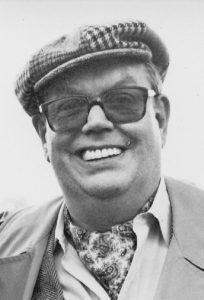
♦
Richard Oldberg
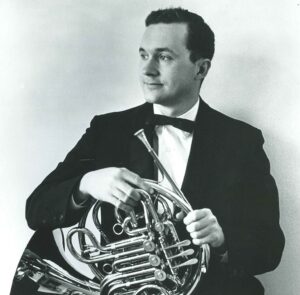 Richard Oldberg was born June 21, 1938 in Evanston, IL. A music student since his school days, he “attended the summer music programs at Interlochen Arts Camp, and he later attended Harvard and Northwestern universities where he studied with two CSO [Chicago Symphony Orchestra] principal horns.” He began his career with the Orchestra in early 1962 as an extra horn and eventually rose to the position of third horn, often performing solo roles. Oldberg was on the faculty at Northwestern University for many years. Relocating to Colorado, he was the principle horn and guest conductor with the Boulder Philharmonic. Oldberg died December 27, 2021 in Estes Park, Colorado. A remembrance of him posted by the CSO noted that “In his retirement, he enjoyed his longtime hobbies of book collecting (mostly Sherlock Holmes and mountaineering), model railroads and hand-copying the scores of Richard Wagner’s operas.”
Richard Oldberg was born June 21, 1938 in Evanston, IL. A music student since his school days, he “attended the summer music programs at Interlochen Arts Camp, and he later attended Harvard and Northwestern universities where he studied with two CSO [Chicago Symphony Orchestra] principal horns.” He began his career with the Orchestra in early 1962 as an extra horn and eventually rose to the position of third horn, often performing solo roles. Oldberg was on the faculty at Northwestern University for many years. Relocating to Colorado, he was the principle horn and guest conductor with the Boulder Philharmonic. Oldberg died December 27, 2021 in Estes Park, Colorado. A remembrance of him posted by the CSO noted that “In his retirement, he enjoyed his longtime hobbies of book collecting (mostly Sherlock Holmes and mountaineering), model railroads and hand-copying the scores of Richard Wagner’s operas.”
Biographical information provided courtesy of Julie McKuras.
♦
Laura Page
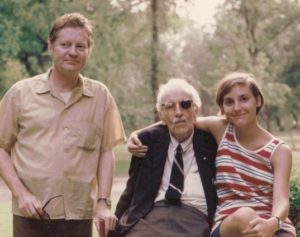 Laura V. Page is an adopted Sherlockian because of her personal assistance to Vincent Starrett during his last years and her tireless work in partnership with Michael Murphy and Bob Mangler to properly mark Vincent’s grave at Graceland Cemetery in Chicago. Laura designed the memorial stone that features an open book with two of VS’s bookplates cut into the granite along with the phrase “It is always 1895.” Laura and Bob (who affectionately called each other “Steed” and “Mrs. Peel”) presided over the placement ceremony in 1986 celebrating Vincent’s birth Centennial, sadly without Mike due to his untimely death. Laura was born in Evanston, IL and has long lived in Madison, WI amongst the early rising cheese heads. Her love of books started at home; her mother was a great reader, and then her first real job was in a bookstore in Glenview, IL. The store’s manager, Mike Murphy, recited Shakespeare and Byron, told stories of Ernest Hemingway and spoke of a mysterious great man of letters who lived near Wrigley Field. After meeting him, falling in love with Vincent was easy; he was funny and kind, an amazing story teller, and he swore like a sailor about “those s-o-b publishers” who didn’t pay him fair royalties on his many works. With the help of Laura and Mike, Vincent was moved to a safer location, the Oak Park Arms residential hotel in Oak Park after the death of Vincent’s wife, Ray, where he enjoyed a few years of long walks and long dinner conversations about people, poetry, newspapers, detectives, traveling the world, and Sherlock Holmes. By invitation of The Hound’s Masters, Bob Mangler and now Donald Terras, Laura tries to join in the annual Hounds fall dinner celebrations when she can. Laura was honored in Anno Holmes 157 by being given a Hounds membership, and she’s proud to be one of Holmes’ and Vincent’s devotees.
Laura V. Page is an adopted Sherlockian because of her personal assistance to Vincent Starrett during his last years and her tireless work in partnership with Michael Murphy and Bob Mangler to properly mark Vincent’s grave at Graceland Cemetery in Chicago. Laura designed the memorial stone that features an open book with two of VS’s bookplates cut into the granite along with the phrase “It is always 1895.” Laura and Bob (who affectionately called each other “Steed” and “Mrs. Peel”) presided over the placement ceremony in 1986 celebrating Vincent’s birth Centennial, sadly without Mike due to his untimely death. Laura was born in Evanston, IL and has long lived in Madison, WI amongst the early rising cheese heads. Her love of books started at home; her mother was a great reader, and then her first real job was in a bookstore in Glenview, IL. The store’s manager, Mike Murphy, recited Shakespeare and Byron, told stories of Ernest Hemingway and spoke of a mysterious great man of letters who lived near Wrigley Field. After meeting him, falling in love with Vincent was easy; he was funny and kind, an amazing story teller, and he swore like a sailor about “those s-o-b publishers” who didn’t pay him fair royalties on his many works. With the help of Laura and Mike, Vincent was moved to a safer location, the Oak Park Arms residential hotel in Oak Park after the death of Vincent’s wife, Ray, where he enjoyed a few years of long walks and long dinner conversations about people, poetry, newspapers, detectives, traveling the world, and Sherlock Holmes. By invitation of The Hound’s Masters, Bob Mangler and now Donald Terras, Laura tries to join in the annual Hounds fall dinner celebrations when she can. Laura was honored in Anno Holmes 157 by being given a Hounds membership, and she’s proud to be one of Holmes’ and Vincent’s devotees.
♦
Stanley Pargellis
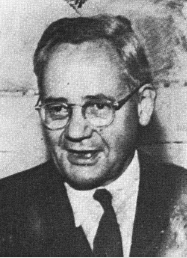
Stanley McCrory Pargellis was born June 25, 1898 in Toledo OH. He lived in many western US states as his father moved the family in his position with the Y.M.C.A. Pargellis graduated from the University of Nevada in 1918 and briefly served in the coast artillery. He returned to Toledo and worked in the car industry before entering Harvard Law School but left when he was awarded a Rhodes Scholarship, entering Oxford University’s Exeter College in 1920. He received a Bachelor’s degree in 1922. Returning to the US, he taught in a Hollywood CA high school for six months then moved to Pasadena where he taught English and History at the California Institute of Technology. He pursued studies at Yale University and received his Ph.D. in 1929 and went on to teach history there and began his writing career. In 1942 he moved to Chicago and became the fifth Librarian at the Newberry Library. It was recognized that he “broadened the library’s mission, launching new scholarly outreach programs (e.g., fellowships, conferences, and the Newberry Library Bulletin) to publicize the library’s holdings and encourage their use.” Pargellis pursued acquisitions at the Newberry and travelled abroad frequently to add to their holdings. He authored a large number of books; World Cat records his works as “65 works in 230 publications in 3 languages.” Embracing the Chicago literary scene, he made room at the Newberry for the Society of Typographic Arts. He belonged to the Arts Club, American Antiquarian Society, Caxton Club, Wayfarer’s, the Century Association and the Grolier Club. Pargellis retired to Maine in 1962. He died on January 6, 1968 in Chicago and is buried in Cambridge MA. The University of Nevada hosts the Stanley Pargellis Lecture in Early American History. He was one of the 4 founders of the Hounds and the originator of the name of the society.
Biographical information provided courtesy of Julie McKuras.
♦
Orlando Park
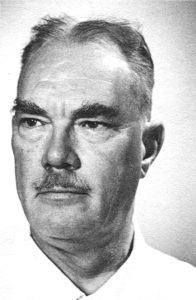 Orlando “Lan” Park was born on October 13, 1901 in Elizabethtown, KY and moved to Chicago while he a high school student. He was introduced to the Canon by his grandfather, and as he entered college, a new interest in Dixieland Jazz emerged; his piano technique was improved by Lill Hardin Armstrong, the wife of Louis Armstrong. Park earned his Ph.D. from the University of Chicago in 1929 and taught at Kent, OH, and the University of Illinois at Urbana before taking a position as a professor of biology at Northwestern University in 1934, serving as chairman for a time during his 35 years at the school during which he played the piano with fellow academics in a group called the Academic Cats. In the beginning at Northwestern, he made several trips to the Panama Canal Zone to study and write about the rain forest and insect inhabitants, bringing new interest in the developing Chicago School of Ecology. Author of the 1949 textbook Principles of Animal Ecology, Dr. Park was an expert in the field, serving the Ecological Society of America as Secretary-Treasurer 1936-38, Vice-President 1940 and President 1943. After World War II, Park was called to work on the question of the atomic age’s impact on nature, and acted as a consultant on the Ecology Section of the Oak Ridge National Laboratory. He was an honorary curator of the Chicago Academy of Sciences. His Sherlock Holmes, Esq., and John H. Watson, M.D.: An Encyclopedia of Their Affairs was published by Northwestern University Press in 1962. He was a member of Hugo’s Companions, acting as their Most Wicked Companion. In 1967 he was awarded the investiture of “The Final Problem” from The Baker Street Irregulars. Dr. Orlando Park died on September 23, 1969 in Evanston, IL. Manfred Engelmann, in his resolution of respect for Park, wrote “Thus it is with regret that we mark the passing from our scene of Orlando Park, prolific author, inspired teacher, jazz pianist, Baker Street Irregular, and world-renowned Entomologist and Ecologist.”
Orlando “Lan” Park was born on October 13, 1901 in Elizabethtown, KY and moved to Chicago while he a high school student. He was introduced to the Canon by his grandfather, and as he entered college, a new interest in Dixieland Jazz emerged; his piano technique was improved by Lill Hardin Armstrong, the wife of Louis Armstrong. Park earned his Ph.D. from the University of Chicago in 1929 and taught at Kent, OH, and the University of Illinois at Urbana before taking a position as a professor of biology at Northwestern University in 1934, serving as chairman for a time during his 35 years at the school during which he played the piano with fellow academics in a group called the Academic Cats. In the beginning at Northwestern, he made several trips to the Panama Canal Zone to study and write about the rain forest and insect inhabitants, bringing new interest in the developing Chicago School of Ecology. Author of the 1949 textbook Principles of Animal Ecology, Dr. Park was an expert in the field, serving the Ecological Society of America as Secretary-Treasurer 1936-38, Vice-President 1940 and President 1943. After World War II, Park was called to work on the question of the atomic age’s impact on nature, and acted as a consultant on the Ecology Section of the Oak Ridge National Laboratory. He was an honorary curator of the Chicago Academy of Sciences. His Sherlock Holmes, Esq., and John H. Watson, M.D.: An Encyclopedia of Their Affairs was published by Northwestern University Press in 1962. He was a member of Hugo’s Companions, acting as their Most Wicked Companion. In 1967 he was awarded the investiture of “The Final Problem” from The Baker Street Irregulars. Dr. Orlando Park died on September 23, 1969 in Evanston, IL. Manfred Engelmann, in his resolution of respect for Park, wrote “Thus it is with regret that we mark the passing from our scene of Orlando Park, prolific author, inspired teacher, jazz pianist, Baker Street Irregular, and world-renowned Entomologist and Ecologist.”
Biographical information provided courtesy of Julie McKuras.
♦
Roy Pilot
 Roy Pilot was born in Detroit MI. He received his Bachelor’s Degree in Pharmacy and a Masters in Mass Communication from Wayne State University. He served in the U.S. Army 1958-60, spending 18 months in southern Germany. He was a sales representative for the Eli Lilly Company and further pursued his career as a pharmacist in both hospital and retail settings. With his friend Al Rodin, Pilot published The Annotated Lost World in 1996. He contributed essays to both The Napoleon Bust Business Again and Mandate for Murder, and co-authored “Baker Street Meets Piltdown Man” (with Doug Elliott) which appeared in The Baker Street Journal. He has been a frequent speaker at symposiums over the years. Pilot received the investiture of “Chemical Laboratory of St. Barts” in 1997 from The Baker Street Irregulars. He is also a member of The Amateur Mendicant Society, The 140 Varieties of Tobacco Ash, The Ribston-Pippins, The Retired Colourman, and Uno Studio in Holmes.
Roy Pilot was born in Detroit MI. He received his Bachelor’s Degree in Pharmacy and a Masters in Mass Communication from Wayne State University. He served in the U.S. Army 1958-60, spending 18 months in southern Germany. He was a sales representative for the Eli Lilly Company and further pursued his career as a pharmacist in both hospital and retail settings. With his friend Al Rodin, Pilot published The Annotated Lost World in 1996. He contributed essays to both The Napoleon Bust Business Again and Mandate for Murder, and co-authored “Baker Street Meets Piltdown Man” (with Doug Elliott) which appeared in The Baker Street Journal. He has been a frequent speaker at symposiums over the years. Pilot received the investiture of “Chemical Laboratory of St. Barts” in 1997 from The Baker Street Irregulars. He is also a member of The Amateur Mendicant Society, The 140 Varieties of Tobacco Ash, The Ribston-Pippins, The Retired Colourman, and Uno Studio in Holmes.
♦
♦
Donald Pollock
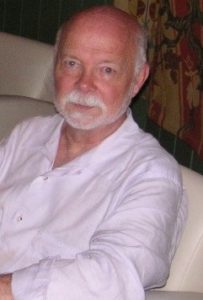 Don Pollock was active in The Hounds briefly, between 1975 and 1976. At that time he was also a member of The Criterion Bar Association (and its president during the 1975-76 term) and an editor of Baker Street Miscellanea. More recently he has been a member of The Five Orange Pips and The John H. Watson Society, and he enjoys the annual dinner of The 140 Varieties of Tobacco Ash. He is also an editor of the new Saturday Review of Literature.
Don Pollock was active in The Hounds briefly, between 1975 and 1976. At that time he was also a member of The Criterion Bar Association (and its president during the 1975-76 term) and an editor of Baker Street Miscellanea. More recently he has been a member of The Five Orange Pips and The John H. Watson Society, and he enjoys the annual dinner of The 140 Varieties of Tobacco Ash. He is also an editor of the new Saturday Review of Literature.
♦
♦
♦
♦
Marsha Pollak
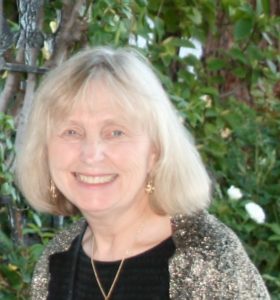 Marsha Pollak, a native of Cincinnati, has lived in San Jose, CA for the last 30 years with her husband David. She is a member of two Bay Area scions, the San Francisco-based The Scowrers and Molly Maguires and the Redwood City-based The Knights of the Gnomon. She received her B.A. in International Studies from Miami University and her M.L.S. from Simmons College in Boston before taking her first job as a professional librarian in Buffalo, N.Y. A life-long mystery reader, she became a formal Sherlockian there in the mid-1970s after reading an article about a scion being formed that would become An Irish Secret Society at Buffalo. She quickly discovered The Adventuresses of Sherlock Holmes and was invested as Mrs. Neville St. Clair in 1981. Career moves have taken her to Tampa and Dallas before reaching San Jose, and she has participated in local scions at each stop. Following in the footsteps of John Bennett Shaw and Francine Swift, she also has guided the oldest profession-oriented scion for more than 30 years, The Sub-Librarians Scion of the Baker Street Irregulars in the American Library Association. Invested into The Baker Street Irregulars in 1996 as A Small But Select Library, Marsha currently is responsible for the BSI Oral History Project, coordinating audio interviews of members world-wide for the BSI Trust Archives that are housed in the Houghton Library at Harvard University. Now retired after four decades of public service as a librarian, she also is Series Editor for the BSI Press Professions Series. She was honored to become a member of the Hounds of the Baskerville (sic) in 2015.
Marsha Pollak, a native of Cincinnati, has lived in San Jose, CA for the last 30 years with her husband David. She is a member of two Bay Area scions, the San Francisco-based The Scowrers and Molly Maguires and the Redwood City-based The Knights of the Gnomon. She received her B.A. in International Studies from Miami University and her M.L.S. from Simmons College in Boston before taking her first job as a professional librarian in Buffalo, N.Y. A life-long mystery reader, she became a formal Sherlockian there in the mid-1970s after reading an article about a scion being formed that would become An Irish Secret Society at Buffalo. She quickly discovered The Adventuresses of Sherlock Holmes and was invested as Mrs. Neville St. Clair in 1981. Career moves have taken her to Tampa and Dallas before reaching San Jose, and she has participated in local scions at each stop. Following in the footsteps of John Bennett Shaw and Francine Swift, she also has guided the oldest profession-oriented scion for more than 30 years, The Sub-Librarians Scion of the Baker Street Irregulars in the American Library Association. Invested into The Baker Street Irregulars in 1996 as A Small But Select Library, Marsha currently is responsible for the BSI Oral History Project, coordinating audio interviews of members world-wide for the BSI Trust Archives that are housed in the Houghton Library at Harvard University. Now retired after four decades of public service as a librarian, she also is Series Editor for the BSI Press Professions Series. She was honored to become a member of the Hounds of the Baskerville (sic) in 2015.
♦
Daniel Posnansky
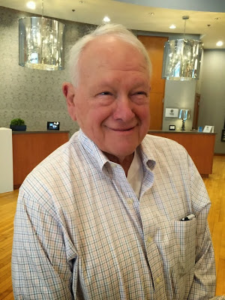 Daniel Posnansky is a retired administrator of Harvard University, a life-long reader of the Canon and a Collector of all things Sherlockian for most of his life. He is a member of The Speckled Band of Boston, currently serving as Keeper of the Band, as well as one of the founders of The Friends of Irene Adler. Posnansky received the investiture of “Colonel Hayter” in 1977 and also the Two-Schilling Award in 2009 from The Baker Street Irregulars “for extraordinary devotion to the cause beyond the call of duty.”
Daniel Posnansky is a retired administrator of Harvard University, a life-long reader of the Canon and a Collector of all things Sherlockian for most of his life. He is a member of The Speckled Band of Boston, currently serving as Keeper of the Band, as well as one of the founders of The Friends of Irene Adler. Posnansky received the investiture of “Colonel Hayter” in 1977 and also the Two-Schilling Award in 2009 from The Baker Street Irregulars “for extraordinary devotion to the cause beyond the call of duty.”
♦
♦
♦
♦
Edward Quayle
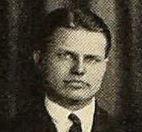 Edward Quayle was born in Van Wert, Ohio on February 15, 1905. He attended the University of Chicago and in March 1928 married Mary Jane Ward. They lived first in Evanston, but were in Greenwich Village NY in 1939 when he became a salesman for the World’s Fair. Both tried to make their livings as writers, but their lack of success and subsequent financial problems contributed to a nervous breakdown his wife suffered, leading to an eight-month confinement at a state mental hospital. Later she wrote The Snake Pit about her experiences there; the novel was published by Random House in 1946, with publisher Bennett Cerf sending the galleys to movie director Anatole Litvak, who made a motion picture from it in 1948. Ward credited her husband and doctors for her recovery. With her success, Quayle set aside his career as a statistician and accountant and became her business manager. In the mid-1940s they bought a 130-acre dairy farm near Elgin IL to escape the constant public attention over the book, but eventually moved back to Evanston. In November 1955, the Decatur Daily Review described Quayle as “a safety engineer in prevention of industrial accidents.” Quayle remained supportive of his wife’s work in the field of mental health. His essay “Suffer the Little Children” appeared in Vol. 3, Number 4 of The Baker Street Journal in 1948. Mary Jane’s death in 1981 was followed by his on August 25, 1992, in San Diego, CA.
Edward Quayle was born in Van Wert, Ohio on February 15, 1905. He attended the University of Chicago and in March 1928 married Mary Jane Ward. They lived first in Evanston, but were in Greenwich Village NY in 1939 when he became a salesman for the World’s Fair. Both tried to make their livings as writers, but their lack of success and subsequent financial problems contributed to a nervous breakdown his wife suffered, leading to an eight-month confinement at a state mental hospital. Later she wrote The Snake Pit about her experiences there; the novel was published by Random House in 1946, with publisher Bennett Cerf sending the galleys to movie director Anatole Litvak, who made a motion picture from it in 1948. Ward credited her husband and doctors for her recovery. With her success, Quayle set aside his career as a statistician and accountant and became her business manager. In the mid-1940s they bought a 130-acre dairy farm near Elgin IL to escape the constant public attention over the book, but eventually moved back to Evanston. In November 1955, the Decatur Daily Review described Quayle as “a safety engineer in prevention of industrial accidents.” Quayle remained supportive of his wife’s work in the field of mental health. His essay “Suffer the Little Children” appeared in Vol. 3, Number 4 of The Baker Street Journal in 1948. Mary Jane’s death in 1981 was followed by his on August 25, 1992, in San Diego, CA.
Biographical information provided courtesy of Julie McKuras and Jon Lellenberg.
♦
Basil Rathbone
 The first truly great Sherlock Holmes in movies was born in Johannesburg, South Africa on June 13, 1892, and began his theatrical career in London in 1911. After serving in the British Army during World War I, he resumed his theatrical career, in New York as well as London, and entered motion pictures in 1921. In 1939 his manner and appearance led to the role of Sherlock Holmes in 20th Century Fox’s The Hound of the Baskervilles, and while he would play many other roles in future years, his course was set as the new public image of Sherlock Holmes, recreating the role on screen another thirteen times, and also on radio — a persona renewed in the American mind after his 1940s movies began to be run on television in the 1950s. Rathbone and Vincent Starrett met for the first time the summer of 1947, when the actor was in Chicago on business and arranged to meet the great Sherlockian writer about a Holmesian reverie he had written called “Daydream” (which, thanks to Starrett, appeared in the October 1947 Baker Street Journal, and in 1989 in BSJ editor Philip Shreffler’s collection Sherlock Holmes by Gas-Lamp: Highlights from the First Four Decades of The Baker Street Journal). After their meeting, on July 13, 1947, Rathbone wrote to Starrett from his weekend home in Sharon, CT: “It was a privilege & a pleasure meeting you. Thank you so much for taking time out from your busy life, and for your graciousness in making me a member of The Chicago Baskervilles.” The two great men continued to correspond periodically over the years that followed, and while it was not their only subsequent reunion in person, in 1966 a memorable event in Hounds history took place when Chicago’s WGN-TV created a movie series called “The Sherlock Holmes Theater,” and brought Rathbone to Chicago to tape introductions and commentaries to his own Sherlock Holmes movies. On August 2nd, the final taping session was followed by a memorable and candid three-hour lunch between Rathbone and Starrett, plus Hounds Robert Mangler, John Nieminski, and Robert Hahn. Basil Rathbone died the following year, at age 75, on July 21, 1967, leaving an indelible impression of himself as Sherlock Holmes among Sherlockians and the general public alike. His autobiography, published in 1956, is In and Out of Character.
The first truly great Sherlock Holmes in movies was born in Johannesburg, South Africa on June 13, 1892, and began his theatrical career in London in 1911. After serving in the British Army during World War I, he resumed his theatrical career, in New York as well as London, and entered motion pictures in 1921. In 1939 his manner and appearance led to the role of Sherlock Holmes in 20th Century Fox’s The Hound of the Baskervilles, and while he would play many other roles in future years, his course was set as the new public image of Sherlock Holmes, recreating the role on screen another thirteen times, and also on radio — a persona renewed in the American mind after his 1940s movies began to be run on television in the 1950s. Rathbone and Vincent Starrett met for the first time the summer of 1947, when the actor was in Chicago on business and arranged to meet the great Sherlockian writer about a Holmesian reverie he had written called “Daydream” (which, thanks to Starrett, appeared in the October 1947 Baker Street Journal, and in 1989 in BSJ editor Philip Shreffler’s collection Sherlock Holmes by Gas-Lamp: Highlights from the First Four Decades of The Baker Street Journal). After their meeting, on July 13, 1947, Rathbone wrote to Starrett from his weekend home in Sharon, CT: “It was a privilege & a pleasure meeting you. Thank you so much for taking time out from your busy life, and for your graciousness in making me a member of The Chicago Baskervilles.” The two great men continued to correspond periodically over the years that followed, and while it was not their only subsequent reunion in person, in 1966 a memorable event in Hounds history took place when Chicago’s WGN-TV created a movie series called “The Sherlock Holmes Theater,” and brought Rathbone to Chicago to tape introductions and commentaries to his own Sherlock Holmes movies. On August 2nd, the final taping session was followed by a memorable and candid three-hour lunch between Rathbone and Starrett, plus Hounds Robert Mangler, John Nieminski, and Robert Hahn. Basil Rathbone died the following year, at age 75, on July 21, 1967, leaving an indelible impression of himself as Sherlock Holmes among Sherlockians and the general public alike. His autobiography, published in 1956, is In and Out of Character.
Biographical information provided courtesy of Jon Lellenberg.
♦
Chris Redmond
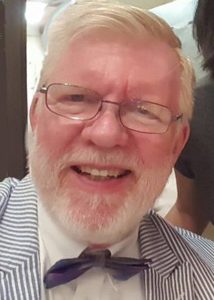 Chris Redmond is a long-time Sherlockian whose home society is The Bootmakers of Toronto; he is a Master Bootmaker and holder of the Emerald Tie-Pin Award, and served for some years as editor of the Bootmakers’ magazine Canadian Holmes. His talks to that society and other Sherlockian groups were collected in 2016 under the title A Quick Succession of Subjects (Wessex Press). He is also the author of such books as In Bed with Sherlock Holmes (1984), A Sherlock Holmes Handbook (1993, 2009), and Lives Beyond Baker Street (2016). He was the editor of the 2016 anthology About Sixty: Why Every Sherlock Holmes Story Is the Best, and has written dozens of articles in the Baker Street Journal, the Sherlock Holmes Journal, and other publications. He created Sherlockian.Net, the first Sherlock Holmes portal on the World Wide Web, in 1994, and continued to edit the site until October 2016. He writes blog posts regularly for the website I Hear of Sherlock Everywhere, and he jumps into Sherlockian conversations on Twitter as @darkgreendesk (because his desk is, in fact, dark green). Chris joined The Baker Street Irregulars in 1966 with the investiture of “Billy”. He is also a member of the Adventuresses of Sherlock Holmes (“The Glamour of His Convictions”) and a founder of The Cesspudlian Society of London, Ontario, and has stumbled into various other Sherlockian societies over the years, not least The Hounds of the Baskerville [sic] in 1983. He was born in Halifax in 1949, and spent his career working in institutional communications for the University of Waterloo, where he retired in 2012. He is in the process (spring 2017) of moving to Carleton Place, Ontario, with his wife Susan Routliffe.
Chris Redmond is a long-time Sherlockian whose home society is The Bootmakers of Toronto; he is a Master Bootmaker and holder of the Emerald Tie-Pin Award, and served for some years as editor of the Bootmakers’ magazine Canadian Holmes. His talks to that society and other Sherlockian groups were collected in 2016 under the title A Quick Succession of Subjects (Wessex Press). He is also the author of such books as In Bed with Sherlock Holmes (1984), A Sherlock Holmes Handbook (1993, 2009), and Lives Beyond Baker Street (2016). He was the editor of the 2016 anthology About Sixty: Why Every Sherlock Holmes Story Is the Best, and has written dozens of articles in the Baker Street Journal, the Sherlock Holmes Journal, and other publications. He created Sherlockian.Net, the first Sherlock Holmes portal on the World Wide Web, in 1994, and continued to edit the site until October 2016. He writes blog posts regularly for the website I Hear of Sherlock Everywhere, and he jumps into Sherlockian conversations on Twitter as @darkgreendesk (because his desk is, in fact, dark green). Chris joined The Baker Street Irregulars in 1966 with the investiture of “Billy”. He is also a member of the Adventuresses of Sherlock Holmes (“The Glamour of His Convictions”) and a founder of The Cesspudlian Society of London, Ontario, and has stumbled into various other Sherlockian societies over the years, not least The Hounds of the Baskerville [sic] in 1983. He was born in Halifax in 1949, and spent his career working in institutional communications for the University of Waterloo, where he retired in 2012. He is in the process (spring 2017) of moving to Carleton Place, Ontario, with his wife Susan Routliffe.
♦
Franklin Rhode
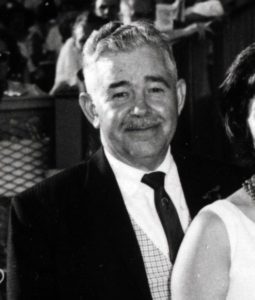 Franklin Williams Rhode was born January 5, 1910 in Chicago, IL. Rhodes was described as a “railroad man and a collector of old English glossaries” in the June 1967 issue of The Baker Street Journal. He was active with Hugo’s Companions, participating in their Silver Blaze horseraces, and served as their Sergeant-at-arms. He contributed the article “My Old Friend Charlie Peace” to the June 1966 Baker Street Journal; “Palmer and Pritchard Were Among the Heads of Their Profession”, parts 1 and 2, to the June 1967 and March 1968 issues; and “Langdale Pike and Steve Dixie” to the March 1970 issue. He received the investiture of “My Old Friend Charlie Peace” from The Baker Street Irregulars in 1967. He moved to St. Louis in 1970. Rhode died on October 17, 1974 and is buried in St. Louis, MO.
Franklin Williams Rhode was born January 5, 1910 in Chicago, IL. Rhodes was described as a “railroad man and a collector of old English glossaries” in the June 1967 issue of The Baker Street Journal. He was active with Hugo’s Companions, participating in their Silver Blaze horseraces, and served as their Sergeant-at-arms. He contributed the article “My Old Friend Charlie Peace” to the June 1966 Baker Street Journal; “Palmer and Pritchard Were Among the Heads of Their Profession”, parts 1 and 2, to the June 1967 and March 1968 issues; and “Langdale Pike and Steve Dixie” to the March 1970 issue. He received the investiture of “My Old Friend Charlie Peace” from The Baker Street Irregulars in 1967. He moved to St. Louis in 1970. Rhode died on October 17, 1974 and is buried in St. Louis, MO.
Biographical information provided courtesy of Julie McKuras.
♦
Robert E. Robinson
 Robert Earl Robinson was born August 3, 1927 in Covington KY. Robinson served in the US Army 1946-47, and obtained his BA in chemistry in 1949 from Berea College. He earned a PhD in organic chemistry (1953) and a Doctor of Philosophy (1955) from Purdue University and did postgraduate studies at the University of Cincinnati. Dr. Robinson worked in the field of organometallic research, beginning with National Distillers and Chemical Corp. in Cincinnati before moving to Stauffer Chemicals in Weston MI. In 1967 he moved to Charleston SC and co-founded Lindau Chemicals, assuming the presidency in 1986. Robinson held over twenty-five patents, published several papers and was senior author in two articles appearing in The Encyclopedia of Polymer Science and Technology. He served as Chair of the Small Chemical Company Division of the American Chemical Society in 1993 and 1998. Robinson was a member of MENSA, the American Institute of Chemists, the American Society for the Advancement of Science and the New York Academy of Science. He belonged to the Columbia Museum of Art and served on the Board of Directors for the Palmetto Opera and the S.C. Philharmonic Orchestra. He was a member of The Hansom Wheels of South Carolina, serving as Program Chairman for over thirty years, and The Sherlock Holmes Society of London. Robinson received The Baker Street Irregulars investiture of “The Hansom Cab” in 1986. He died on August 11, 2012 in Columbia SC.
Robert Earl Robinson was born August 3, 1927 in Covington KY. Robinson served in the US Army 1946-47, and obtained his BA in chemistry in 1949 from Berea College. He earned a PhD in organic chemistry (1953) and a Doctor of Philosophy (1955) from Purdue University and did postgraduate studies at the University of Cincinnati. Dr. Robinson worked in the field of organometallic research, beginning with National Distillers and Chemical Corp. in Cincinnati before moving to Stauffer Chemicals in Weston MI. In 1967 he moved to Charleston SC and co-founded Lindau Chemicals, assuming the presidency in 1986. Robinson held over twenty-five patents, published several papers and was senior author in two articles appearing in The Encyclopedia of Polymer Science and Technology. He served as Chair of the Small Chemical Company Division of the American Chemical Society in 1993 and 1998. Robinson was a member of MENSA, the American Institute of Chemists, the American Society for the Advancement of Science and the New York Academy of Science. He belonged to the Columbia Museum of Art and served on the Board of Directors for the Palmetto Opera and the S.C. Philharmonic Orchestra. He was a member of The Hansom Wheels of South Carolina, serving as Program Chairman for over thirty years, and The Sherlock Holmes Society of London. Robinson received The Baker Street Irregulars investiture of “The Hansom Cab” in 1986. He died on August 11, 2012 in Columbia SC.
Biographical information provided courtesy of Julie McKuras.
♦
Milt Rosenberg
 Milton J. Rosenberg is an Honorary Member of The Hounds of the Baskerville (sic). He was born in New York City and received his BA from Brooklyn College in 1946, his MA from the University of Wisconsin in 1948 and his PhD from the University of Michigan in 1953. He taught Psychology at the University of Michigan, Yale University, Ohio State University and Dartmouth College before coming to the University of Chicago in the mid 1960s where he served as director of the Social and Organizational Psychology doctoral program. He has lectured extensively and also was a staff member of the Naval War College. While continuing his academic career, specializing in the field of attitude acquisition and attitude change, he recorded conversations “between faculty members and visitors to campus” (NEH site) and mailed them to radio stations. That led to his hiring as a radio host (1973-2012). His program, “Extension 720” broadcast on WGN was described as “the kind of talk radio educated people often assume doesn’t exist anymore. The range of issues is high-minded and endless; the guests, whether little known or certifiably famous, are of very high quality [Colin Powell, Margaret Thatcher, Jimmy Carter, Carl Sagan, David Brinkley, and Henry Kissinger, to name a few]; and Rosenberg himself is more or less unstoppable.” (NEH site) In 2015 he returned to radio. Rosenberg has written extensively about his academic field in journals and books. He was awarded The Responsibility in Journalism Award in 1988 and the National Humanities Medal in 2008. The Chicago City Council honored him in recognition of his contributions to the city. In addition, Milt has a keen interest in detective fiction and Conan Doyle’s Sherlock Holmes stories in particular. His broadcasts on this topic many times featured members of the Hounds of the Baskerville (sic). The most recent such broadcast took place in 2015. Rosenberg died in Chicago, IL on January 9, 2018.
Milton J. Rosenberg is an Honorary Member of The Hounds of the Baskerville (sic). He was born in New York City and received his BA from Brooklyn College in 1946, his MA from the University of Wisconsin in 1948 and his PhD from the University of Michigan in 1953. He taught Psychology at the University of Michigan, Yale University, Ohio State University and Dartmouth College before coming to the University of Chicago in the mid 1960s where he served as director of the Social and Organizational Psychology doctoral program. He has lectured extensively and also was a staff member of the Naval War College. While continuing his academic career, specializing in the field of attitude acquisition and attitude change, he recorded conversations “between faculty members and visitors to campus” (NEH site) and mailed them to radio stations. That led to his hiring as a radio host (1973-2012). His program, “Extension 720” broadcast on WGN was described as “the kind of talk radio educated people often assume doesn’t exist anymore. The range of issues is high-minded and endless; the guests, whether little known or certifiably famous, are of very high quality [Colin Powell, Margaret Thatcher, Jimmy Carter, Carl Sagan, David Brinkley, and Henry Kissinger, to name a few]; and Rosenberg himself is more or less unstoppable.” (NEH site) In 2015 he returned to radio. Rosenberg has written extensively about his academic field in journals and books. He was awarded The Responsibility in Journalism Award in 1988 and the National Humanities Medal in 2008. The Chicago City Council honored him in recognition of his contributions to the city. In addition, Milt has a keen interest in detective fiction and Conan Doyle’s Sherlock Holmes stories in particular. His broadcasts on this topic many times featured members of the Hounds of the Baskerville (sic). The most recent such broadcast took place in 2015. Rosenberg died in Chicago, IL on January 9, 2018.
♦
Thomas Russo
 Thomas M. Russo was born Nov. 5, 1949 in Chicago, IL. He attended Gordon Technical High School and enlisted in the Air Force in 1970. Russo served in Vietnam and Desert Shield and retired from the Air Force in April 2008. He continued serving as an aircraft technician on airplanes. He enjoyed wrestling and was a member of the POBOB Motorcycle Club. His obituary noted that one event he particularly enjoyed was the annual motorcycle run in Loma Linda which benefited a home for disabled children. He was a member of the American Legion In 1983 he received the investiture of “The Boscombe Valley Mystery” in The Baker Street Irregulars. He was a member of Hugo’s Companions. He died on April 18, 2014 in Riverside CA with full military Air Force Honors. His family invited the Patriot Guard Riders to attend the funeral. He is buried in Riverside National Cemetery.
Thomas M. Russo was born Nov. 5, 1949 in Chicago, IL. He attended Gordon Technical High School and enlisted in the Air Force in 1970. Russo served in Vietnam and Desert Shield and retired from the Air Force in April 2008. He continued serving as an aircraft technician on airplanes. He enjoyed wrestling and was a member of the POBOB Motorcycle Club. His obituary noted that one event he particularly enjoyed was the annual motorcycle run in Loma Linda which benefited a home for disabled children. He was a member of the American Legion In 1983 he received the investiture of “The Boscombe Valley Mystery” in The Baker Street Irregulars. He was a member of Hugo’s Companions. He died on April 18, 2014 in Riverside CA with full military Air Force Honors. His family invited the Patriot Guard Riders to attend the funeral. He is buried in Riverside National Cemetery.
Biographical information provided courtesy of Julie McKuras.
♦
♦
Lowell D. Ryan
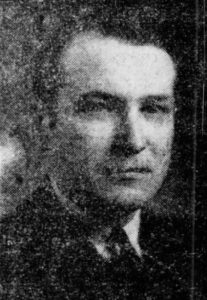 Lowell D. Ryan was born October 10, 1912 in Middletown, IL and attended the University of Illinois in Chicago. “…he spent most of his life up until 1942 in Springfield, where he engaged in the practice of law, newspaper work and insurance loans [for Prudential Insurance]. He also served as a member of the Springfield Civil Service Commission. Immediately prior to joining the staff of the Illinois State Chamber, Ryan served as a special agent for the F. B. I.” (Jacksonville Daily Journal) He was employed by the F.B.I. in the Chicago Field Office by 1944. After serving in the F.B.I., Ryan was the manager of the legislative and governmental affairs department of the Illinois Chamber of Commerce. He died in April 30, 1979 in Ann Arbor, MI.
Lowell D. Ryan was born October 10, 1912 in Middletown, IL and attended the University of Illinois in Chicago. “…he spent most of his life up until 1942 in Springfield, where he engaged in the practice of law, newspaper work and insurance loans [for Prudential Insurance]. He also served as a member of the Springfield Civil Service Commission. Immediately prior to joining the staff of the Illinois State Chamber, Ryan served as a special agent for the F. B. I.” (Jacksonville Daily Journal) He was employed by the F.B.I. in the Chicago Field Office by 1944. After serving in the F.B.I., Ryan was the manager of the legislative and governmental affairs department of the Illinois Chamber of Commerce. He died in April 30, 1979 in Ann Arbor, MI.
Biographical information provided courtesy of Julie McKuras.
♦
♦
♦
Franklin Saksena
 Dr. Franklin Saksena has been a member of The Criterion Bar Association since 1981 and has been its President since 2014. He has been devising Sherlockian crossword puzzles for the Criterion Bar Association since 1992, has published two Sherlock Holmes crossword puzzle books (2000 and 2011) and won the Paget-Steele award (Hugo’s Companions) for these publications (Anno Holmes 147). He also wrote a chapter on “Cardiology in the Canon” in the BSI book on Nerve and Knowledge (Editors: Katz & Solberg) in 2015. In addition to his involvement in The Criterion Bar Association, Dr. Saksena received the investiture of “Jonathan Small” from The Baker Street Irregulars in 2005, and is a member of The Torists, The Scotland Yarders, Hugo’s Companions, and The Hounds. He has given talks to most of the above Scion Societies on Historical events pertaining to the Canon as well as on bedside diagnosis and Medical forensics. Complementing his interests in Sherlock Holmes, Dr. Saksena enjoys teaching Physical diagnosis to Students and Physicians alike and endeavors to apply Holmesian deductions to bedside diagnosis. He is the author or co-author of 5 medical books in Cardiology. At present, he is a voluntary attending Physician in Adult Cardiology at Cook County Hospital, an Associate professor of Clinical Medicine at Northwestern University and has a part time private Practice in Cardiology and Internal Medicine.
Dr. Franklin Saksena has been a member of The Criterion Bar Association since 1981 and has been its President since 2014. He has been devising Sherlockian crossword puzzles for the Criterion Bar Association since 1992, has published two Sherlock Holmes crossword puzzle books (2000 and 2011) and won the Paget-Steele award (Hugo’s Companions) for these publications (Anno Holmes 147). He also wrote a chapter on “Cardiology in the Canon” in the BSI book on Nerve and Knowledge (Editors: Katz & Solberg) in 2015. In addition to his involvement in The Criterion Bar Association, Dr. Saksena received the investiture of “Jonathan Small” from The Baker Street Irregulars in 2005, and is a member of The Torists, The Scotland Yarders, Hugo’s Companions, and The Hounds. He has given talks to most of the above Scion Societies on Historical events pertaining to the Canon as well as on bedside diagnosis and Medical forensics. Complementing his interests in Sherlock Holmes, Dr. Saksena enjoys teaching Physical diagnosis to Students and Physicians alike and endeavors to apply Holmesian deductions to bedside diagnosis. He is the author or co-author of 5 medical books in Cardiology. At present, he is a voluntary attending Physician in Adult Cardiology at Cook County Hospital, an Associate professor of Clinical Medicine at Northwestern University and has a part time private Practice in Cardiology and Internal Medicine.
Educated in England, Canada, and U.S.A., Dr. Saksena obtained his Medical degree at Queen’s University, Kingston, Ontario Canada and currently lives in the Chicago area.
♦
George H. Scheetz
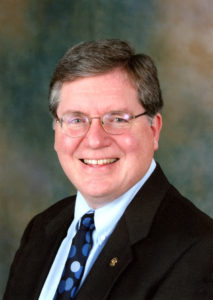 George H. Scheetz has over 40 years’ experience as a professional librarian, first as a reference librarian at Bradley University, and, most recently, for over 30 years, as the chief executive officer of three different public libraries in Sioux City, Champaign, and Batavia. He earned his Master of Science in Library Science in 1976 at the University of Illinois at Urbana-Champaign. In addition to Sherlock Holmes (see below), his interests include (but are not limited to) books, especially the works of Philip José Farmer and Thorne Smith; place names; Rotary International; his cats; The Addams Family; words that end in –gry; local history; and his spousal equivalent. On April 23, he celebrates Georgemas. He lives in Batavia, Illinois, and has two children and two grandchildren.
George H. Scheetz has over 40 years’ experience as a professional librarian, first as a reference librarian at Bradley University, and, most recently, for over 30 years, as the chief executive officer of three different public libraries in Sioux City, Champaign, and Batavia. He earned his Master of Science in Library Science in 1976 at the University of Illinois at Urbana-Champaign. In addition to Sherlock Holmes (see below), his interests include (but are not limited to) books, especially the works of Philip José Farmer and Thorne Smith; place names; Rotary International; his cats; The Addams Family; words that end in –gry; local history; and his spousal equivalent. On April 23, he celebrates Georgemas. He lives in Batavia, Illinois, and has two children and two grandchildren.
Scheetz first discovered the Canon in The Boys’ Sherlock Holmes, New and Enlarged Edition: A Selection from the Works of A. Conan Doyle, arranged with an introduction by Howard Haycraft (1961). In 1967, at fifteen years old, Scheetz convinced his parents to purchase the two-volume The Annotated Sherlock Holmes, edited by William S. Baring-Gould (1967), for him as a birthday (or perhaps Christmas) gift. (He still owns both books.) In July 1975, Scheetz was a founding member and first president of The Double-Barrelled Tiger Cubs in Champaign-Urbana, Illinois, and founding editor of Afghanistanzas. In November 1977, Scheetz was a charter member of The Hansoms of John Clayton in Peoria, Illinois, founded by Philip José Farmer, and founding editor of Wheelwrightings. In July 1981, at the S. Holmes Esq. Pub in San Francisco, Scheetz and Marsha L. Pollak revived The Sub-Librarians Scion of the Baker Street Irregulars in the American Library Association. In 1982, Scheetz relocated to Ames, Iowa, where he launched The Lying Corn-Chandlers. In November 1987, he published (with Robert C. Burr) A New Chronology of the Hansoms of John Clayton on the Occasion of Its Decennial Year. Scheetz’s article, “‘The Sherlockismus’ Revisited,” appeared in The Baker Street Journal (March 1988). His article, “We Were Introduced by Sherlock Holmes,” about Scheetz and Philip José Farmer, appeared in Farmerphile (April 2008). In October 2012, Scheetz founded The Tenacious Bulldogs in Batavia, Illinois. In October 2014, Scheetz was inducted as a member of The Hounds of the Baskerville (sic). “Billiards with: The Sub-Librarians,” an interview with Scheetz by Beth Gallego, appeared in The Watsonian (Spring 2017). In June 2017, Scheetz and Marsha L. Pollak organized the 50th anniversary gathering of The Sub-Librarians in Chicago, featuring a special presentation on the Sherlock Holmes Collections at the University of Minnesota by Timothy J. Johnson.
♦
J. Warren Scheideman
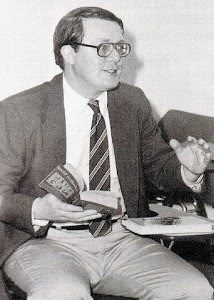 J. Warren Scheideman received his BA from North Central College in 1964 and his MA., Ed.D. from De Paul University. He joined the De Paul faculty “in 1981 as a part-time instructor, became a full-time academic advisor and then, upon completing his doctorate through the College of Education at DePaul, an assistant professor.” (De Paul Emeritus Society). He acted as a mentor for undergraduate students, and taught ethics and qualitative inquiry in the M.A. program. His wide-range of interests included intellectual history, film, literature, adult learning, British mysteries, military history, H. L. Mencken, Chicago and Oak Park social history, and late nineteenth and early twentieth century English and American literary history. He was widely published on these academic areas and was a speaker at the 1979 Bouchercon. He also worked with Loyola University’s Continuing Education program. Scheideman was a member of Hugo’s Companions and won their Horace Harker Award in 1979. He was a presenter at the 1990 Morley Memorial Symposium in Chicago and had numerous articles published in the Devon County Chronicle, the Baker Street Journal, Canadian Holmes and The Armchair Detective. He received the investiture of “Count Von und Zu Grafenstein” from The Baker Street Irregulars in 1982. Scheideman died on August 25, 2011 at the age of 69. At the time of his death he was a faculty member in De Paul’s School for New Learning. A Film Noir class at De Paul was dedicated to him.
J. Warren Scheideman received his BA from North Central College in 1964 and his MA., Ed.D. from De Paul University. He joined the De Paul faculty “in 1981 as a part-time instructor, became a full-time academic advisor and then, upon completing his doctorate through the College of Education at DePaul, an assistant professor.” (De Paul Emeritus Society). He acted as a mentor for undergraduate students, and taught ethics and qualitative inquiry in the M.A. program. His wide-range of interests included intellectual history, film, literature, adult learning, British mysteries, military history, H. L. Mencken, Chicago and Oak Park social history, and late nineteenth and early twentieth century English and American literary history. He was widely published on these academic areas and was a speaker at the 1979 Bouchercon. He also worked with Loyola University’s Continuing Education program. Scheideman was a member of Hugo’s Companions and won their Horace Harker Award in 1979. He was a presenter at the 1990 Morley Memorial Symposium in Chicago and had numerous articles published in the Devon County Chronicle, the Baker Street Journal, Canadian Holmes and The Armchair Detective. He received the investiture of “Count Von und Zu Grafenstein” from The Baker Street Irregulars in 1982. Scheideman died on August 25, 2011 at the age of 69. At the time of his death he was a faculty member in De Paul’s School for New Learning. A Film Noir class at De Paul was dedicated to him.
Biographical information provided courtesy of Julie McKuras.
♦
Monica M. Schmidt

Monica Schmidt, ASH, BSI, lives near Iowa City, IA, and is the president of The Younger Stamfords. She is a member of multiple Sherlockian scions and societies including The Norwegian Explorers, The Sons of the Copper Beeches, and The 140 Varieties of Tobacco Ash. Monica has been a speaker at several conferences and events, typically speaking on the subject of Sherlock Holmes and mental health. She has written articles for a number of publications and was a contributing author in About Sixty; About Being a Sherlockian; and Sherlock Holmes is Like. Monica grew up with a love of all things Sherlockian, beginning with a children’s edition of The Mysteries of Sherlock Holmes and the 1987 TV movie The Return of Sherlock Holmes. Monica became a member of The Hounds in 2015. She received the investiture of “Julia Stoner” from The Baker Street Irregulars in 2019 and “The Church of St. Monica” from The Adventuresses of Sherlock Holmes in 2015. When not engaging in Sherlockian events or attending film festivals, Monica works as a licensed mental health counselor specializing in the treatment of substance abuse, is a member of the film critic staff for Cedar Rapids radio station, KCCK, and lectures for Humanities Iowa.
♦
Richard Schwartz
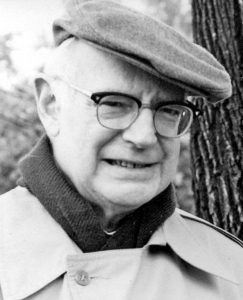 Richard Swawite Schwartz MD was born on Feb. 20, 1917 in Chicago, IL. He graduated from Cornell University, Harvard Law School in 1943 and received his medical degree from the University of Basel. He was a talented violinist and owned a Cremona violin and when he moved back to Chicago in 1970, he belonged to the Flute and Fiddle Club of Highland Park, IL. He was also a collector of nineteenth-century Greek philosophy volumes. In 1995 he moved to Albuquerque NM. Schwartz was an early member of The Speckled Band of Boston. He was also a member of Hugo’s Companions, and served as The Most Drunken Companion in the early 1950s. He was awarded the investiture of “Dr. Percy Trevelyan” by The Baker Street Irregulars in 1977. Schwartz died on December 11, 2003. He is buried in Ahvenisto Cemetery, Finland.
Richard Swawite Schwartz MD was born on Feb. 20, 1917 in Chicago, IL. He graduated from Cornell University, Harvard Law School in 1943 and received his medical degree from the University of Basel. He was a talented violinist and owned a Cremona violin and when he moved back to Chicago in 1970, he belonged to the Flute and Fiddle Club of Highland Park, IL. He was also a collector of nineteenth-century Greek philosophy volumes. In 1995 he moved to Albuquerque NM. Schwartz was an early member of The Speckled Band of Boston. He was also a member of Hugo’s Companions, and served as The Most Drunken Companion in the early 1950s. He was awarded the investiture of “Dr. Percy Trevelyan” by The Baker Street Irregulars in 1977. Schwartz died on December 11, 2003. He is buried in Ahvenisto Cemetery, Finland.
Biographical information provided courtesy of Julie McKuras.
♦
♦
John Schwind
Fath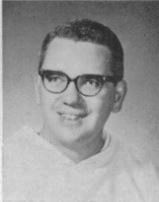 er John Ellsworth Schwind, O.P., was born April 28, 1931 in Oak Park, IL. Father Schwind attended St. Mary’s College in Winona, MN and then entered the Dominican Seminary of St. Rose in Dubuque, IA. In 1969 he was ordained a Dominican priest. He taught American History at Fenwick High School in Oak Park, IL from 1959-1966. Schwind also attended Catholic University and the Aquinas Institute of Philosophy and Theology. His Chicago Tribune obituary notes he “was active in ministry at churches and universities [including Michigan State University] throughout the Midwest from 1966-1991.” In 1991 he was named Associate Pastor at the Church of San Marco in Marco Island FL. During his time at Fenwick High School, he co-founded the junior scion The Priory Scholars of Fenwick High School with his fellow Hound Father Leonard Cochran. He was also a member of Hugo’s Companions. Along with Father Cochran, Schwind provided the graveside prayers for Vincent Starrett in 1974. Schwind died on February 25, 1993 in Marco Island, FL.
er John Ellsworth Schwind, O.P., was born April 28, 1931 in Oak Park, IL. Father Schwind attended St. Mary’s College in Winona, MN and then entered the Dominican Seminary of St. Rose in Dubuque, IA. In 1969 he was ordained a Dominican priest. He taught American History at Fenwick High School in Oak Park, IL from 1959-1966. Schwind also attended Catholic University and the Aquinas Institute of Philosophy and Theology. His Chicago Tribune obituary notes he “was active in ministry at churches and universities [including Michigan State University] throughout the Midwest from 1966-1991.” In 1991 he was named Associate Pastor at the Church of San Marco in Marco Island FL. During his time at Fenwick High School, he co-founded the junior scion The Priory Scholars of Fenwick High School with his fellow Hound Father Leonard Cochran. He was also a member of Hugo’s Companions. Along with Father Cochran, Schwind provided the graveside prayers for Vincent Starrett in 1974. Schwind died on February 25, 1993 in Marco Island, FL.
Biographical information provided courtesy of Julie McKuras.
♦
Douglas Shanklin
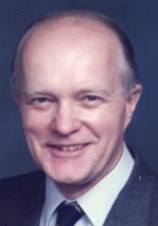 Douglas Radford Shanklin, MD was born Nov. 25, 1930 in Camden NJ and grew up in Washington DC where his Eagle Scout project was building Appalachian Trail cabins. He attended Syracuse University, the State University of New York Medical School and served his residency in pathology and obstetrics at Duke University. He then spent 2 years in the Navy. Shanklin worked as a research trainee/junior investigator at the Marine Biological Laboratory (MBL) in Woods Hole MA in 1955 then completed his Fellowship in Pathology in Syracuse in 1958. He did extensive research into diseases associated with pregnancy, newborns and women’s health, and published over 500 articles and four books on various subjects. One colleague noted that “he [almost] single-handedly created the field of fetal and neonatal pathology.” Shanklin served as the USDA’s Chairman of the National Advisory Panel, Women’s and Infant’s Program Study 1979-1986. He was an associate professor at the University of FL Medical School, taught at the State University of NY and at 36, was the youngest full professor at the University of Chicago. In 1983 he moved to the University of TN as Professor of Pathology and Obstetrics and Gynecology. Shanklin held 11 Visiting Professorships, 7 outside the U.S., and was a Fellow in the Royal Medical Society of London. He was the recipient of numerous awards for his teaching and research and served as an editorial board member for over 14 medical journals. In his later years he was a medical malpractice expert witness and consultant, instrumental in overturning several death row convictions in FL. He was interested in puzzles, opera, Gilbert and Sullivan, the environment, and travel. He served on many medical boards as well as maintained memberships in the Potomac Appalachian Trail Club, the American Chemical Society, the Navy League and the MBL Corporation. Shanklin belonged to Hugo’s Companions and The Hounds. Dr. Shanklin died on Nov. 12, 2013 in Washington DC.
Douglas Radford Shanklin, MD was born Nov. 25, 1930 in Camden NJ and grew up in Washington DC where his Eagle Scout project was building Appalachian Trail cabins. He attended Syracuse University, the State University of New York Medical School and served his residency in pathology and obstetrics at Duke University. He then spent 2 years in the Navy. Shanklin worked as a research trainee/junior investigator at the Marine Biological Laboratory (MBL) in Woods Hole MA in 1955 then completed his Fellowship in Pathology in Syracuse in 1958. He did extensive research into diseases associated with pregnancy, newborns and women’s health, and published over 500 articles and four books on various subjects. One colleague noted that “he [almost] single-handedly created the field of fetal and neonatal pathology.” Shanklin served as the USDA’s Chairman of the National Advisory Panel, Women’s and Infant’s Program Study 1979-1986. He was an associate professor at the University of FL Medical School, taught at the State University of NY and at 36, was the youngest full professor at the University of Chicago. In 1983 he moved to the University of TN as Professor of Pathology and Obstetrics and Gynecology. Shanklin held 11 Visiting Professorships, 7 outside the U.S., and was a Fellow in the Royal Medical Society of London. He was the recipient of numerous awards for his teaching and research and served as an editorial board member for over 14 medical journals. In his later years he was a medical malpractice expert witness and consultant, instrumental in overturning several death row convictions in FL. He was interested in puzzles, opera, Gilbert and Sullivan, the environment, and travel. He served on many medical boards as well as maintained memberships in the Potomac Appalachian Trail Club, the American Chemical Society, the Navy League and the MBL Corporation. Shanklin belonged to Hugo’s Companions and The Hounds. Dr. Shanklin died on Nov. 12, 2013 in Washington DC.
Biographical information provided courtesy of Julie McKuras.
♦
Robert Sharfman
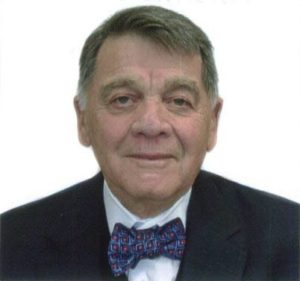 I am a Chicago product. Born in 1936 (you do the math – I am older than dirt), on the Westside to parents who lived at 4800 South Green Street (edge of back of the yards). We moved to South Shore when I was 3 months old. I attended O’Keefe Grammar School; Hyde Park High School; the University of Illinois (Champaign); and DePaul Law School. I practiced law in Chicago for over 50 years with a firm I founded with my partner David Gomberg. I taught Law at IIT-Kent in its LLM program on Financial Services; and Economics and Finance as the Goodyear Executive Professor at Kent State University in Ohio. It was my version of paying it forward. I became a member of Hugo’s Companions when I heard about them from Wally Phillips, a popular D.J. at the time (in the 60’s). I worked hard at avoiding any responsible office, but did meet the managing director of the Abbey National Building Society (located at 221 Baker Street), and his wife (who was from Lake Forest, Illinois), and the owner of the Bolton Building Society located next to the Abby National on Baker Street. It was a privilege to meet John Bennett Shaw, Vincent Starrett (who signed my Hounds Certificate of Membership); Bob Mangler; Bob Hahn; John Neminski; Eli Liebow and other great Sherlockian scholars. I never was a scholar, but a devoted fan of the Master – and really of those who were scholars. My writings (on the writing or otherwise) consisted of articles and one book on dry legal subjects of no special importance to the BSI. I have sent my papers on economics and finance to Mycroft at his club, but have had no responses. When I was inducted into The Hounds one needed to “do something to add to the writings”. I had no Sherlockian writings, but did have perfect attendance and was a great toast drinker. I think that is what made me eligible. I have learned from them all and am a better person for the effect of their presence in my life. My Sherlockian collection includes a handwritten note from ACD and a signed copy of the book 221B by VS. My Sherlockian experience has been wonderful and I tip my deerstalker hat to all of you who let me tag along.
I am a Chicago product. Born in 1936 (you do the math – I am older than dirt), on the Westside to parents who lived at 4800 South Green Street (edge of back of the yards). We moved to South Shore when I was 3 months old. I attended O’Keefe Grammar School; Hyde Park High School; the University of Illinois (Champaign); and DePaul Law School. I practiced law in Chicago for over 50 years with a firm I founded with my partner David Gomberg. I taught Law at IIT-Kent in its LLM program on Financial Services; and Economics and Finance as the Goodyear Executive Professor at Kent State University in Ohio. It was my version of paying it forward. I became a member of Hugo’s Companions when I heard about them from Wally Phillips, a popular D.J. at the time (in the 60’s). I worked hard at avoiding any responsible office, but did meet the managing director of the Abbey National Building Society (located at 221 Baker Street), and his wife (who was from Lake Forest, Illinois), and the owner of the Bolton Building Society located next to the Abby National on Baker Street. It was a privilege to meet John Bennett Shaw, Vincent Starrett (who signed my Hounds Certificate of Membership); Bob Mangler; Bob Hahn; John Neminski; Eli Liebow and other great Sherlockian scholars. I never was a scholar, but a devoted fan of the Master – and really of those who were scholars. My writings (on the writing or otherwise) consisted of articles and one book on dry legal subjects of no special importance to the BSI. I have sent my papers on economics and finance to Mycroft at his club, but have had no responses. When I was inducted into The Hounds one needed to “do something to add to the writings”. I had no Sherlockian writings, but did have perfect attendance and was a great toast drinker. I think that is what made me eligible. I have learned from them all and am a better person for the effect of their presence in my life. My Sherlockian collection includes a handwritten note from ACD and a signed copy of the book 221B by VS. My Sherlockian experience has been wonderful and I tip my deerstalker hat to all of you who let me tag along.
♦
Al Shaw
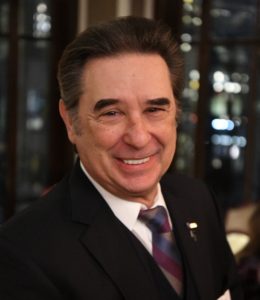 Al Shaw had always enjoyed the Sherlock Holmes stories but when his brother, Mike, started corresponding from Africa using the Dancing Men cypher for privacy, things changed and his appreciation deepened. Upon rereading all the stories, Al’s interest in Holmes was codified. He joined Hugo’s Companions in 1971 and served as officer in the organization until the 80’s. Al is currently “Sir Hugo,” the president of Hugo’s Companions. He was present the first meeting (and then a member) of The Criterion Bar Association in 1972. He wrote his first Sherlockian article (published in Baker Street Miscellanea) and became a member of The Hounds of the Baskervilles (sic) in 1982. Al reflects that he was privileged to be a friend of many of the Sherlockian giants: John Nieminski, John Bennet Shaw, Ely Liebow, Fred Levin, Bob Mangler, Pauls Smedegaard, Bill Goodrich, to name a few. Al Shaw continues to write, contributing to periodicals and anthologies, and is active in multiple scions and Sherlockian activities. In 2018, he received the investiture of “Sir Hugo Baskerville” from The Baker Street Irregulars. He has collections of Sherlockiana, Tobacco Pipes, and Fountain Pens.
Al Shaw had always enjoyed the Sherlock Holmes stories but when his brother, Mike, started corresponding from Africa using the Dancing Men cypher for privacy, things changed and his appreciation deepened. Upon rereading all the stories, Al’s interest in Holmes was codified. He joined Hugo’s Companions in 1971 and served as officer in the organization until the 80’s. Al is currently “Sir Hugo,” the president of Hugo’s Companions. He was present the first meeting (and then a member) of The Criterion Bar Association in 1972. He wrote his first Sherlockian article (published in Baker Street Miscellanea) and became a member of The Hounds of the Baskervilles (sic) in 1982. Al reflects that he was privileged to be a friend of many of the Sherlockian giants: John Nieminski, John Bennet Shaw, Ely Liebow, Fred Levin, Bob Mangler, Pauls Smedegaard, Bill Goodrich, to name a few. Al Shaw continues to write, contributing to periodicals and anthologies, and is active in multiple scions and Sherlockian activities. In 2018, he received the investiture of “Sir Hugo Baskerville” from The Baker Street Irregulars. He has collections of Sherlockiana, Tobacco Pipes, and Fountain Pens.
♦
John Bennett Shaw
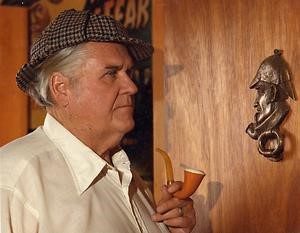
John Bennett Shaw was born October 10, 1913 in Tulsa, OK. He received his A.B. from Notre Dame in 1937, did graduate work in literature at Columbia University, and finished his M.A. at the University of Tulsa in 1939. He was CEO of the Bennett Drilling Company in Oklahoma’s oil industry, but also made much of owning a Tulsa bookstore, a funeral home business that he inherited, and the arcane privileges of being a Grand Knight of the Holy Sepulchre in the Roman Catholic Church. Shaw had been devoted to Sherlock Holmes since reading The Hound of the Baskervilles in childhood, and, as a voracious collector of all things Sherlockian, he was invested “The Hans Sloane of My Age” in the BSI in 1965. The 1960s were also a time of scion society pursuits for Shaw, becoming deeply involved in The Great Alkali Plainsmen of Greater Kansas City and The Arkansas Valley Investors of Little Rock, joining The Hounds of the Baskerville (sic) in 1966, and founding in 1967, within the American Library Association, the BSI’s Sub-Librarians Scion. In 1969 he retired to Santa Fe, N.M., where he founded The Brothers Three of Moriarty, became the “Johnny Appleseed” of scion societies across the land, and conducted Sherlock Holmes workshops from coast to coast that brought the BSI to the attention of many previously unaware of it. He became a member of The Adventuresses of Sherlock Holmes in 1991 with an investiture of “Arcadia.” So many came to Santa Fe to visit him and his collection that his wife Dorothy dubbed their home La Posada Shaw. His Rabelaisian love for quizzes and puns was recorded in The Ragged Shaw, 1987, and The Really Ragged Shaw, 1994. The Basic Holmesian Library, known as the Shaw 100, was compiled in 1983, revised in 1998, and served as a guide to many. Shaw died October 6, 1994. His collection was donated to the University of Minnesota and became the critical-mass of its Sherlock Holmes Collections today. And in 2013’s The Sage of Santa Fe, BSI Susan Rice spoke for many when she said, near the end of her memoir of Shaw, “He simply opened his life and welcomed me in.”
Biographical information provided courtesy of Julie McKuras and Jon Lellenberg.
♦
Charles Shields
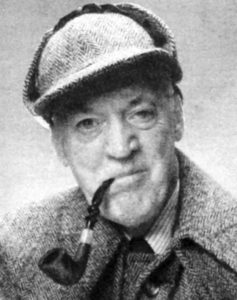 Charles Joseph Shields was born on December 6, 1920 in Philadelphia, PA. He was a member of the Civilian Conservation Corps until the advent of World War II when he enlisted in the U.S. Maritime Service on December 8, 1941. By the late 1940s he was working as a journalist with The Philadelphia Bulletin and The Chester Times. In 1953 he joined the Public Relations Department at the Ford Motor Co. in Park Forest IL where he served as the first Park Forest Art Fair director. He joined the Chicago Heights Star Newspaper in 1964 as their features and business editor. In the 1970s he moved to Frankfort IL and purchased the Chicago Book Mart, and also co-owned the Old Bookseller store. Upon his 1984 retirement he took a position as the communications director for the Illinois Manufacturers Association. He was a member of Chicago’s original Civil War Round Table. Shields was a founding member of The South Downers and belonged to Hugo’s Companions and The Double-Barreled Tiger Cubs. In 1991 he received the investiture of “17 King Edward Street” from The Baker Street Irregulars. He led the annual Christopher Morley walk in New York. Shields died on September 15, 2004 in Frankfort IL.
Charles Joseph Shields was born on December 6, 1920 in Philadelphia, PA. He was a member of the Civilian Conservation Corps until the advent of World War II when he enlisted in the U.S. Maritime Service on December 8, 1941. By the late 1940s he was working as a journalist with The Philadelphia Bulletin and The Chester Times. In 1953 he joined the Public Relations Department at the Ford Motor Co. in Park Forest IL where he served as the first Park Forest Art Fair director. He joined the Chicago Heights Star Newspaper in 1964 as their features and business editor. In the 1970s he moved to Frankfort IL and purchased the Chicago Book Mart, and also co-owned the Old Bookseller store. Upon his 1984 retirement he took a position as the communications director for the Illinois Manufacturers Association. He was a member of Chicago’s original Civil War Round Table. Shields was a founding member of The South Downers and belonged to Hugo’s Companions and The Double-Barreled Tiger Cubs. In 1991 he received the investiture of “17 King Edward Street” from The Baker Street Irregulars. He led the annual Christopher Morley walk in New York. Shields died on September 15, 2004 in Frankfort IL.
Biographical information provided courtesy of Julie McKuras.
♦
Jonathan Shimberg
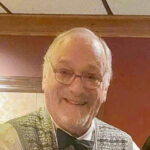 Jonathan Shimberg was born in White Plains, New York in 1949. In 1955 he and his family moved to Pound Ridge , New York. One might say it was done to be close to Wm Baring-Gould, but that would not be true. While growing up he diligently watched the Rathbone Sherlock Holmes movies on WPIX (Ch. 11) but cannot remember picking up a Sherlock Holmes story until he married Linda Crohn, the family Sherlockian. Over the past 30 years or so he has been a member of STUD, Criterion Bar Association, Colonel Moran’s Secret Gun Club, BeeSpeckled Bank, Hugo’s Companions, Illustrious Clients, Scotland Yarders, and has been a Chief Steward of Torist International S.S. for the past three years. A retired lawyer, he has, since finding the time to do so, read, reread and studied the Canon to the best of his current abilities and accumulated too many pastiches with not enough time to read them all. He was invested in the Hounds in 2023.
Jonathan Shimberg was born in White Plains, New York in 1949. In 1955 he and his family moved to Pound Ridge , New York. One might say it was done to be close to Wm Baring-Gould, but that would not be true. While growing up he diligently watched the Rathbone Sherlock Holmes movies on WPIX (Ch. 11) but cannot remember picking up a Sherlock Holmes story until he married Linda Crohn, the family Sherlockian. Over the past 30 years or so he has been a member of STUD, Criterion Bar Association, Colonel Moran’s Secret Gun Club, BeeSpeckled Bank, Hugo’s Companions, Illustrious Clients, Scotland Yarders, and has been a Chief Steward of Torist International S.S. for the past three years. A retired lawyer, he has, since finding the time to do so, read, reread and studied the Canon to the best of his current abilities and accumulated too many pastiches with not enough time to read them all. He was invested in the Hounds in 2023.
♦
Wayne Siatt
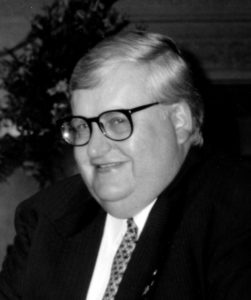 Wayne J. Siatt, a graduate of the University of Illinois, did his graduate work at The School of Journalism, University of Missouri, and made his mark as editor for trade publications in Chicago. His Sherlockian interests were fused with those of Hugo’s Companions when he became a member in 1983, and served seven years as an officer including three as Sir Hugo. With the Companions he won the Horace Harker and Most Notable Companion Awards and was the first recipient of the Paget Steele Award, recognizing that “art in the blood takes the strangest forms.” In fact, in addition to his canonical compositions, Wayne had become known far and wide for his Sherlockian graphic designs. He entered the Hounds in 1988 and from 1991 through 2004 used his creative mastery of Sherlockian imagery to produce award citations, programs, broadsides and other visual media. He is now retired and resides in the Chicago area.
Wayne J. Siatt, a graduate of the University of Illinois, did his graduate work at The School of Journalism, University of Missouri, and made his mark as editor for trade publications in Chicago. His Sherlockian interests were fused with those of Hugo’s Companions when he became a member in 1983, and served seven years as an officer including three as Sir Hugo. With the Companions he won the Horace Harker and Most Notable Companion Awards and was the first recipient of the Paget Steele Award, recognizing that “art in the blood takes the strangest forms.” In fact, in addition to his canonical compositions, Wayne had become known far and wide for his Sherlockian graphic designs. He entered the Hounds in 1988 and from 1991 through 2004 used his creative mastery of Sherlockian imagery to produce award citations, programs, broadsides and other visual media. He is now retired and resides in the Chicago area.
Contributed by Donald J. Terras. Biographical information from Hugo’s Companions: Chicago, Windy City Press 1999; Missives from the Mire: Collected Newsletters from Hugo’s Companions 1949-2004; The
Hounds of the Baskerville (sic) Donald J. Terras, Publisher, 2017.
♦
Jack Siegel
Jack Marvi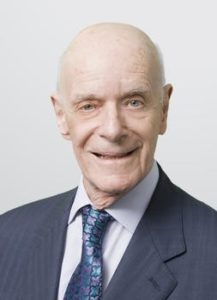 n Siegel was born June 20, 1926 in Chicago, IL. He grew up in Chicago’s South Shore area and enlisted in the Navy after he graduated from high school. After the war ended he attended the University of Chicago for undergraduate studies and a master’s degree in political science, and earned his law degree from the University’s Law School. While a student, in the Spring of 1947 he contributed the article “The First Citizen of Baker Street” to the University’s Chicago Review and that same year he co-founded the Coptic Patriarchs of the University of Chicago. Siegel was also a member of Hugo’s Companions and held the position of Treasurer at one time. When he graduated from law school he began his career with a Chicago law firm, practicing municipal law. He assumed the role as village attorney for Schaumburg IL in 1956 and five years later was appointed to the same position for Arlington Heights, serving there for 53 years; he was with several different law firms while holding the municipal posts. Siegel lived in Wilmette for over half a century. In addition to serving as village attorney for Riverwoods, he was corporation counsel for Evanston for 47 years. He was with the Chicago office of Holland and Knight during the last fifteen years before he died on September 23, 2014.
n Siegel was born June 20, 1926 in Chicago, IL. He grew up in Chicago’s South Shore area and enlisted in the Navy after he graduated from high school. After the war ended he attended the University of Chicago for undergraduate studies and a master’s degree in political science, and earned his law degree from the University’s Law School. While a student, in the Spring of 1947 he contributed the article “The First Citizen of Baker Street” to the University’s Chicago Review and that same year he co-founded the Coptic Patriarchs of the University of Chicago. Siegel was also a member of Hugo’s Companions and held the position of Treasurer at one time. When he graduated from law school he began his career with a Chicago law firm, practicing municipal law. He assumed the role as village attorney for Schaumburg IL in 1956 and five years later was appointed to the same position for Arlington Heights, serving there for 53 years; he was with several different law firms while holding the municipal posts. Siegel lived in Wilmette for over half a century. In addition to serving as village attorney for Riverwoods, he was corporation counsel for Evanston for 47 years. He was with the Chicago office of Holland and Knight during the last fifteen years before he died on September 23, 2014.
Biographical information provided courtesy of Julie McKuras.
♦
Walter Simmons
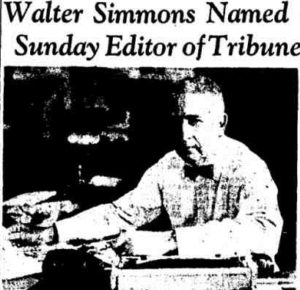 Walter Atherton Simmons, Jr. was born July 7, 1908 in Fargo ND. He attended school in Sioux Falls, and after two years of college, in 1932 he began a 10 year association with Sioux Fall’s Daily Argus-Leader, first as a reporter and eventually the city editor. When the U.S. entered the second world war, Col. Robert McCormick hired Simmons as a reporter for the Chicago Tribune. In July 1943 Simmons went to New Guinea and then the Philippines, filing articles about the battle for Leyte Island and the invasion of Luzon. He used captured Japanese paper “to print an edition of the Tribune for the soldiers…the first copy was autographed by Gen. Douglas MacArthur and sent to Tribune publisher Robert McCormick. The effort won Mr. Simmons a $1000 bonus.” (Chicago Tribune, Dec. 1, 2006) He was with the first American troops who recaptured Manilla. After the war Simmons remained in Tokyo as the Tribune’s Far East correspondent, traveling 50,000 miles a year to sites including China, where he wrote about Chiang Kai-shek, and South Korea. On June 25, 1950, accompanying U.S. military advisors, he was the first U.S. correspondent to witness and report on the beginning of the Korean War. He called his wife in Tokyo who cabled the news to the Tribune. He was later awarded the Edward Scott Beck Journalism Award for his Korean War reporting. Simmons remained Far East correspondent in Tokyo until 1955 when he returned to Chicago and assumed the role of assistant editor of the Tribune’s Sunday edition, a post he held until 1961 when he became Sunday editor. He served as president of the American Association of Sunday and Feature Editors, and retired in 1973. He was an early member of The Hounds, missing most meetings as he was in the Far East, In 1947 he notified Vincent Starrett that a new Sherlockian group was forming in Tokyo. The first meeting of The Baritsu Chapter was held at Simmon’s home in Oct. 1948. Simmons died on November 25, 2006 in Bear Lake, MI.
Walter Atherton Simmons, Jr. was born July 7, 1908 in Fargo ND. He attended school in Sioux Falls, and after two years of college, in 1932 he began a 10 year association with Sioux Fall’s Daily Argus-Leader, first as a reporter and eventually the city editor. When the U.S. entered the second world war, Col. Robert McCormick hired Simmons as a reporter for the Chicago Tribune. In July 1943 Simmons went to New Guinea and then the Philippines, filing articles about the battle for Leyte Island and the invasion of Luzon. He used captured Japanese paper “to print an edition of the Tribune for the soldiers…the first copy was autographed by Gen. Douglas MacArthur and sent to Tribune publisher Robert McCormick. The effort won Mr. Simmons a $1000 bonus.” (Chicago Tribune, Dec. 1, 2006) He was with the first American troops who recaptured Manilla. After the war Simmons remained in Tokyo as the Tribune’s Far East correspondent, traveling 50,000 miles a year to sites including China, where he wrote about Chiang Kai-shek, and South Korea. On June 25, 1950, accompanying U.S. military advisors, he was the first U.S. correspondent to witness and report on the beginning of the Korean War. He called his wife in Tokyo who cabled the news to the Tribune. He was later awarded the Edward Scott Beck Journalism Award for his Korean War reporting. Simmons remained Far East correspondent in Tokyo until 1955 when he returned to Chicago and assumed the role of assistant editor of the Tribune’s Sunday edition, a post he held until 1961 when he became Sunday editor. He served as president of the American Association of Sunday and Feature Editors, and retired in 1973. He was an early member of The Hounds, missing most meetings as he was in the Far East, In 1947 he notified Vincent Starrett that a new Sherlockian group was forming in Tokyo. The first meeting of The Baritsu Chapter was held at Simmon’s home in Oct. 1948. Simmons died on November 25, 2006 in Bear Lake, MI.
Biographical information provided courtesy of Julie McKuras.
♦
Karen Skubish
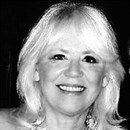 Karen Skubish was born Oct. 24, 1944 in Gary IN. She graduated from Indiana University wit a B.A. in Library Science and Fine Arts, with a double major in Latin and Ancient Greek. She moved to Chicago and in 1967 became a volunteer at the Newberry Library, and was soon hired as the Evening Desk Supervisor then as head of the Reading Room. In the early 1980s she took the position of Head of Events and Volunteers, and planned thousands of events and social gatherings at the library. In 1991 she was named as one of “Todays Chicago Women” by the urban press. She “was a celebrated harpist” (Chicago Tribune) who began playing when she was only 11, and performed at many events at the Newberry as well as at weddings and in France. She was an avid reader with a fondness for British authors, especially Conan Doyle and Somerset Maugham, and was one of the first women inducted into the Caxton Club where she became the second female president. She was also a music lover, appreciating everything from symphony performances to her favorite band, The Rolling Stones. Skubish was a member of The Criterion Bar Association and was named “Yeoman’s Daughter” by The Hounds. The Spring 2011 Baker Street Journal noted she assisted Bob Mangler in the drive to establish “an appropriate headstone in Graceland Cemetery to mark Starrett’s grave.” Skubish died on August 26, 2010 in Chicago, IL. A memorial service was held at the Newberry Library. On October 8, 2010 she was posthumously named a full member of The Hounds.
Karen Skubish was born Oct. 24, 1944 in Gary IN. She graduated from Indiana University wit a B.A. in Library Science and Fine Arts, with a double major in Latin and Ancient Greek. She moved to Chicago and in 1967 became a volunteer at the Newberry Library, and was soon hired as the Evening Desk Supervisor then as head of the Reading Room. In the early 1980s she took the position of Head of Events and Volunteers, and planned thousands of events and social gatherings at the library. In 1991 she was named as one of “Todays Chicago Women” by the urban press. She “was a celebrated harpist” (Chicago Tribune) who began playing when she was only 11, and performed at many events at the Newberry as well as at weddings and in France. She was an avid reader with a fondness for British authors, especially Conan Doyle and Somerset Maugham, and was one of the first women inducted into the Caxton Club where she became the second female president. She was also a music lover, appreciating everything from symphony performances to her favorite band, The Rolling Stones. Skubish was a member of The Criterion Bar Association and was named “Yeoman’s Daughter” by The Hounds. The Spring 2011 Baker Street Journal noted she assisted Bob Mangler in the drive to establish “an appropriate headstone in Graceland Cemetery to mark Starrett’s grave.” Skubish died on August 26, 2010 in Chicago, IL. A memorial service was held at the Newberry Library. On October 8, 2010 she was posthumously named a full member of The Hounds.
Biographical information provided courtesy of Julie McKuras.
♦
C. Russell Small
 Charles Russell Small was born November 14, 1888 in Harrisburg, PA. He attended New Trier High School in Winnetka, and became a teacher at that same school. Dr. Small taught in the foreign language department and served as Department Head for some time. He contributed “The Curious Incident or From Homer to Holmes” to the October 1952 Baker Street Journal. Small died on July 15, 1966 in Winnetka, IL. He is buried in Memorial Park Cemetery in Skokie IL.
Charles Russell Small was born November 14, 1888 in Harrisburg, PA. He attended New Trier High School in Winnetka, and became a teacher at that same school. Dr. Small taught in the foreign language department and served as Department Head for some time. He contributed “The Curious Incident or From Homer to Holmes” to the October 1952 Baker Street Journal. Small died on July 15, 1966 in Winnetka, IL. He is buried in Memorial Park Cemetery in Skokie IL.
Biographical information provided courtesy of Julie McKuras.
♦
♦
♦
Paul Smedegaard

Photo from I Hear of Sherlock Everywhere and used with their permission
Paul Bech Smedegaard was born November 3, 1941 in Chicago, IL. The family moved to Racine in 1951. He graduated from Washington Park High School in Racine, received his undergraduate degree from Carthage College and MBA from the University of Michigan. Paul worked in the field of industrial manufacturing for more than 40 years, mostly at the J.I. Case Company, where he was the leader of UAW Local 180. He was active in the Democratic Party and a number of political campaigns, and was a Racine City Alderman from 1986-1992. After retiring, Paul worked as a security guard for Securitas. He earned Life-Master status in competitive bridge and enjoyed playing in a non-competitive group at his church. He was active in The August Derleth Society, serving as President 1993-1994. Paul honored his Danish roots and made trips to Denmark where he had honorary membership in Sherlock Holmes Klubben I Danmark. Paul received his investiture of “The Randall Gang” in The Baker Street Irregulars in 1977. He wrote articles which were published in the Baker Street Journal, authored My Collection of M’s in 1979, contributed to Sir Hugo’s Literary Companion and wrote the introduction to The Unpublished Solar Pons in 1994. He was a member of Hugo’s Companions, winning the Horace Harker award, and over his years of membership served as Sir Hugo, Most Drunken Companion and Most Bold Companion. Among his numerous memberships were the Master’s Masons, The Merripit House Guests, 140 Varieties of ASH, The Norwegian Explorers, Sherlockians by Invitation Only, Sons of the Copper Beeches where he became a Master Copper-beech-smith, and the Praed Street Irregulars. He founded the Randall Gang in 1991. Paul died November 14, 2007 in Kenosha WI.
Biographical information provided courtesy of Julie McKuras.
♦
Wayne Smida
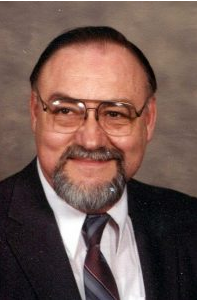 Wayne Henry Smida was born November 28, 1936 in Fremont, NE. He received a degree in Psychology from the University of Nebraska. He served in the United States Army for two years. Smida worked as a social worker in Carney, NE before moving to Langdon, ND. He then relocated to Illinois where he worked as a typewriter repair technician for IBM. He enjoyed music and played the piano, harmonica, guitar and ukulele and sang in a choral group. His other interest was his Studebaker and collecting Studebaker mementos. He was a member of Hugo’s Companions, serving as their Most Wicked Companion in 1978, and The Hounds of the Baskerville (sic). After he retired he moved to Danube MN where he belonged to St. Matthew’s Evangelical Lutheran Church. Smida died in Danube MN on November 1, 2017.
Wayne Henry Smida was born November 28, 1936 in Fremont, NE. He received a degree in Psychology from the University of Nebraska. He served in the United States Army for two years. Smida worked as a social worker in Carney, NE before moving to Langdon, ND. He then relocated to Illinois where he worked as a typewriter repair technician for IBM. He enjoyed music and played the piano, harmonica, guitar and ukulele and sang in a choral group. His other interest was his Studebaker and collecting Studebaker mementos. He was a member of Hugo’s Companions, serving as their Most Wicked Companion in 1978, and The Hounds of the Baskerville (sic). After he retired he moved to Danube MN where he belonged to St. Matthew’s Evangelical Lutheran Church. Smida died in Danube MN on November 1, 2017.
♦
♦
♦
Edgar W. Smith
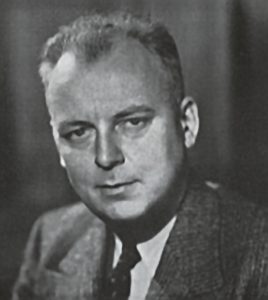
Edgar W. Smith was born April 1st, 1894, in Bethel, CT but raised mainly in Brooklyn N.Y. After high school he worked for the Brooklyn Daily Eagle and then as a clerk at the J. P. Morgan Co. in Manhattan, while taking evening courses at New York University’s School of Commerce. When America entered World War I in 1917, he enlisted in the Army, was selected for officer training, and served at the War Department, Washington, D.C., and in Paris. He came home in 1919 a discharged captain with a French wife, and went to work for the new General Motors Export Company headquartered in Manhattan, where he rose to be a vice president of General Motors Overseas Operations. Autodidact and a great reader from boyhood, his love for Sherlock Holmes was reawakened in 1936 when his wife gave him a copy of Vincent Starrett’s The Private Life of Sherlock Holmes. Smith wrote its author an enthusiastic thousand-word letter that October. He did not hear back until August 1937, when Starrett returned home from two years in the Far East, but the two men then commenced an active correspondence lasting more than two decades. In January 1940 Smith prodded Christopher Morley’s Baker Street Irregulars back to life with its first annual dinner in four years, and became its Buttons-cum-Commissionaire henceforth (and from 1946 on, the Baker Street Journal’s editor). While Smith annually implored Starrett to come to New York for the BSI’s annual dinners, Starrett was not in a financial position to do so; but the two men did meet in person in 1941 when Smith came to Chicago on business, staying at the Blackstone Hotel the nights of October 16 and 17, and arranging to get together with Starrett at last. Their Sherlockian mutual-admiration society reached a new level on December 6, 1944, when Smith sent Starrett the first Baker Street Irregular certificate of membership, with the investiture of A Study in Scarlet, just as Starrett was sending Smith a certificate of membership in The Hounds. The two men went on this way for many years, contributing to each other’s Sherlockian endeavors in scores of ways, and providing each other with counsel and encouragement. Smith retired from GM in 1954, and continued to run the BSI and edit the BSJ until his unexpected and widely mourned death at home, in Morristown, N.J., on September 17, 1960.
Biographical information provided courtesy of Jon Lellenberg.
♦
Lawrence (Larry) Solomon
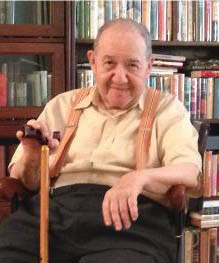 Lawrence Marvin Solomon MD was born June 1,1931 in Montreal, Quebec, Canada. He attended medical school at the University of Geneva, Switzerland and served his residency at the University of Pennsylvania. Solomon spoke English, Yiddish, French and some Dutch, which he learned from his wife. His medical specialty was pediatric dermatology. He was admitted for lawful residence in the US in August 1966, and from 1974 until his retirement in 1995, he was Chair and Professor of the Dermatology Department at the University of Illinois Medical Center. He was known as an excellent teacher and diagnostician; “his analysis of epidermal nevus syndrome earned it the eponym Solomon’s syndrome.”(Tom Joyce, The Caxtonian) He oversaw the expansion of the dermatology residency program as well as “authored and co-authored numerous articles, 22 book chapters, and 8 textbooks. Particularly noted is the textbook entitled Neonatal Dermatology…In addition, Dr. Solomon served on the editorial boards for the International Journal of Dermatology (1975-1977), The Journal of Investigative Dermatology (1977-1983), and Pediatric Dermatology (1983-2001). Dr. Solomon also served as president of the Chicago Dermatological Society.” (University of Illinois College of Medicine) Solomon was a frequent lecturer and traveled throughout the world, which gave him the opportunity to buy more books. He was a renowned book collector, focusing on Edgar Allan Poe, Rex Stout, Dashiell Hammett, and Raymond Chandler; his fondness for A. Conan Doyle led him to meet Adrian Conan Doyle while a student in Geneva. His collection included many first editions. Solomon died on October 8, 2014 in Chicago, IL.
Lawrence Marvin Solomon MD was born June 1,1931 in Montreal, Quebec, Canada. He attended medical school at the University of Geneva, Switzerland and served his residency at the University of Pennsylvania. Solomon spoke English, Yiddish, French and some Dutch, which he learned from his wife. His medical specialty was pediatric dermatology. He was admitted for lawful residence in the US in August 1966, and from 1974 until his retirement in 1995, he was Chair and Professor of the Dermatology Department at the University of Illinois Medical Center. He was known as an excellent teacher and diagnostician; “his analysis of epidermal nevus syndrome earned it the eponym Solomon’s syndrome.”(Tom Joyce, The Caxtonian) He oversaw the expansion of the dermatology residency program as well as “authored and co-authored numerous articles, 22 book chapters, and 8 textbooks. Particularly noted is the textbook entitled Neonatal Dermatology…In addition, Dr. Solomon served on the editorial boards for the International Journal of Dermatology (1975-1977), The Journal of Investigative Dermatology (1977-1983), and Pediatric Dermatology (1983-2001). Dr. Solomon also served as president of the Chicago Dermatological Society.” (University of Illinois College of Medicine) Solomon was a frequent lecturer and traveled throughout the world, which gave him the opportunity to buy more books. He was a renowned book collector, focusing on Edgar Allan Poe, Rex Stout, Dashiell Hammett, and Raymond Chandler; his fondness for A. Conan Doyle led him to meet Adrian Conan Doyle while a student in Geneva. His collection included many first editions. Solomon died on October 8, 2014 in Chicago, IL.
Biographical information provided courtesy of Julie McKuras.
♦
David Spadafora
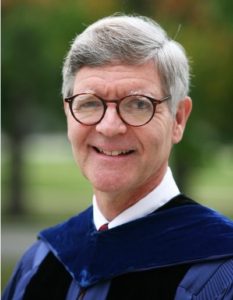 David Spadafora was born in Hamilton, OH. He received his B.A. in History from Williams College in 1972. He taught history at Bard College 1977-1978 and at the University of Connecticut’s West Hartford campus 1978-1980 before receiving his Ph.D. from Yale University in 1981. At Yale, he was a residential college dean and lecturer in the History Department 1982-85 and associate dean of the graduate school 1985-90. In 1990 he began a three year term as Dean of Faculty at Lake Forest College when he took the position of President of the College, a post he held until 2001, and he was Professor of History until 2006. In October 2005 he assumed the presidency of the Newberry Library. Spadafora is the recipient of the Legion d’Honneur in recognition of the Newberry’s work on French history and culture, and in 2014 received the Bicentennial Medal from Williams College. His book The Idea of Progress in Eighteenth-Century Britain was published in 1990. He has also served on the Digital Public Library of America Steering Committee. Spadafora, working with fellow Hound Karen Skubish, established the Conan Doyle Symposia at the Newberry Library.
David Spadafora was born in Hamilton, OH. He received his B.A. in History from Williams College in 1972. He taught history at Bard College 1977-1978 and at the University of Connecticut’s West Hartford campus 1978-1980 before receiving his Ph.D. from Yale University in 1981. At Yale, he was a residential college dean and lecturer in the History Department 1982-85 and associate dean of the graduate school 1985-90. In 1990 he began a three year term as Dean of Faculty at Lake Forest College when he took the position of President of the College, a post he held until 2001, and he was Professor of History until 2006. In October 2005 he assumed the presidency of the Newberry Library. Spadafora is the recipient of the Legion d’Honneur in recognition of the Newberry’s work on French history and culture, and in 2014 received the Bicentennial Medal from Williams College. His book The Idea of Progress in Eighteenth-Century Britain was published in 1990. He has also served on the Digital Public Library of America Steering Committee. Spadafora, working with fellow Hound Karen Skubish, established the Conan Doyle Symposia at the Newberry Library.
♦
Vincent Starrett
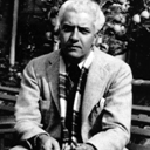 Vincent Starrett (October 26, 1886 – January 5, 1974) was a poet, newspaper reporter, mystery writer, columnist, bibliographer and self styled DOFAB or Damned Old Fool About Books. Born in Toronto, he lived most of his life in Chicago and was a fixture in the city’s used and rare bookshops for seven decades. Among his passions was Sherlock Holmes. Starrett’s contributions to our literature have become cornerstone works: “The Adventure of the Unique Hamlet,” The Private Life of Sherlock Holmes and the bittersweet sonnet, “221B.” The Private Life of Sherlock Holmes (published in 1933) solidified Starrett’s status as an expert in the life and times of the Baker Street sleuth. The book also caught the attention of Christopher Morley, who invited Starrett to the first formal dinner of the Baker Street Irregulars. Although obligations in Chicago would prevent Starrett from returning to New York, he and Morley remained lifelong friends, much like Sherlock and Watson. In 1944, he received the investiture of “A Study in Scarlet” from The Baker Street Irregulars. As for the Hounds, Starrett’s pivotal role is detailed elsewhere. To this day, Sherlockian societies pay tribute to Starrett’s love of Holmes by reciting his famous sonnet. Let the last words be Starrett’s:
Vincent Starrett (October 26, 1886 – January 5, 1974) was a poet, newspaper reporter, mystery writer, columnist, bibliographer and self styled DOFAB or Damned Old Fool About Books. Born in Toronto, he lived most of his life in Chicago and was a fixture in the city’s used and rare bookshops for seven decades. Among his passions was Sherlock Holmes. Starrett’s contributions to our literature have become cornerstone works: “The Adventure of the Unique Hamlet,” The Private Life of Sherlock Holmes and the bittersweet sonnet, “221B.” The Private Life of Sherlock Holmes (published in 1933) solidified Starrett’s status as an expert in the life and times of the Baker Street sleuth. The book also caught the attention of Christopher Morley, who invited Starrett to the first formal dinner of the Baker Street Irregulars. Although obligations in Chicago would prevent Starrett from returning to New York, he and Morley remained lifelong friends, much like Sherlock and Watson. In 1944, he received the investiture of “A Study in Scarlet” from The Baker Street Irregulars. As for the Hounds, Starrett’s pivotal role is detailed elsewhere. To this day, Sherlockian societies pay tribute to Starrett’s love of Holmes by reciting his famous sonnet. Let the last words be Starrett’s:
221B
Here dwell together still two men of note
Who never lived and so can never die:
How very near they seem, yet how remote
That age before the world went all awry.
But still the game’s afoot for those with ears
Attuned to catch the distant view-halloo:
England is England yet, for all our fears—
Only those things the heart believes are true.
A yellow fog swirls past the window-pane
As night descends upon this fabled street:
A lonely hansom splashes through the rain,
The ghostly gas lamps fail at twenty feet.
Here, though the world explode, these two survive,
And it is always eighteen ninety-five.
Biographical information provided courtesy of Raymond Betzner.
♦
Daniel Stashower
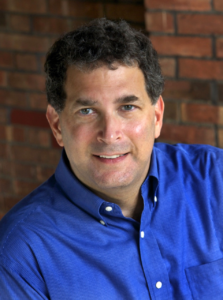
Daniel Stashower, with a B.A. from Northwestern University and an M.F.A. from Columbia University, is a professional writer in Washington D.C. His first book in 1985, The Adventure of the Ectoplasmic Man, a Sherlock Holmes pastiche involving Harry Houdini, remains in print today. (Dan is an amateur magician, a member of the Society of American Magicians, and author of three mystery novels with Houdini as sleuth, a record having something to do with the choice of “Thurston” for his Baker Street Irregular investiture in 2001.) Following several years in England as the Raymond Chandler Fulbright Fellow, he wrote Teller of Tales: The Life of Arthur Conan Doyle, and later co-edited (with fellow Hound Jon Lellenberg) three more books about Sherlock Holmes’ creator, Arthur Conan Doyle: A Life in Letters, “Dangerous Work”: Diary of an Arctic Adventure, and Conan Doyle’s previously unpublished first novel, The Narrative of John Smith. Dan’s non-Sherlockian books include The Hour of Peril: The Secret Plot to Murder Lincoln Before the Civil War, The Beautiful Cigar Girl: Mary Rogers, Edgar Allan Poe and the Invention of Murder, and The Boy Genius and the Mogul: The Untold Story of Television. For his work, Dan has received three Edgar Awards from Mystery Writers of America along with Agatha, Anthony, and Macavity awards.
♦
David Stevens
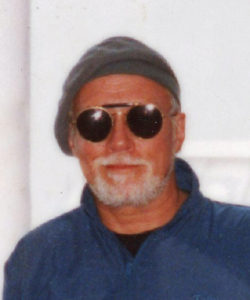 David Clark Stevens was born August 8, 1938 in LaGrange Park Ill, where he also grew up. He was equal parts adventurer, writer, journalist, collector of rare antiquities, raconteur, and a man about town and the world. He joined the Marine Corps Reserve in 1956 and served six years. His college years began at Baylor University before moving to Syracuse University where he graduated in 1959. Following graduation, he took a ten month trip around the world on board cargo freighters. Dave’s entry into the world of so-called men’s magazines was in 1962 when he landed a job as staff writer at Evanston based Rogue Magazine. In November 1966 he was hired by Playboy Magazine where he became senior editor of the Modern Living section, a job which allowed him to travel all around the globe when the term “exotic location” meant just that: Timbuktu, Penang, Madeleine Islands, the salt mines of Bilma in West Africa and other stops off the beaten path and to indulge his “love of cars, travel, food, wine, spirits, [and] books” (Chicago Tribune, August 4, 2019). He was known for writing about his adventures, which included “driving across the Sahara, traveling to the North Pole, drifting down the Amazon, visiting the castles of Scotland, causing trouble in Paris, flying down the bobsled run at Lake Placid, and riding a snow mobile down the Baja Peninsula.” (Ibid.) I became friends with Dave in 1985, learning that he lived a few blocks from where I grew up in Evanston, IL. We had a common interest in Playboy: him through his job and me through an in-law relation, Victor Lownes, who was CEO of Playboy Clubs around the world. We also had a common interest in the Sherlock Holmes Canon. A gracious host, I spent many a night with Dave in spirited conversation and drinks in his home library looking over the works of Doyle, Kipling, Hemingway, and others while discussing his passion for collections – principally Citroens and Morgans – his three English mastiffs and the time he had lunch with Prince Andrew at Skibo Castle before test driving the new 2003 Land Rover. Dave recounted in the August, 1965 issue of Rogue that: “I first discovered Sherlock Holmes at age ten when some wise relative slipped me a paperback copy of The Hound of the Baskervilles…When the yellow fog hung thick bout 221 B Baker Street, Holmes and Watson were already up and gone, their Hansom cab creaking and swaying over the cobblestones-and huddled on the sofa, knees under my chin, I was with them.” Dave became a member of Hugo’s Companions in 1968 and was instrumental in helping me put together Hugo’s Companions (D.J. Terras, Windy City Press, 1999). Dave ascended to the ranks of the Hounds in 1971. Dave retired from his position as Senior Editor, Modern Living for Playboy in 2004. He was a member of The Wine and Food Society, the Adventurers Club, Hugo’s Companions, the Cliff Dwellers, the Sherlock Holmes Society of London, the US Lighthouse Society, and the Chicago Press Club. David died on July 31, 2019.
David Clark Stevens was born August 8, 1938 in LaGrange Park Ill, where he also grew up. He was equal parts adventurer, writer, journalist, collector of rare antiquities, raconteur, and a man about town and the world. He joined the Marine Corps Reserve in 1956 and served six years. His college years began at Baylor University before moving to Syracuse University where he graduated in 1959. Following graduation, he took a ten month trip around the world on board cargo freighters. Dave’s entry into the world of so-called men’s magazines was in 1962 when he landed a job as staff writer at Evanston based Rogue Magazine. In November 1966 he was hired by Playboy Magazine where he became senior editor of the Modern Living section, a job which allowed him to travel all around the globe when the term “exotic location” meant just that: Timbuktu, Penang, Madeleine Islands, the salt mines of Bilma in West Africa and other stops off the beaten path and to indulge his “love of cars, travel, food, wine, spirits, [and] books” (Chicago Tribune, August 4, 2019). He was known for writing about his adventures, which included “driving across the Sahara, traveling to the North Pole, drifting down the Amazon, visiting the castles of Scotland, causing trouble in Paris, flying down the bobsled run at Lake Placid, and riding a snow mobile down the Baja Peninsula.” (Ibid.) I became friends with Dave in 1985, learning that he lived a few blocks from where I grew up in Evanston, IL. We had a common interest in Playboy: him through his job and me through an in-law relation, Victor Lownes, who was CEO of Playboy Clubs around the world. We also had a common interest in the Sherlock Holmes Canon. A gracious host, I spent many a night with Dave in spirited conversation and drinks in his home library looking over the works of Doyle, Kipling, Hemingway, and others while discussing his passion for collections – principally Citroens and Morgans – his three English mastiffs and the time he had lunch with Prince Andrew at Skibo Castle before test driving the new 2003 Land Rover. Dave recounted in the August, 1965 issue of Rogue that: “I first discovered Sherlock Holmes at age ten when some wise relative slipped me a paperback copy of The Hound of the Baskervilles…When the yellow fog hung thick bout 221 B Baker Street, Holmes and Watson were already up and gone, their Hansom cab creaking and swaying over the cobblestones-and huddled on the sofa, knees under my chin, I was with them.” Dave became a member of Hugo’s Companions in 1968 and was instrumental in helping me put together Hugo’s Companions (D.J. Terras, Windy City Press, 1999). Dave ascended to the ranks of the Hounds in 1971. Dave retired from his position as Senior Editor, Modern Living for Playboy in 2004. He was a member of The Wine and Food Society, the Adventurers Club, Hugo’s Companions, the Cliff Dwellers, the Sherlock Holmes Society of London, the US Lighthouse Society, and the Chicago Press Club. David died on July 31, 2019.
Submitted by Donald J. Terras, Master of the Hounds
♦
Regina Stinson
 During the summer of Regina’s 12th year, she happened upon a series of movies starring Basil Rathbone and Nigel Bruce. Instantly smitten by the character, Sherlock Holmes, Regina hungered for more. Her older brother handed her a paperback collection of a small selection of the short stories, telling her that the “real” Sherlock Holmes lived in an earlier time before cars and airplanes. Regina’s affection for the detective grew from there. Eventually, she bought herself the Doubleday Complete and began reading all the stories. In 1988, after looking for a local scion and finding no active ones, Regina began her own, which the founding members agreed would be called “The Ribston-Pippins”. They celebrate their 30th year in 2018.
During the summer of Regina’s 12th year, she happened upon a series of movies starring Basil Rathbone and Nigel Bruce. Instantly smitten by the character, Sherlock Holmes, Regina hungered for more. Her older brother handed her a paperback collection of a small selection of the short stories, telling her that the “real” Sherlock Holmes lived in an earlier time before cars and airplanes. Regina’s affection for the detective grew from there. Eventually, she bought herself the Doubleday Complete and began reading all the stories. In 1988, after looking for a local scion and finding no active ones, Regina began her own, which the founding members agreed would be called “The Ribston-Pippins”. They celebrate their 30th year in 2018.
In 2006, Regina was honored by the Baker Street Irregulars with the investiture of “A Little Ribston-Pippin” and in 2012 with the Adventuresses of Sherlock Holmes investiture of “Violet Smith”. She has further endeavored to keep the master’s memory green with numerous presentations at libraries, museums and civic centers. In 2017, Regina was delightfully surprised to receive a certificate of membership in the Hounds of the Baskerville (sic).
♦
Gunnar Sundin

Fenger High School Yearbook
Gunnar Ernest Sundin, Jr. was born June 29, 1940 in Chicago IL. He graduated from Chicago’s south side Fenger High School in 1958 and according to his high school yearbook, was headed to the University of Chicago on a Pullman Scholarship. Tom Joyce wrote Sundin’s “Stand Upon the Terrace” and indicated that Sundin was a high school child psychologist who “accumulated a sizeable collection of Sherlockiana and was a member of both Hugo’s Companions and The Criterion Bar Association,” serving as president of the latter group. He also founded the scion society The Rascally Lascars. The March 1985 Baker Street Journal carried a notice that Sundin was slated to be on the faculty of the upcoming John Bennett Shaw workshop in Hoboken NJ. He also spoke at the 1985 Sub-Librarians meeting held at the Newberry Library and that same year self-published his Sherlock’s London Today: A Walking Tour of the London of Sherlock Holmes. Sundin died in Des Plaines, IL on June 12, 1989.
Biographical information provided courtesy of Julie McKuras.
♦
♦
Richard Sveum
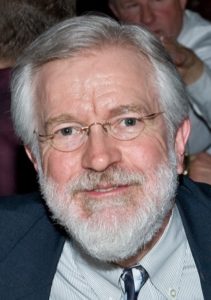 Richard J. Sveum, MD, BSI (“Dr. Hill Barton”, 2002) lives in Golden Valley, Minnesota. Since 1986 he has been a member of The Norwegian Explorers of Minnesota, also serving on the board and helping to plan their triannual conferences. He is President of The Friends of the Sherlock Holmes Collections at the University of Minnesota and contributes a quarterly column, “From the President” as well as other articles that appear in its newsletter. He is a member of several scion societies and given many talks and toasts in the U.S. and Canada. A 1975 graduate of St. Olaf College he attended the University of Minnesota Medical School and did post-graduate training at the University of Wisconsin and the National Institutes of Health. Since 1986 he has been in practice at the Park Nicollet Clinic specializing in Asthma, Allergy and Immunology and is a Clinical Professor of Medicine and Pediatrics at the University of Minnesota.
Richard J. Sveum, MD, BSI (“Dr. Hill Barton”, 2002) lives in Golden Valley, Minnesota. Since 1986 he has been a member of The Norwegian Explorers of Minnesota, also serving on the board and helping to plan their triannual conferences. He is President of The Friends of the Sherlock Holmes Collections at the University of Minnesota and contributes a quarterly column, “From the President” as well as other articles that appear in its newsletter. He is a member of several scion societies and given many talks and toasts in the U.S. and Canada. A 1975 graduate of St. Olaf College he attended the University of Minnesota Medical School and did post-graduate training at the University of Wisconsin and the National Institutes of Health. Since 1986 he has been in practice at the Park Nicollet Clinic specializing in Asthma, Allergy and Immunology and is a Clinical Professor of Medicine and Pediatrics at the University of Minnesota.
♦
♦
Donald J. Terras, Master of the Hounds, 2005-2020
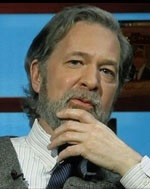
Don Terras, BSI, (…The Lighthouse…) succeeded Robert J. Mangler as Master of The Hounds of the Baskerville (sic) and served in that capacity from 2005 to 2020. He is co-author with the late John Nieminski of The Hounds of the Baskerville(sic) (Baskerville Press, 2017) a 75th anniversary edition of the history of the Hounds. Prior to his appointment with the Hounds, he served in a number of officer positions with Chicago’s Hugo’s Companions scion and was elected president (Sir Hugo) of the group in 1998 and 1999. Don organized the Companion’s 50th anniversary celebration and was project coordinator and contributing editor of Hugo’s Companions: Fifty Years of a Sherlockian Society (Windy City Press 1999). In 2001, Don served as Stamford (president) of The Criterion Bar Association scion, and in 2003 was chairman of “A Doyle Family Dinner ” commemorating the establishment of The Kittle Collection of Doyleana at Chicago’s Newberry Library. For this event Don raised funds, coordinated production, and was contributing editor for Sir Arthur Conan Doyle and Sherlock Holmes: Essays and Art on the Doctor and The Detective (Northeastern Illinois University Press, 2003). He was inducted into the The Baker Street Irregulars in 2005 and helped set the foundation for their oral history archive housed at Indiana University. An anthropologist by training, Don retired early as Senior Lecturer in anthropology after 24 years at Northeastern Illinois University receiving two faculty achievement awards during his tenure there. A guest curator for two special exhibits at the John G. Shedd Aquarium in Chicago, Don’s main body of work in museum studies and maritime heritage can be viewed in context with over thirty-seven years as Director of Grosse Point Lighthouse National Landmark in Evanston, IL. He received a Lifetime Achievement Award in 2014 from the City of Evanston for his work there. In addition to his Sherlockian publications, he is author of Grosse Point Lighthouse: Landmark to Maritime History and Culture (Windy City Press, 1997) and Lighthouses of Chicago Harbor: Their History Architecture and Lore (Windy City Press, 2007). See also under the History section.
♦
Gary Thaden
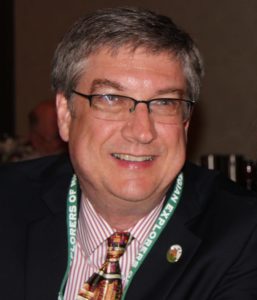 On rainy summer afternoons following my eleventh birthday, I watched Mel Jass, the host of “Mel’s Matinee Movie,” on Minneapolis/St. Paul’s WTCN channel 11 independent TV station. He played old movies including the Rathbone/Bruce Sherlock Holmes movies. I was hooked. A few years later I read Baring-Gould’s Annotated Sherlock Holmes from beginning to end and discovered that there was a magazine about Sherlock Holmes. I wrote to Julian Wolff and received a post card reply that the Fordham Press published The Baker Street Journal and I should inquire there about subscribing. Then life became busy with high school, girls, college at the University of Minnesota and the William Mitchell College of Law. In the local newspaper, I saw an article about a Sherlock Holmes conference at the University of Minnesota. Somehow this recently graduated unemployed attorney convinced his wife that he needed to spend their money on this conference. As far as she knew, Sherlock Holmes was a subject that I had heretofore expressed no interest in, nor could I explain the driving need to go. In September 1984, I attended “The Adventures of Sherlock Holmes in Minnesota.” I still remember being fascinated by Michael Harrison and his factual writing on the Victorian era. Shortly after the conference I joined the Norwegian Explorers. In 2002, I penned an article in the Norwegian Explorers first Christmas Annual titled “Watson’s Books.” I increased my involvement in the Explorers, including serving on the conference committee in 2001, 2004, 2007, and as Conference Co-Chair in 2010, 2013 and 2016. I was honored by the Norwegian Explorers membership to follow Julie McKuras as President in 2007 and have served in that capacity ever since. My other memberships include The Sherlock Holmes Society of London and The Bootmakers of Toronto. I am presently the government affairs director for two construction trade associations.
On rainy summer afternoons following my eleventh birthday, I watched Mel Jass, the host of “Mel’s Matinee Movie,” on Minneapolis/St. Paul’s WTCN channel 11 independent TV station. He played old movies including the Rathbone/Bruce Sherlock Holmes movies. I was hooked. A few years later I read Baring-Gould’s Annotated Sherlock Holmes from beginning to end and discovered that there was a magazine about Sherlock Holmes. I wrote to Julian Wolff and received a post card reply that the Fordham Press published The Baker Street Journal and I should inquire there about subscribing. Then life became busy with high school, girls, college at the University of Minnesota and the William Mitchell College of Law. In the local newspaper, I saw an article about a Sherlock Holmes conference at the University of Minnesota. Somehow this recently graduated unemployed attorney convinced his wife that he needed to spend their money on this conference. As far as she knew, Sherlock Holmes was a subject that I had heretofore expressed no interest in, nor could I explain the driving need to go. In September 1984, I attended “The Adventures of Sherlock Holmes in Minnesota.” I still remember being fascinated by Michael Harrison and his factual writing on the Victorian era. Shortly after the conference I joined the Norwegian Explorers. In 2002, I penned an article in the Norwegian Explorers first Christmas Annual titled “Watson’s Books.” I increased my involvement in the Explorers, including serving on the conference committee in 2001, 2004, 2007, and as Conference Co-Chair in 2010, 2013 and 2016. I was honored by the Norwegian Explorers membership to follow Julie McKuras as President in 2007 and have served in that capacity ever since. My other memberships include The Sherlock Holmes Society of London and The Bootmakers of Toronto. I am presently the government affairs director for two construction trade associations.
♦
Thomas Tiernan
 Thomas J. Tiernan was born in Illinois on July 2, 1907 of Irish immigrant parents. The Federal Census records of 1930 and 1940 indicate that he worked in advertising and then as a salesman for wholesale books. He served in the US Army from September 1943 through December 1945. Tiernan died in Mt. Prospect, IL on December 11, 1979.
Thomas J. Tiernan was born in Illinois on July 2, 1907 of Irish immigrant parents. The Federal Census records of 1930 and 1940 indicate that he worked in advertising and then as a salesman for wholesale books. He served in the US Army from September 1943 through December 1945. Tiernan died in Mt. Prospect, IL on December 11, 1979.
Biographical information provided courtesy of Julie McKuras.
♦
♦
Herbert Tinning
Her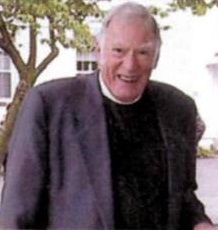 bert Peter Tinning was born April 17, 1928 in Hoboken NJ, the child of Danish immigrants. He served in the U.S. Army in 1946. Tinning graduated with a mechanical engineering degree from Stevens Institute of Technology in 1952 and worked as a test engineer and assistant editor for the Good Housekeeping Institute. He worked in what the Chicago Herald described as “national organization work” with the American Society of Heating, Air Conditioning and Refrigerating Engineers and then the Association of Home Appliance Manufacturers in Chicago until 1969, before being named Manager, Socio-Economic Program of the National Association of Accountants in 1974. He completed studies at Seabury-Western Theological Seminary and was ordained an Episcopal Vocational Deacon in Chicago that same year. Tinning was active with Sherlockian societies and received the investiture of””Dr. Leon Sterndale” in The Baker Street Irregulars in 1974. His article “The Game is Sometimes Afoot” appeared in the September 1976 Baker Street Journal and he was active with The Hounds and Hugo’s Companions in Chicago, and The Devil’s Foot Society in New Jersey. His book The singular exploits of John H. Watson, M.D. in the Antarctic regions, 1892-1893 appeared in 1982 and he served on the faculty for John Bennett Shaw’s workshop in 1985. He was active in many Sherlock events. Tinning returned to New Jersey and was involved with St. Stephen’s Church in Millburn, working with the sick and with social justice ministries. He retired in 1996 after a long career in engineering and was appointed St. Stephen’s Cemetery superintendent and oversaw the church’s annual Blessing of the Animals. While returning from a visit to his family in Arizona, he died in Fort Wayne, IN on November 15, 2010.
bert Peter Tinning was born April 17, 1928 in Hoboken NJ, the child of Danish immigrants. He served in the U.S. Army in 1946. Tinning graduated with a mechanical engineering degree from Stevens Institute of Technology in 1952 and worked as a test engineer and assistant editor for the Good Housekeeping Institute. He worked in what the Chicago Herald described as “national organization work” with the American Society of Heating, Air Conditioning and Refrigerating Engineers and then the Association of Home Appliance Manufacturers in Chicago until 1969, before being named Manager, Socio-Economic Program of the National Association of Accountants in 1974. He completed studies at Seabury-Western Theological Seminary and was ordained an Episcopal Vocational Deacon in Chicago that same year. Tinning was active with Sherlockian societies and received the investiture of””Dr. Leon Sterndale” in The Baker Street Irregulars in 1974. His article “The Game is Sometimes Afoot” appeared in the September 1976 Baker Street Journal and he was active with The Hounds and Hugo’s Companions in Chicago, and The Devil’s Foot Society in New Jersey. His book The singular exploits of John H. Watson, M.D. in the Antarctic regions, 1892-1893 appeared in 1982 and he served on the faculty for John Bennett Shaw’s workshop in 1985. He was active in many Sherlock events. Tinning returned to New Jersey and was involved with St. Stephen’s Church in Millburn, working with the sick and with social justice ministries. He retired in 1996 after a long career in engineering and was appointed St. Stephen’s Cemetery superintendent and oversaw the church’s annual Blessing of the Animals. While returning from a visit to his family in Arizona, he died in Fort Wayne, IN on November 15, 2010.
Biographical information provided courtesy of Julie McKuras.
♦
John Valentine
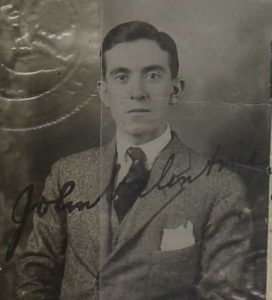 John Valentine was born February 22, 1895 in Chicago IL. He attended Williams College. Valentine served in the U.S. Army’s Ambulance Service in France during World War I and as American Vice-Consul in Naples, Italy after the war. He worked in the insurance industry upon his return to the United States. By 1948 he had relocated to Glendale CA and the city directory lists him as a bookseller. The April 1946 Baker Street Journal lists him as attending the January 1945 Hounds dinner. Upon his move to California he became a member of The Trained Cormorants of Los Angeles County and a report from their scion indicates their final meeting of 1952 was held at the Glendale bookshop of John Valentine, a “displaced Hound of the Baskerville of Chicago (sic) [and] is also a noted collector of Rooseveltania (F.D.) [and] displayed for our edification a copy of A Baker Street Folio, personally autographed by the author.” He edited The Franklin D. Roosevelt Collector periodical during that period and was called “the biggest dealer in Rooseveltania.” (The New Yorker) Valentine died on December 29, 1955 in Los Angeles CA. The Lilly Library holds the letters and papers of “John Valentine, 1895-1955, businessman, bookseller and book collector.”
John Valentine was born February 22, 1895 in Chicago IL. He attended Williams College. Valentine served in the U.S. Army’s Ambulance Service in France during World War I and as American Vice-Consul in Naples, Italy after the war. He worked in the insurance industry upon his return to the United States. By 1948 he had relocated to Glendale CA and the city directory lists him as a bookseller. The April 1946 Baker Street Journal lists him as attending the January 1945 Hounds dinner. Upon his move to California he became a member of The Trained Cormorants of Los Angeles County and a report from their scion indicates their final meeting of 1952 was held at the Glendale bookshop of John Valentine, a “displaced Hound of the Baskerville of Chicago (sic) [and] is also a noted collector of Rooseveltania (F.D.) [and] displayed for our edification a copy of A Baker Street Folio, personally autographed by the author.” He edited The Franklin D. Roosevelt Collector periodical during that period and was called “the biggest dealer in Rooseveltania.” (The New Yorker) Valentine died on December 29, 1955 in Los Angeles CA. The Lilly Library holds the letters and papers of “John Valentine, 1895-1955, businessman, bookseller and book collector.”
Biographical information provided courtesy of Julie McKuras.
♦
George Vanderburgh
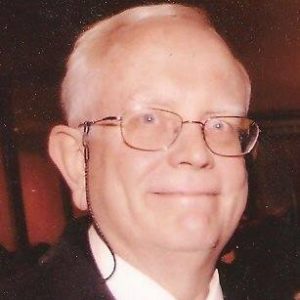 Major (Ret’d) George A. Vanderburgh, CD, MD, graduated from University of Toronto in 1971 and served in the Canadian Armed Forces in South Vietnam (1973) and Somalia & Kenya (1993). He worked as a family physician and coroner in Shelburne, Ontario from 1975- 2008. In his spare time, George is an apiarist, specializing in swarm retrieval, a coin and stamp collector, bibliophile and blogs irregularly at The Battered Box’s Weblog. George is affiliated with many scions, including The Bootmakers of Toronto (M.Bt.); The Sons of the Copper Beeches (Philadelphia, Master Copper Beech Smith); The Six Napoleons of Baltimore (XCCLX); The Speckled Band of Boston; Dr. Sterndale’s Lion Hunters (Nairobi, Kenya); The Retired Colonels (Major Vandeleur); The Mycroft Holmes Society (Syracuse); The Maiwand Jezails; and The Amateur Mendicant Society (Detroit). George was active in The August Derleth Society (Sauk City, Wisconsin, President 2002-2004); and is now extremely active in The Clients of Adrian Mulliner & The Pale Parobolites (A Canadian P. G. Wodehouse Society); The Praed Street Irregulars (The Viennese Musician, and The Lord Warden of the Pontine Marshes); and The Quaker Street Irregulars (Los Angeles, Lunar Pontoon). He served as editor at Arkham House Publishers (2009-2011) and Mycroft and Moran (1998–). Vanderburgh is also Director of The Leacock Associates (administers The Stephen Leacock Medal for Humour). George is the founder/proprietor of The Battered Silicon Dispatch Box since 1993. With over 700 titles, books and e-books, the Battered Silicon Dispatch Box has published several notable libraries, including The Vincent Starrett Memorial Library, The Michael Harrison Memorial Library; The R. Austin Freeman Library; The Sax Rohmer Library; The Seabury Quinn Library (Dr. Jules de Grandin – The Sherlock Holmes of the Supernatural); The Stephen Leacock Library; The G. K. Chesterton Library; The Pasquale Accardo Library; The David Hammer Library; and various Reference books including The Universal Sherlock Holmes (1994) by Ronald DeWaal and The ACD Bibliography (2016) by Green and Gibson.
Major (Ret’d) George A. Vanderburgh, CD, MD, graduated from University of Toronto in 1971 and served in the Canadian Armed Forces in South Vietnam (1973) and Somalia & Kenya (1993). He worked as a family physician and coroner in Shelburne, Ontario from 1975- 2008. In his spare time, George is an apiarist, specializing in swarm retrieval, a coin and stamp collector, bibliophile and blogs irregularly at The Battered Box’s Weblog. George is affiliated with many scions, including The Bootmakers of Toronto (M.Bt.); The Sons of the Copper Beeches (Philadelphia, Master Copper Beech Smith); The Six Napoleons of Baltimore (XCCLX); The Speckled Band of Boston; Dr. Sterndale’s Lion Hunters (Nairobi, Kenya); The Retired Colonels (Major Vandeleur); The Mycroft Holmes Society (Syracuse); The Maiwand Jezails; and The Amateur Mendicant Society (Detroit). George was active in The August Derleth Society (Sauk City, Wisconsin, President 2002-2004); and is now extremely active in The Clients of Adrian Mulliner & The Pale Parobolites (A Canadian P. G. Wodehouse Society); The Praed Street Irregulars (The Viennese Musician, and The Lord Warden of the Pontine Marshes); and The Quaker Street Irregulars (Los Angeles, Lunar Pontoon). He served as editor at Arkham House Publishers (2009-2011) and Mycroft and Moran (1998–). Vanderburgh is also Director of The Leacock Associates (administers The Stephen Leacock Medal for Humour). George is the founder/proprietor of The Battered Silicon Dispatch Box since 1993. With over 700 titles, books and e-books, the Battered Silicon Dispatch Box has published several notable libraries, including The Vincent Starrett Memorial Library, The Michael Harrison Memorial Library; The R. Austin Freeman Library; The Sax Rohmer Library; The Seabury Quinn Library (Dr. Jules de Grandin – The Sherlock Holmes of the Supernatural); The Stephen Leacock Library; The G. K. Chesterton Library; The Pasquale Accardo Library; The David Hammer Library; and various Reference books including The Universal Sherlock Holmes (1994) by Ronald DeWaal and The ACD Bibliography (2016) by Green and Gibson.
♦
Jerome B. Victory
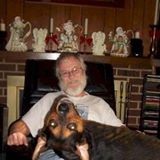 Jerome B. Victory was born on January 16, 1953 in the near south-side neighborhood of Bridgeport. He lived three long and two short blocks from Comiskey Park, the then home of the Chicago White Sox and three long, three short blocks from the original Mayor Richard J. Daly. His father worked nights so Jerry only spent time with his dad on weekends where they either watched the Sox on WGN or watched the varied mystery movies that ‘GN played on Sunday afternoons. Boston Blackie, Charlie Chan, Mr. Moto, and of course, Sherlock Holmes, the only non-alliterative name in the batch. His father’s love of mysteries was inherited by Jerry and he soon began a lifelong love of reading. Jerry’s introduction into Sherlockian Societies occurred in 1989 when he met antiquarian book dealer, Tom Joyce, at a seminar Tom was conducting at Scotland Yard Books in Winnetka, IL. During the Q&A Tom invited Jerry to attend a meeting of Hugo’s Companions. At that first meeting Jerry attended he met an extremely interesting group of people and told Tom he would be interested in joining. At the second meeting he was surprised to find himself in a rather heated election campaign over disagreements revolving around the clubs constitution. That meeting resulted in the ouster of the current Sir Hugo who was replaced by my new friend, Tom Joyce. That meeting resulted in some members resigning in protest and one of those was the editor of Hugo’s newsletter, The Grimpen Mire Gazette. After far too many Guinness’s Tom convinced Jerry to take over as editor, or Baskerville Herald, a position Jerry had no experience in at all, although he did own a personal computer. Jerry stayed in this job for most of the 1990’s serving under three Sir Hugo’s, Tom Joyce, Arnie Matanky and Wayne Siatt. Job location changes forced him to miss too many meetings which in turn forced him to resign as the Newsletters Herald. Although his memory is flaky Jerry believes he became a Hound in 1992. Other than the Sherlockian life Jerry worked for the IBM Corporation and AT&T for thirty-one years combined, which not only robbed him of his soul and nervous system but also taught him to totally distrust large corporations. He is currently married to his first wife, Terri and they have been living contentedly for thirty-five years with a varying number of rescued dogs.
Jerome B. Victory was born on January 16, 1953 in the near south-side neighborhood of Bridgeport. He lived three long and two short blocks from Comiskey Park, the then home of the Chicago White Sox and three long, three short blocks from the original Mayor Richard J. Daly. His father worked nights so Jerry only spent time with his dad on weekends where they either watched the Sox on WGN or watched the varied mystery movies that ‘GN played on Sunday afternoons. Boston Blackie, Charlie Chan, Mr. Moto, and of course, Sherlock Holmes, the only non-alliterative name in the batch. His father’s love of mysteries was inherited by Jerry and he soon began a lifelong love of reading. Jerry’s introduction into Sherlockian Societies occurred in 1989 when he met antiquarian book dealer, Tom Joyce, at a seminar Tom was conducting at Scotland Yard Books in Winnetka, IL. During the Q&A Tom invited Jerry to attend a meeting of Hugo’s Companions. At that first meeting Jerry attended he met an extremely interesting group of people and told Tom he would be interested in joining. At the second meeting he was surprised to find himself in a rather heated election campaign over disagreements revolving around the clubs constitution. That meeting resulted in the ouster of the current Sir Hugo who was replaced by my new friend, Tom Joyce. That meeting resulted in some members resigning in protest and one of those was the editor of Hugo’s newsletter, The Grimpen Mire Gazette. After far too many Guinness’s Tom convinced Jerry to take over as editor, or Baskerville Herald, a position Jerry had no experience in at all, although he did own a personal computer. Jerry stayed in this job for most of the 1990’s serving under three Sir Hugo’s, Tom Joyce, Arnie Matanky and Wayne Siatt. Job location changes forced him to miss too many meetings which in turn forced him to resign as the Newsletters Herald. Although his memory is flaky Jerry believes he became a Hound in 1992. Other than the Sherlockian life Jerry worked for the IBM Corporation and AT&T for thirty-one years combined, which not only robbed him of his soul and nervous system but also taught him to totally distrust large corporations. He is currently married to his first wife, Terri and they have been living contentedly for thirty-five years with a varying number of rescued dogs.
♦
Gerald Wachs
Gerald Newell  Wachs was born November 5, 1937 in Chicago IL. He attended the University of Illinois and the University of Illinois Medical School. He served his internship at Chicago’s Michael Reese Hospital and Medical Center and his residency at UCSF. Wachs spent 20 years at Schering, now Merck, where he served as a senior associate medical director. While there, he worked to obtain FDA approval for over 20 new medications. He then ran his own private dermatological and cosmetic surgery practice in Millburn and Summit NJ for 18 years. Wachs was past president of the New Jersey Dermatological Society, a member of the Millburn Board of Education for seven years and president of the Millburn Board of Health. Wachs began to collect 19th century first Edition English poetry in 1970. The Gerald N. Wachs Collection of Nineteenth-Century English Poetry grew to nearly 900 items and was displayed at the Grolier Club. An inveterate collector, he stated in one interview he stated that he collected “books, stamps, coins, art prints, tropical fish, baseball cards” and other items. He co-wrote the bibliography for playwright Tom Stoppard and the Wachs Collection of Tom Stoppard was promised to the University of Chicago library. He was a life master in bridge and loved baseball, collecting books about the game and belonging to the Elysian Fields Chapter in Northern New Jersey of Society for American Baseball Research (SABR). Wachs gave toasts at BSI dinners and was a member of Mrs. Hudson’s Cliffdwellers and The Sir James Saunders Society. He received the investiture of “Godfrey Emsworth” in 1995 from The Baker Street Irregulars and in 1998, assumed the investiture of “Sir James Saunders.” Wachs died November 8, 2013 in New York.
Wachs was born November 5, 1937 in Chicago IL. He attended the University of Illinois and the University of Illinois Medical School. He served his internship at Chicago’s Michael Reese Hospital and Medical Center and his residency at UCSF. Wachs spent 20 years at Schering, now Merck, where he served as a senior associate medical director. While there, he worked to obtain FDA approval for over 20 new medications. He then ran his own private dermatological and cosmetic surgery practice in Millburn and Summit NJ for 18 years. Wachs was past president of the New Jersey Dermatological Society, a member of the Millburn Board of Education for seven years and president of the Millburn Board of Health. Wachs began to collect 19th century first Edition English poetry in 1970. The Gerald N. Wachs Collection of Nineteenth-Century English Poetry grew to nearly 900 items and was displayed at the Grolier Club. An inveterate collector, he stated in one interview he stated that he collected “books, stamps, coins, art prints, tropical fish, baseball cards” and other items. He co-wrote the bibliography for playwright Tom Stoppard and the Wachs Collection of Tom Stoppard was promised to the University of Chicago library. He was a life master in bridge and loved baseball, collecting books about the game and belonging to the Elysian Fields Chapter in Northern New Jersey of Society for American Baseball Research (SABR). Wachs gave toasts at BSI dinners and was a member of Mrs. Hudson’s Cliffdwellers and The Sir James Saunders Society. He received the investiture of “Godfrey Emsworth” in 1995 from The Baker Street Irregulars and in 1998, assumed the investiture of “Sir James Saunders.” Wachs died November 8, 2013 in New York.
Biographical information provided courtesy of Julie McKuras.
♦
Janice Weiner
 Janice Weiner is a life-long resident of Chicago. She has two B. A. degrees in art (teaching and graphic design) and a Master’s in Instructional Media. She is a retired junior high librarian and spent almost her whole teaching career as a librarian for junior-high-age students. She thinks this made her susceptible to becoming interested in Sherlock Holmes and Richard III — two interests that have caused people to stare at her when she mentions them. She read her first Holmes story, a simplified for children SPEC, in an anthology she received for her tenth birthday. However, it wasn’t until much much later that she found herself a founding member of The Scotland Yarders. She was one of the early editors of the scion’s newsletter and took it over after some years. She has been the Commissioner of the scion for over a decade now and still edits the newsletter. During her tenure in The Scotland Yarders she joined The Criterion Bar Association, The Torists International S. S., The Hounds of the Baskerville (sic), and other societies. She has participated in other Sherlockian activities such as the CCC in Door County. In 2022, Janice received the investiture of “Scotland Yard” from The Baker Street Irregulars. She has to say that being a Sherlockian has been a very rewarding experience.
Janice Weiner is a life-long resident of Chicago. She has two B. A. degrees in art (teaching and graphic design) and a Master’s in Instructional Media. She is a retired junior high librarian and spent almost her whole teaching career as a librarian for junior-high-age students. She thinks this made her susceptible to becoming interested in Sherlock Holmes and Richard III — two interests that have caused people to stare at her when she mentions them. She read her first Holmes story, a simplified for children SPEC, in an anthology she received for her tenth birthday. However, it wasn’t until much much later that she found herself a founding member of The Scotland Yarders. She was one of the early editors of the scion’s newsletter and took it over after some years. She has been the Commissioner of the scion for over a decade now and still edits the newsletter. During her tenure in The Scotland Yarders she joined The Criterion Bar Association, The Torists International S. S., The Hounds of the Baskerville (sic), and other societies. She has participated in other Sherlockian activities such as the CCC in Door County. In 2022, Janice received the investiture of “Scotland Yard” from The Baker Street Irregulars. She has to say that being a Sherlockian has been a very rewarding experience.
♦
Michael Whelan
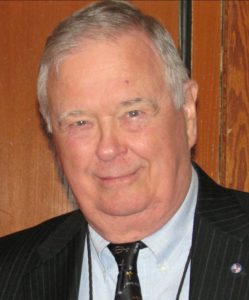 In 1950, Mike Whelan purchased The Complete Sherlock Holmes, Garden City edition with his caddy tips. Neither he nor his mother who had sparked his interest in Sherlock Holmes, had an inkling of where that particular purchase would lead him. That passion, thus ignited, has continued unabated for over 50 years. Mike was a member of Hugo’s Companions in the early to late 60’s. Sherlockian zeal, wrapped as close as an Inverness cape, has accompanied him from coast to coast and around the world. Whelan received the investiture of “Vincent Spaulding” in 1974 and served as “Wiggins,” or chairman, of The Baker Street Irregulars for 23 years. He was a retired business executive, married to Mary Ann Bradley [honoured as “The Woman” of The BSI (1993) and invested as “Mary Morstan” (2012)], with three sons and seven grandchildren. He previously served as the Board president of The Friends of the Lilly Library, having served on that board for nearly 15 years. He was a member of the Indianapolis Literary Club, as well as a proud member of numerous Sherlockian societies. Hugo’s Companions was his first introduction to a formal Sherlockian organization with its illustrious denizens. Mike passed away in Indianapolis in October 2021.
In 1950, Mike Whelan purchased The Complete Sherlock Holmes, Garden City edition with his caddy tips. Neither he nor his mother who had sparked his interest in Sherlock Holmes, had an inkling of where that particular purchase would lead him. That passion, thus ignited, has continued unabated for over 50 years. Mike was a member of Hugo’s Companions in the early to late 60’s. Sherlockian zeal, wrapped as close as an Inverness cape, has accompanied him from coast to coast and around the world. Whelan received the investiture of “Vincent Spaulding” in 1974 and served as “Wiggins,” or chairman, of The Baker Street Irregulars for 23 years. He was a retired business executive, married to Mary Ann Bradley [honoured as “The Woman” of The BSI (1993) and invested as “Mary Morstan” (2012)], with three sons and seven grandchildren. He previously served as the Board president of The Friends of the Lilly Library, having served on that board for nearly 15 years. He was a member of the Indianapolis Literary Club, as well as a proud member of numerous Sherlockian societies. Hugo’s Companions was his first introduction to a formal Sherlockian organization with its illustrious denizens. Mike passed away in Indianapolis in October 2021.
♦
William B. White
 William Braid White was born on August 24, 1878 in Haslemere, Surrey, England. He emigrated to the U.S.in 1896 and by the time he married in 1915, he listed his occupation as editor as he did when became a naturalized citizen of the U.S. in 1923. By 1930, the federal census listed his occupation as “engineer and research, acoustics” and by 1940 he was working as a self-employed music teacher in Chicago. White was the author of Piano Tuning and Allied Arts, Theory and Practice of Piano Construction, The Player Piano Up-To-Date, and other books relating to the piano. He attended the January 1945 Hounds dinner, according to April 1946 Baker Street Journal article which referred to him as the “musicologist.” White’s article “Sherlock Holmes and the Equal Temperment” was published in Vol. 1, Number 1 of the Baker Street Journal, where he signed himself as “Mus Doc.” He wrote “Dr. Watson and the Peerage” for the January 1947 Journal and later that year, the April 1947 issue refers to him in the “The Editor’s Common Place” as Dr. William Braid White. The “Whodunit” which appeared in the July 1947 issue lists him as “Mus. Doc., Fellow of the Acoustical Society of America, is President of the Pianoforte School of Technology, associated with the Chicago Musical College.” He contributed a number of articles to their publication The Journal of the Acoustical Society of America from 1929 through 1941. White died in Chicago IL in 1959.
William Braid White was born on August 24, 1878 in Haslemere, Surrey, England. He emigrated to the U.S.in 1896 and by the time he married in 1915, he listed his occupation as editor as he did when became a naturalized citizen of the U.S. in 1923. By 1930, the federal census listed his occupation as “engineer and research, acoustics” and by 1940 he was working as a self-employed music teacher in Chicago. White was the author of Piano Tuning and Allied Arts, Theory and Practice of Piano Construction, The Player Piano Up-To-Date, and other books relating to the piano. He attended the January 1945 Hounds dinner, according to April 1946 Baker Street Journal article which referred to him as the “musicologist.” White’s article “Sherlock Holmes and the Equal Temperment” was published in Vol. 1, Number 1 of the Baker Street Journal, where he signed himself as “Mus Doc.” He wrote “Dr. Watson and the Peerage” for the January 1947 Journal and later that year, the April 1947 issue refers to him in the “The Editor’s Common Place” as Dr. William Braid White. The “Whodunit” which appeared in the July 1947 issue lists him as “Mus. Doc., Fellow of the Acoustical Society of America, is President of the Pianoforte School of Technology, associated with the Chicago Musical College.” He contributed a number of articles to their publication The Journal of the Acoustical Society of America from 1929 through 1941. White died in Chicago IL in 1959.
Biographical information provided courtesy of Julie McKuras.
♦
Thomas Willshire
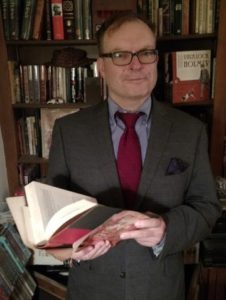 Tom Willshire was born May 2, 1960 in Milwaukee, WI. He encountered Sherlock Holmes first, like many of his generation, by viewing the Rathbone/Bruce films with his father and grandmother. To avert the approaching curse of adolescence, Frank Willshire presented his son the two-volume Doubleday edition of the Canon for his twelfth Christmas. While studying journalism at Marquette University he began working part-time in a bookstore, commencing a lifetime (so far) career in the book trade. While managing a bookshop in Chicago, he became active in local Scions, including Hugo’s Companions which met near his workplace at Binyon’s Restaurant (of fond memory). He was a co-founder and the first Commissioner, of the Scotland Yarders. Don Izban tapped him to help with the logistics on the first Canonical Convention and Caper. A 1990 professional move took him to New York to work in the corporate offices of Barnes & Noble and subsequent positions at Random House, HarperCollins, and Oxford University Press. Since 2011 he has been head of trade sales in the Americas for Cambridge University Press. Tom left organized Sherlockian activities for more than a decade to raise his young sons after the death his wife. His boys apparently fully grown, he became active again in the local Scions: the Epilogues of New Jersey and the Priory Scholars. His work for Cambridge takes him frequently to England where he prowls modern London seeking Sherlockian landmarks well aware that it is NOT “always 1895.” His most lasting Sherlockian achievement is in the raising of his older son, Henry, as a knowledgeable follower of the Great Detective in his own rite. With the good example of his own father before him, Tom began Henry’s education by presenting him with a (single volume) copy of the Doubleday edition, on his 12th Christmas.
Tom Willshire was born May 2, 1960 in Milwaukee, WI. He encountered Sherlock Holmes first, like many of his generation, by viewing the Rathbone/Bruce films with his father and grandmother. To avert the approaching curse of adolescence, Frank Willshire presented his son the two-volume Doubleday edition of the Canon for his twelfth Christmas. While studying journalism at Marquette University he began working part-time in a bookstore, commencing a lifetime (so far) career in the book trade. While managing a bookshop in Chicago, he became active in local Scions, including Hugo’s Companions which met near his workplace at Binyon’s Restaurant (of fond memory). He was a co-founder and the first Commissioner, of the Scotland Yarders. Don Izban tapped him to help with the logistics on the first Canonical Convention and Caper. A 1990 professional move took him to New York to work in the corporate offices of Barnes & Noble and subsequent positions at Random House, HarperCollins, and Oxford University Press. Since 2011 he has been head of trade sales in the Americas for Cambridge University Press. Tom left organized Sherlockian activities for more than a decade to raise his young sons after the death his wife. His boys apparently fully grown, he became active again in the local Scions: the Epilogues of New Jersey and the Priory Scholars. His work for Cambridge takes him frequently to England where he prowls modern London seeking Sherlockian landmarks well aware that it is NOT “always 1895.” His most lasting Sherlockian achievement is in the raising of his older son, Henry, as a knowledgeable follower of the Great Detective in his own rite. With the good example of his own father before him, Tom began Henry’s education by presenting him with a (single volume) copy of the Doubleday edition, on his 12th Christmas.
♦
John “Jack” Wilson
 John Norton Wilson was born on October 27, 1933 in Pekin Hospital in central Illinois. He spent his 37-year career as a mathematics teacher at various high schools in the Illinois public school system, most notably Amos Alonzo Stagg High School in Palos Hills, from which he finally retired. He was an avid solver of crossword puzzles, sudokus, and literally any kind of codes, brainteasers or word puzzles. This is probably why he became such an enthusiastic Sherlockian, since Holmes is also a brilliant problem solver!! I am not quite sure of the exact date when he was honored with becoming a “Hound”, but he had been one ever since I had first known him in 1992. He was also a member of Altamont’s Agents and Hugo’s Companions of which he was their treasurer for a few years. He was a constant student and dearly loved his books, airplanes and ME–his beloved wife of eleven years, whom he always referred to as “The Woman”. He was a very intelligent man who had an equally sharp wit, being quite unable to pass up the telling of a pun or a clever limerick! He died in Advocate Christ Hospital, in Oak Lawn, on September 10, 2010. Having been a proud Korean War veteran, his ashes are interred at Abraham Lincoln Military Cemetery in Elwood, Illinois, with the inscription reading on the vault…”It is always 1895″…a most important phrase to any die hard Sherlock Holmes enthusiast!
John Norton Wilson was born on October 27, 1933 in Pekin Hospital in central Illinois. He spent his 37-year career as a mathematics teacher at various high schools in the Illinois public school system, most notably Amos Alonzo Stagg High School in Palos Hills, from which he finally retired. He was an avid solver of crossword puzzles, sudokus, and literally any kind of codes, brainteasers or word puzzles. This is probably why he became such an enthusiastic Sherlockian, since Holmes is also a brilliant problem solver!! I am not quite sure of the exact date when he was honored with becoming a “Hound”, but he had been one ever since I had first known him in 1992. He was also a member of Altamont’s Agents and Hugo’s Companions of which he was their treasurer for a few years. He was a constant student and dearly loved his books, airplanes and ME–his beloved wife of eleven years, whom he always referred to as “The Woman”. He was a very intelligent man who had an equally sharp wit, being quite unable to pass up the telling of a pun or a clever limerick! He died in Advocate Christ Hospital, in Oak Lawn, on September 10, 2010. Having been a proud Korean War veteran, his ashes are interred at Abraham Lincoln Military Cemetery in Elwood, Illinois, with the inscription reading on the vault…”It is always 1895″…a most important phrase to any die hard Sherlock Holmes enthusiast!
Submitted with great love and sincerity by Mrs. April R. Wilson.
♦
Sewell Peaslee Wright
 Sewell Peaslee Wright was born in August 7, 1897 in Butler PA. He went to high school in Toledo and worked for the Toledo Blade according to his World War I draft card. He worked as a wireless operator in Portland ME before moving to Springfield IL where he initially worked in advertising before taking a position as a copy chief. The website Michael May’s Adventureblog states that Wright was a “ journalist, advertising writer, radio operator and Pulp writer who penned westerns, horror, mystery as well as Science Fiction.” Wright’s science fiction series were “the space patrol recollections of Captain John Hanson [which] read today like the adventures of Captain Kirk” (Michael May); the entire series were published in the magazine Astounding Stories. He wrote numerous short stories, sometimes using the pseudonym Tom Andrews.Wright attended the January 1945 Hounds dinner as reported in the Vol. 1, No.2 of the Baker Street Journal. He edited the book Chicago Murders which was published in 1945. Among the contributors were his fellow Hounds Vincent Starrett and Otto Eisenschiml. Wright died on March 31, 1970 in Saint Lucie FL.
Sewell Peaslee Wright was born in August 7, 1897 in Butler PA. He went to high school in Toledo and worked for the Toledo Blade according to his World War I draft card. He worked as a wireless operator in Portland ME before moving to Springfield IL where he initially worked in advertising before taking a position as a copy chief. The website Michael May’s Adventureblog states that Wright was a “ journalist, advertising writer, radio operator and Pulp writer who penned westerns, horror, mystery as well as Science Fiction.” Wright’s science fiction series were “the space patrol recollections of Captain John Hanson [which] read today like the adventures of Captain Kirk” (Michael May); the entire series were published in the magazine Astounding Stories. He wrote numerous short stories, sometimes using the pseudonym Tom Andrews.Wright attended the January 1945 Hounds dinner as reported in the Vol. 1, No.2 of the Baker Street Journal. He edited the book Chicago Murders which was published in 1945. Among the contributors were his fellow Hounds Vincent Starrett and Otto Eisenschiml. Wright died on March 31, 1970 in Saint Lucie FL.
Biographical information provided courtesy of Julie McKuras.
♦
♦
Walter Yust
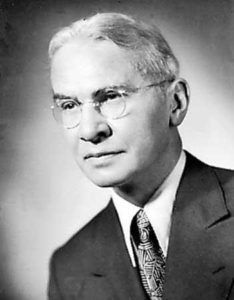 Walter M. Yust was born May 16, 1894 in Philadelphia, PA. After his graduation from the University of Pennsylvania in 1917, where he belonged to Phi Beta Kappa and served as managing editor of his college yearbook, he went to work for the Philadelphia Evening Ledger as a journalist. His career took him to newspapers in New Orleans as well as other cities. Yust became the literary editor of the Philadelphia Public Ledger in 1926 and three years later, his review of the 14th edition of the Encyclopedia Britannica brought him “to the attention of its president” (Encyclopedia Britannica) who hired him in late 1930 as advertising manager for the group. He was named associate editor two years later and in 1938 began his long tenure as editor in chief. Yust retired February 22, 1960, having served in that position “longer than any of his predecessors” (Encyclopedia Britannica) and planned to continue as an editorial consultant. He died February 29, 1960 in Evanston, IL, only one week after his retirement, and is buried in Graceland Cemetery.
Walter M. Yust was born May 16, 1894 in Philadelphia, PA. After his graduation from the University of Pennsylvania in 1917, where he belonged to Phi Beta Kappa and served as managing editor of his college yearbook, he went to work for the Philadelphia Evening Ledger as a journalist. His career took him to newspapers in New Orleans as well as other cities. Yust became the literary editor of the Philadelphia Public Ledger in 1926 and three years later, his review of the 14th edition of the Encyclopedia Britannica brought him “to the attention of its president” (Encyclopedia Britannica) who hired him in late 1930 as advertising manager for the group. He was named associate editor two years later and in 1938 began his long tenure as editor in chief. Yust retired February 22, 1960, having served in that position “longer than any of his predecessors” (Encyclopedia Britannica) and planned to continue as an editorial consultant. He died February 29, 1960 in Evanston, IL, only one week after his retirement, and is buried in Graceland Cemetery.
Biographical information provided courtesy of Julie McKuras.
♦
Philip Zaferopulos
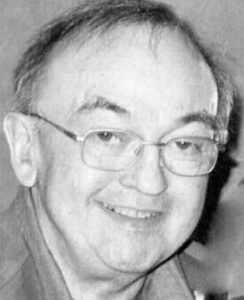 Philip Nick Zaferopulos was born March 9, 1937 in Chicago, IL. He received a Bachelor’s Degree in Philosophy from Ripon College. Zaferopulos worked for the Veterans Administration in Chicago, “overseeing the operation of federal programs in psychiatric hospitals throughout the Midwest.” (Chicago Tribune) He transferred to Washington DC and continued working with the VA but returned to the Chicago area, to St. Charles, and soon joined the Emergency Preparedness Department, now known as FEMA. He coordinated many emergency response teams, and operated with such events as the 1989 San Francisco earthquake, Hurricane Hugo, Hurricane Andrew and many others. He was a member of Hugo’s Companions and served as Most Wicked Companion. Zaferopulous died on October 5, 2004 in Geneva IL.
Philip Nick Zaferopulos was born March 9, 1937 in Chicago, IL. He received a Bachelor’s Degree in Philosophy from Ripon College. Zaferopulos worked for the Veterans Administration in Chicago, “overseeing the operation of federal programs in psychiatric hospitals throughout the Midwest.” (Chicago Tribune) He transferred to Washington DC and continued working with the VA but returned to the Chicago area, to St. Charles, and soon joined the Emergency Preparedness Department, now known as FEMA. He coordinated many emergency response teams, and operated with such events as the 1989 San Francisco earthquake, Hurricane Hugo, Hurricane Andrew and many others. He was a member of Hugo’s Companions and served as Most Wicked Companion. Zaferopulous died on October 5, 2004 in Geneva IL.
Biographical information provided courtesy of Julie McKuras.
♦
♦
Henry Zecher
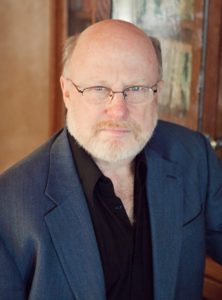 Henry Zecher is a former newspaper sports writer and Federal government human resources specialist, and has been a free-lance writer for years. Before he met William Gillette, his most notable works were his evaluation of German Reformer Martin Luther’s impact on the English Bible (first published in Christianity Today Magazine, October 23, 1983), and his analysis of the Papyrus Ipuwer, claimed by controversial scholar Immanuel Velikovsky to have been an Egyptian version of the plagues on Egypt described in the Book of Exodus (published in The Velikovskian, A Journal of Myth, History and Science, Vol. III, No. 1, January 1997; rather than being the same story told by Moses, Henry demonstrated that Moses had written Act I of the great drama and escaped with his people across the Red Sea, while Ipuwer wrote Act II, describing the aftermath: the devastation wrought by the Plagues and the foreign invasion that followed). Henry’s first book was William Gillette, America’s Sherlock Holmes (Xlibris, 2011), a biography of one of America’s greatest actors and the man who both created our visual image of Sherlock Holmes, and demonstrated how actors would portray him for the following century. Now retired from Federal service, Zecher is a full-time free-lance writer and frequent speaker working on his next project and helping wife Gay with her snap-on jewelry business. He and Gay live in Waukesha, Wisconsin with their Maine Coon cat, Smokey. Other writings can be read on his website.
Henry Zecher is a former newspaper sports writer and Federal government human resources specialist, and has been a free-lance writer for years. Before he met William Gillette, his most notable works were his evaluation of German Reformer Martin Luther’s impact on the English Bible (first published in Christianity Today Magazine, October 23, 1983), and his analysis of the Papyrus Ipuwer, claimed by controversial scholar Immanuel Velikovsky to have been an Egyptian version of the plagues on Egypt described in the Book of Exodus (published in The Velikovskian, A Journal of Myth, History and Science, Vol. III, No. 1, January 1997; rather than being the same story told by Moses, Henry demonstrated that Moses had written Act I of the great drama and escaped with his people across the Red Sea, while Ipuwer wrote Act II, describing the aftermath: the devastation wrought by the Plagues and the foreign invasion that followed). Henry’s first book was William Gillette, America’s Sherlock Holmes (Xlibris, 2011), a biography of one of America’s greatest actors and the man who both created our visual image of Sherlock Holmes, and demonstrated how actors would portray him for the following century. Now retired from Federal service, Zecher is a full-time free-lance writer and frequent speaker working on his next project and helping wife Gay with her snap-on jewelry business. He and Gay live in Waukesha, Wisconsin with their Maine Coon cat, Smokey. Other writings can be read on his website.
♦
Ernest Bloomfield Zeisler
Ernest B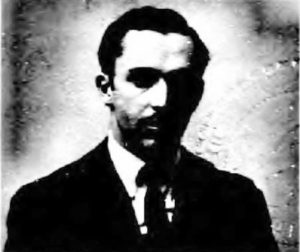 loomfield Zeisler was born August 23, 1899 in Chicago, IL .Zeisler grew up in a home where his parents – an attorney father and concert pianist mother – hosted salons for well-known philanthropists, physicians, authors, civic leaders, musicians, actors, educators and politicians, including William Jennings Bryan. He attended the University of Chicago and was a member of the Department of Mathematics 1919-1922 when he received his Ph.D. in Mathematics. In 1931 he co-authored The Law of Gravitation in Relativity, and in 1955 he wrote Foundations of Logic and Mathematics. His correspondence with Albert Einstein is held at the Albert Einstein Archives in Jerusalem. Einstein reportedly said that Zeisler was “one of the few people in the world who understood his theory of relativity.” (Hall, pg. 5) He became a physician with a practice in Internal Medicine from 1929-1959 as well as an associate professor of medicine at the University of Illinois School of Medicine. He contributed to medical literature, including “A Case from Sophocles” and “The Great Salk Vaccine Fiasco” and published Electrocardiography: Principles and Practice. Turning to ano
loomfield Zeisler was born August 23, 1899 in Chicago, IL .Zeisler grew up in a home where his parents – an attorney father and concert pianist mother – hosted salons for well-known philanthropists, physicians, authors, civic leaders, musicians, actors, educators and politicians, including William Jennings Bryan. He attended the University of Chicago and was a member of the Department of Mathematics 1919-1922 when he received his Ph.D. in Mathematics. In 1931 he co-authored The Law of Gravitation in Relativity, and in 1955 he wrote Foundations of Logic and Mathematics. His correspondence with Albert Einstein is held at the Albert Einstein Archives in Jerusalem. Einstein reportedly said that Zeisler was “one of the few people in the world who understood his theory of relativity.” (Hall, pg. 5) He became a physician with a practice in Internal Medicine from 1929-1959 as well as an associate professor of medicine at the University of Illinois School of Medicine. He contributed to medical literature, including “A Case from Sophocles” and “The Great Salk Vaccine Fiasco” and published Electrocardiography: Principles and Practice. Turning to ano
ther subject, his 1956 book The Haymarket Riot, focused on his father Sigmund Zeisler’s role as co-counsel for the Haymarket case defendants. His papers pertaining to the book are kept at the Jacob Rader Marcus Center of the American Jewish Archives. He also contributed to The American Journal of Economics and Sociology. Zeisler served as Treasurer of the Cliff Dwellers Club, president of the Chicago Literary Club and was a member of the Chicago Symphony Orchestral Association. He was also a chess enthusiast; in 1963 the U.S. Open Chess Tournament was named the Dr. Ernest B. Zeisler Memorial Tournament in tribute to him. In 1953 he published Baker Street Chronology, a work that remains a standard in dating the Canon and includes a preface written by Vincent Starrett. The July 1953 Baker Street Journal called it a “volume of brilliant scholarship.” He was a frequent contributor to the Journal, with articles and commentaries, as well as to The Sherlock Holmes Journal. The October 1955 Journal referenced Zeisler as a “doctor of philosophy and noted scholar.” He received the investiture of “The Golden Pince-Nez” from The Baker Street Irregulars in 1957. Zeisler died on December 27, 1962 in Chicago IL.
Biographical information provided courtesy of Julie McKuras.
